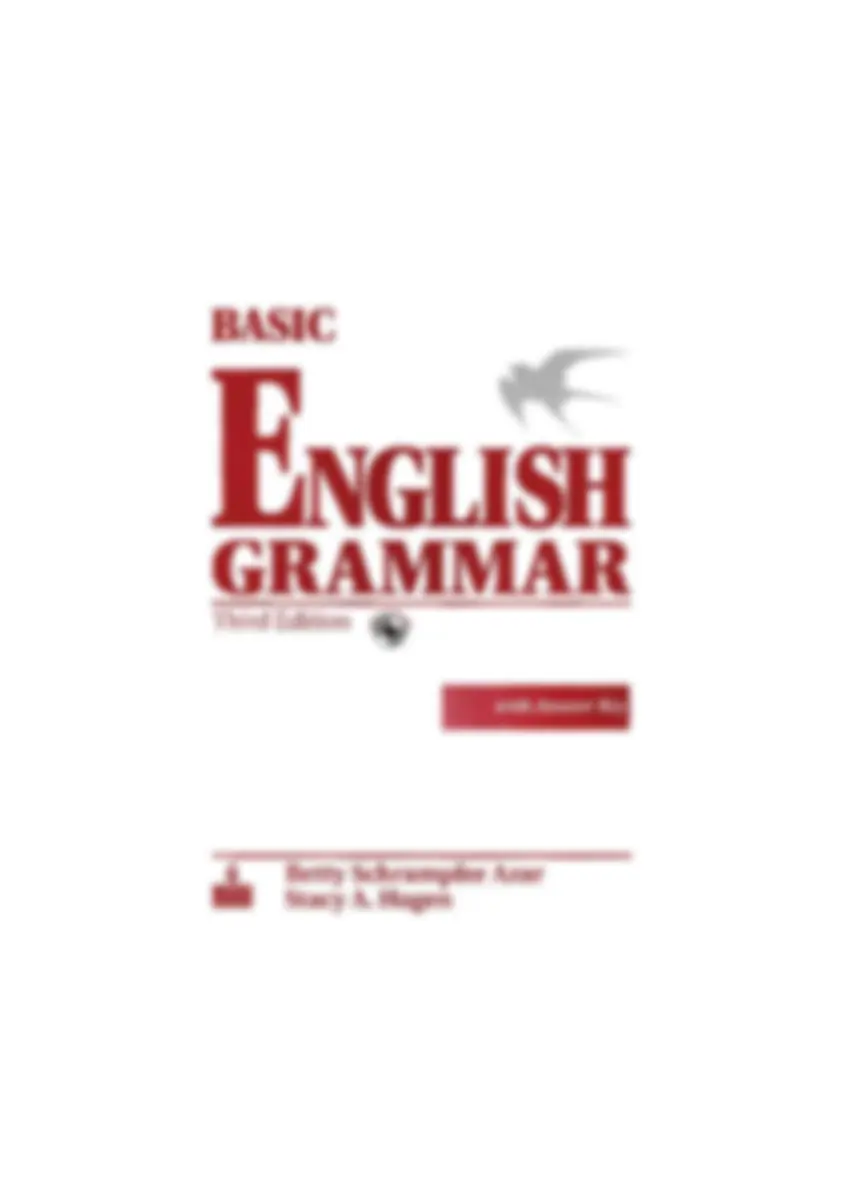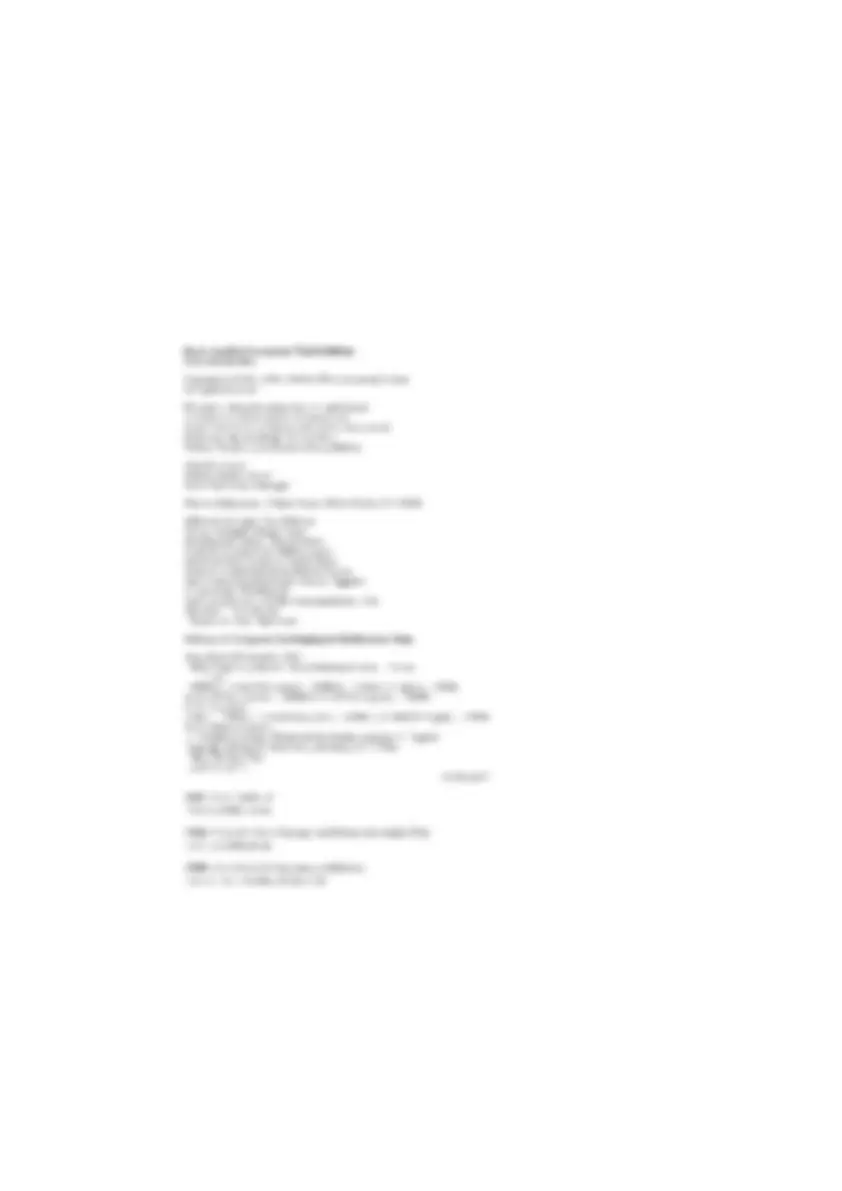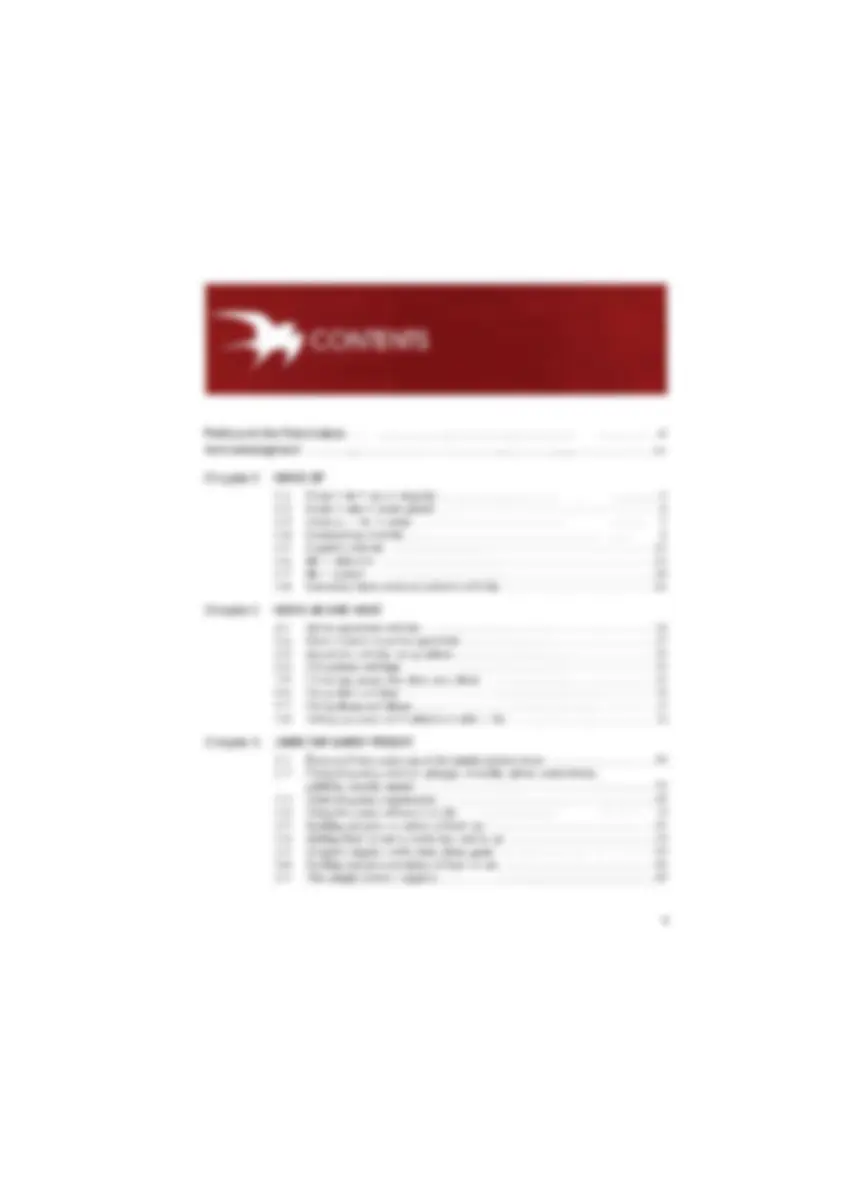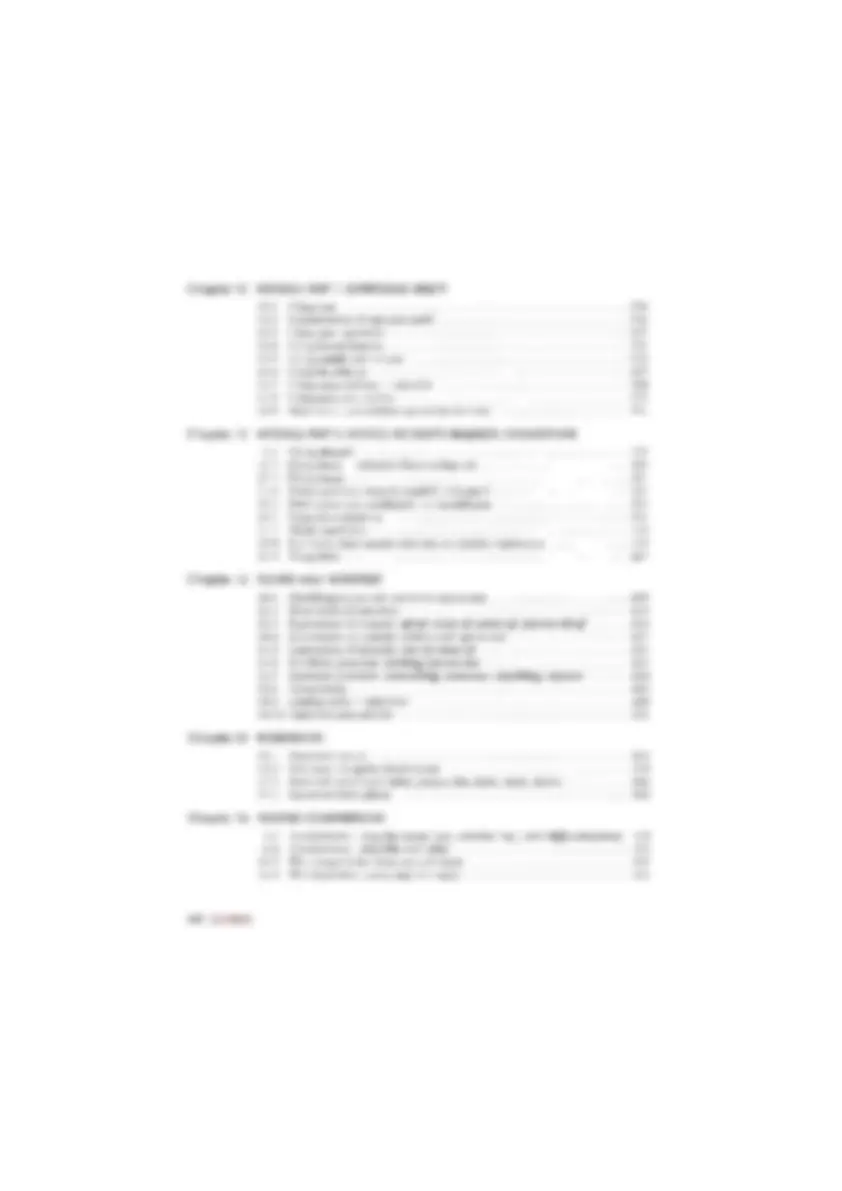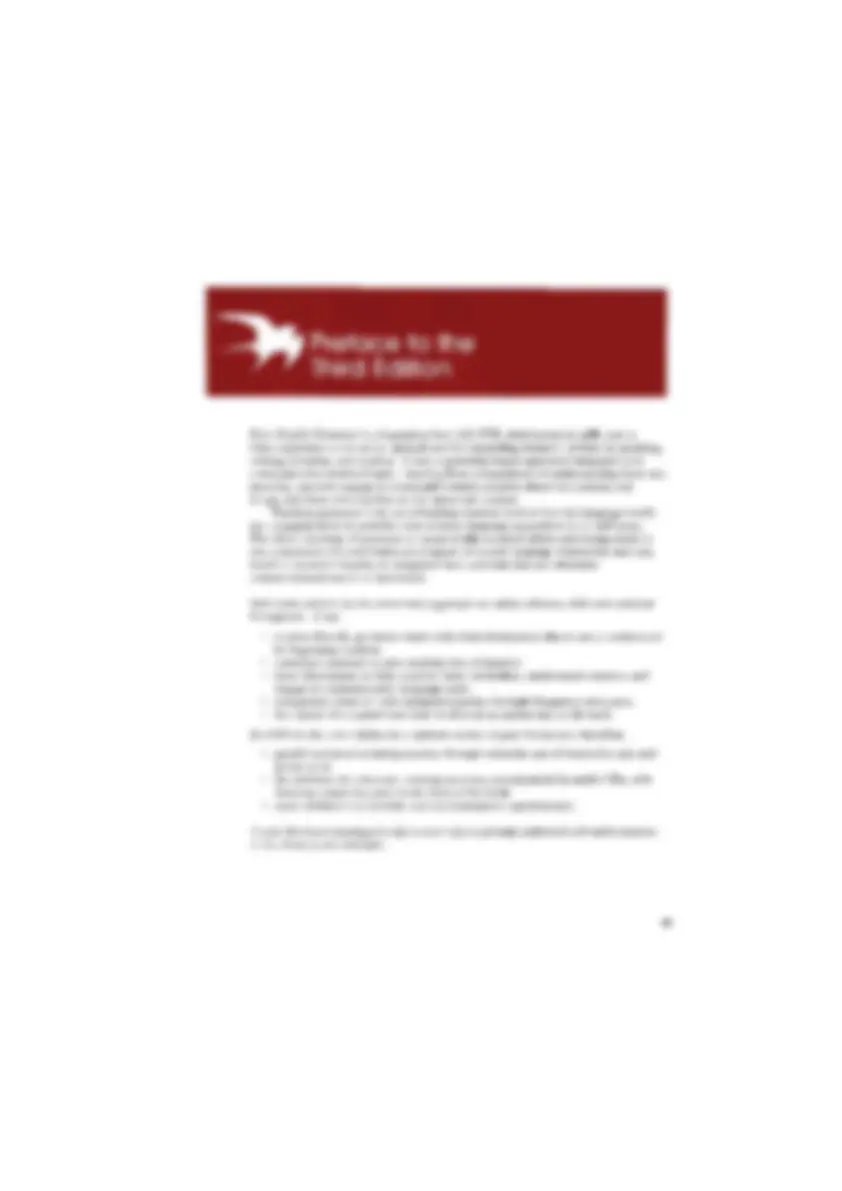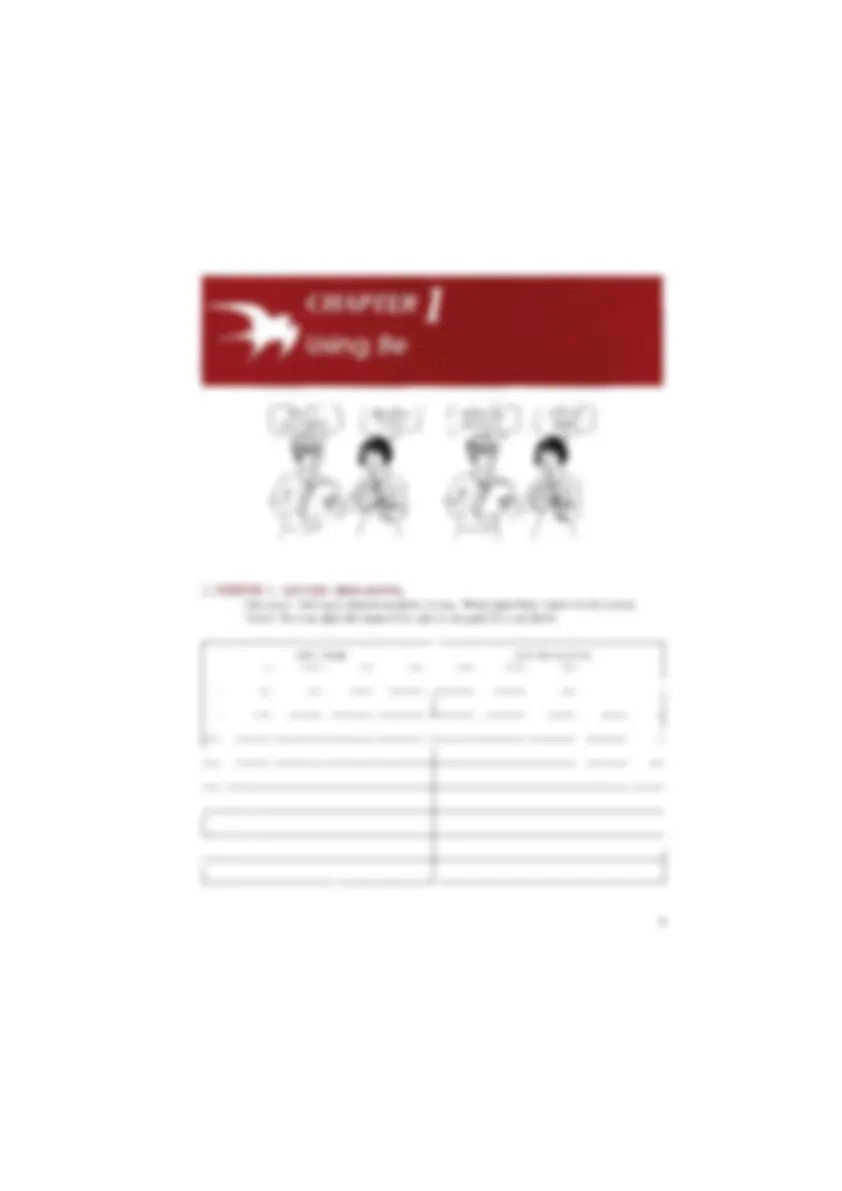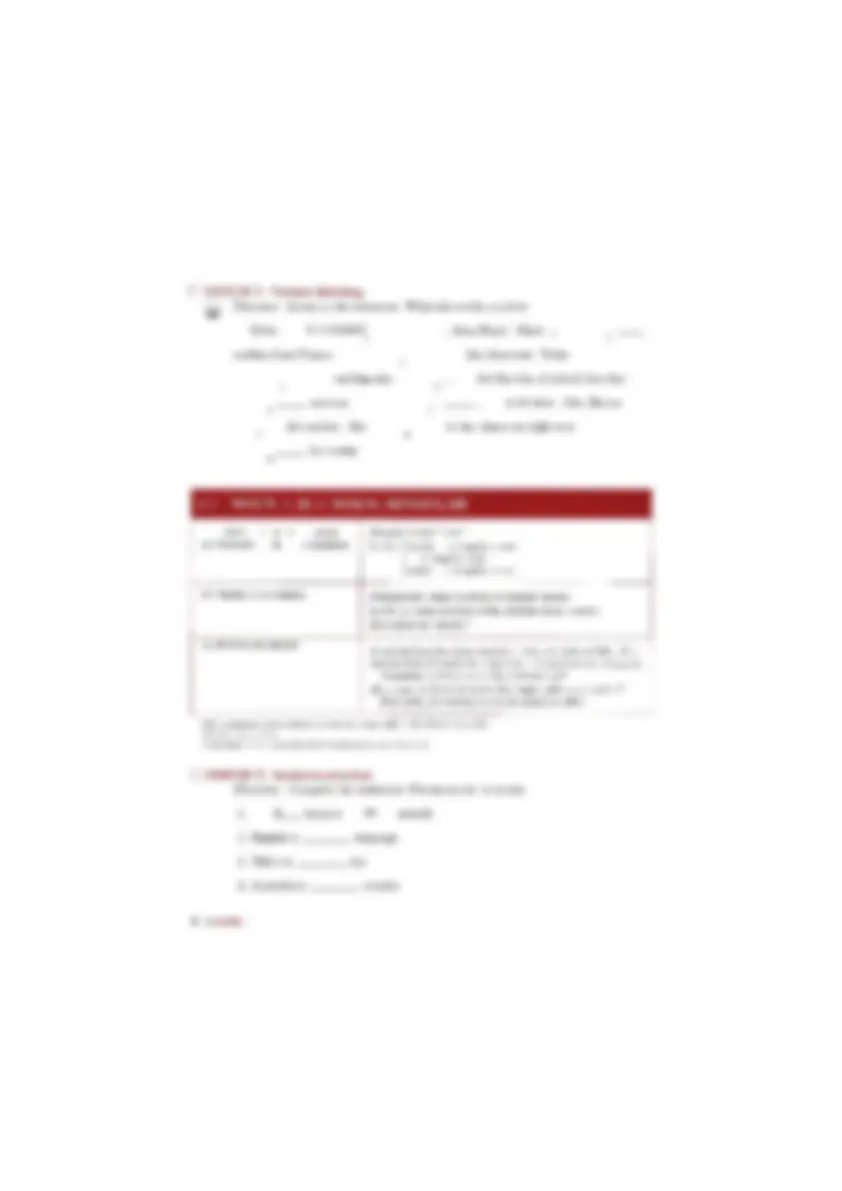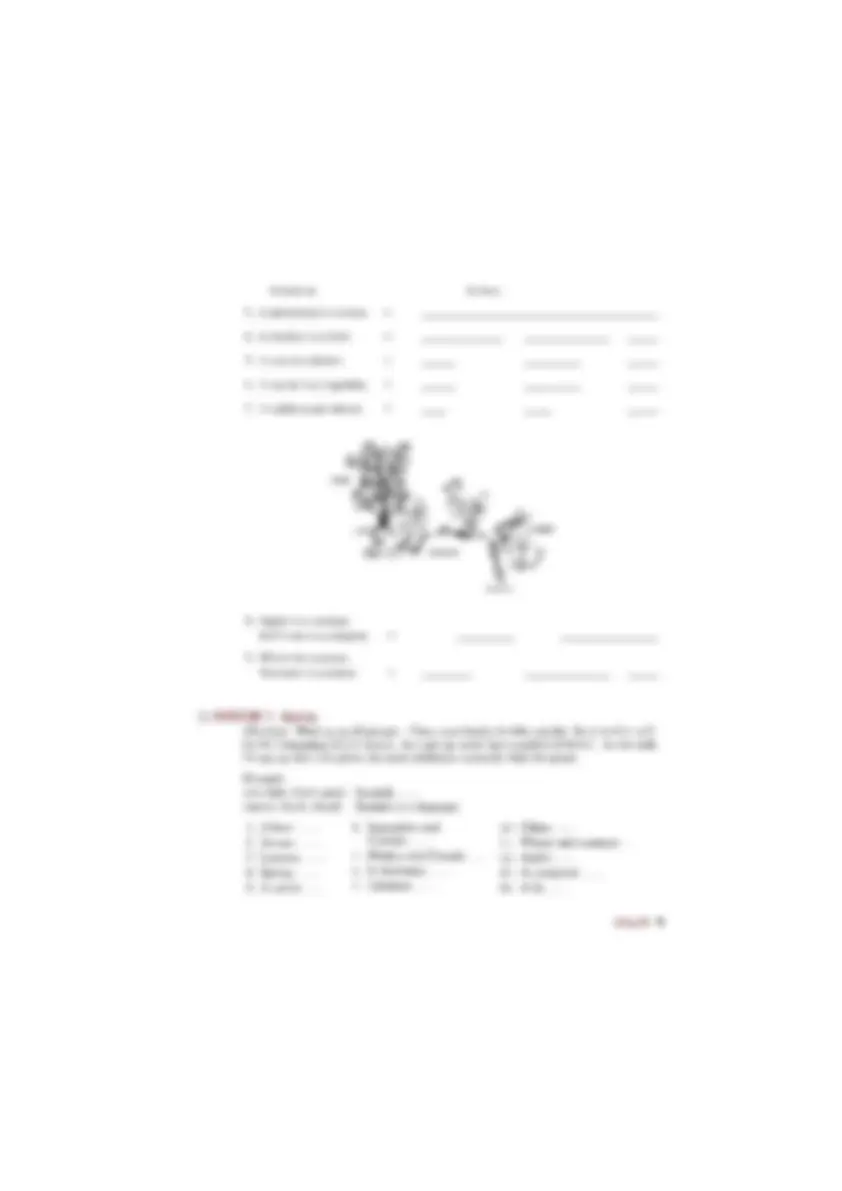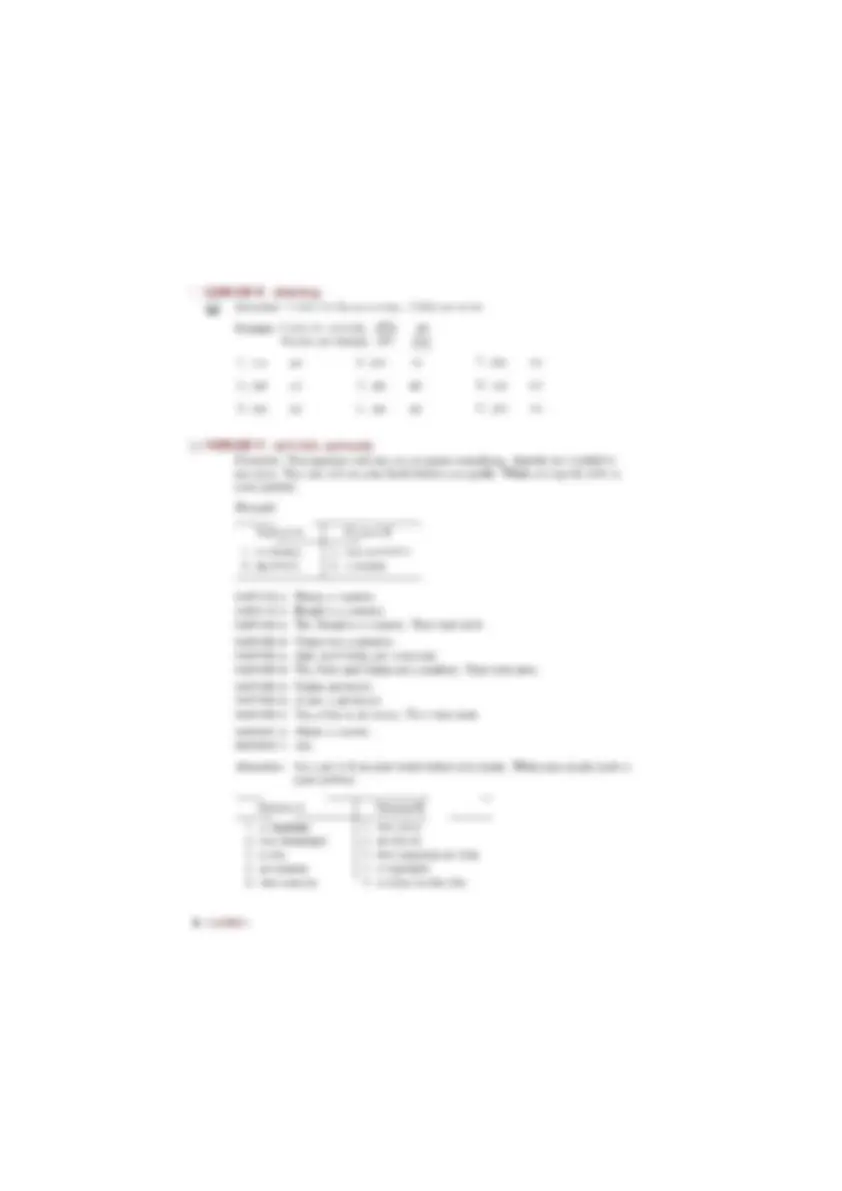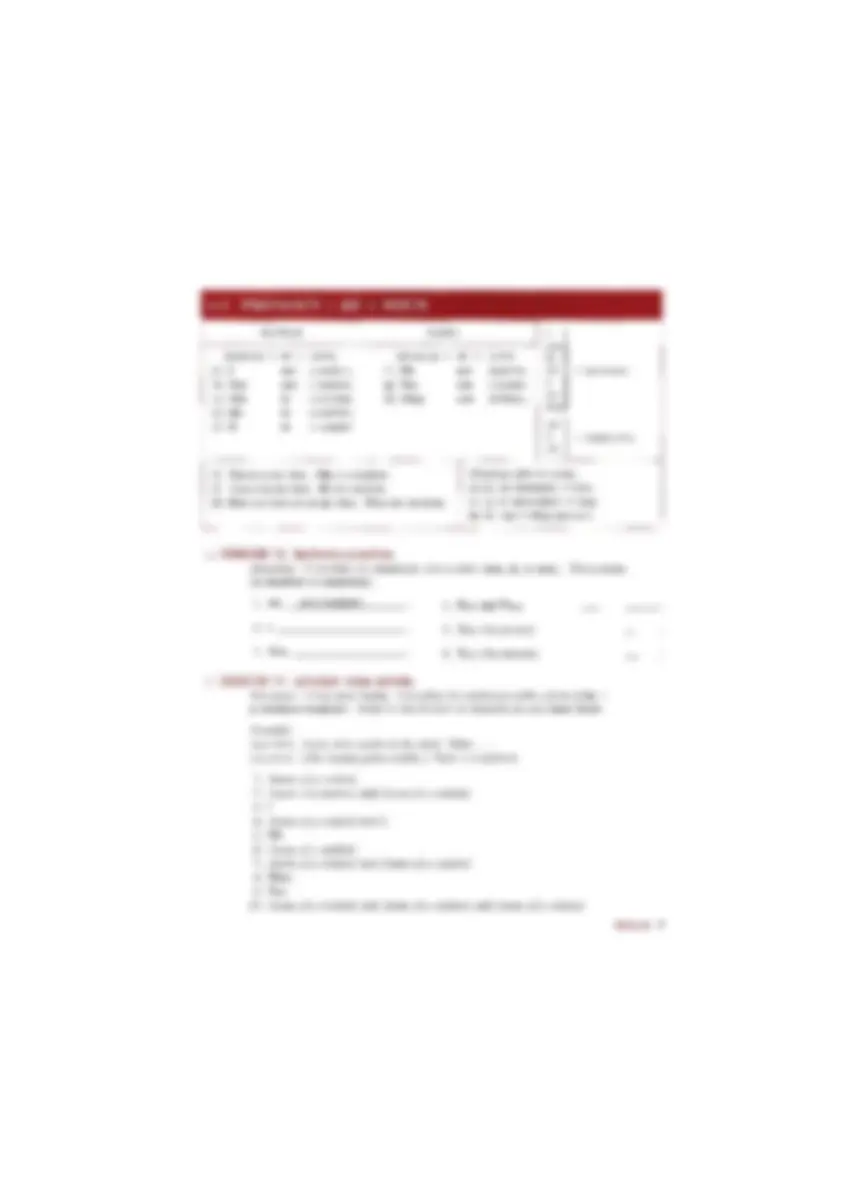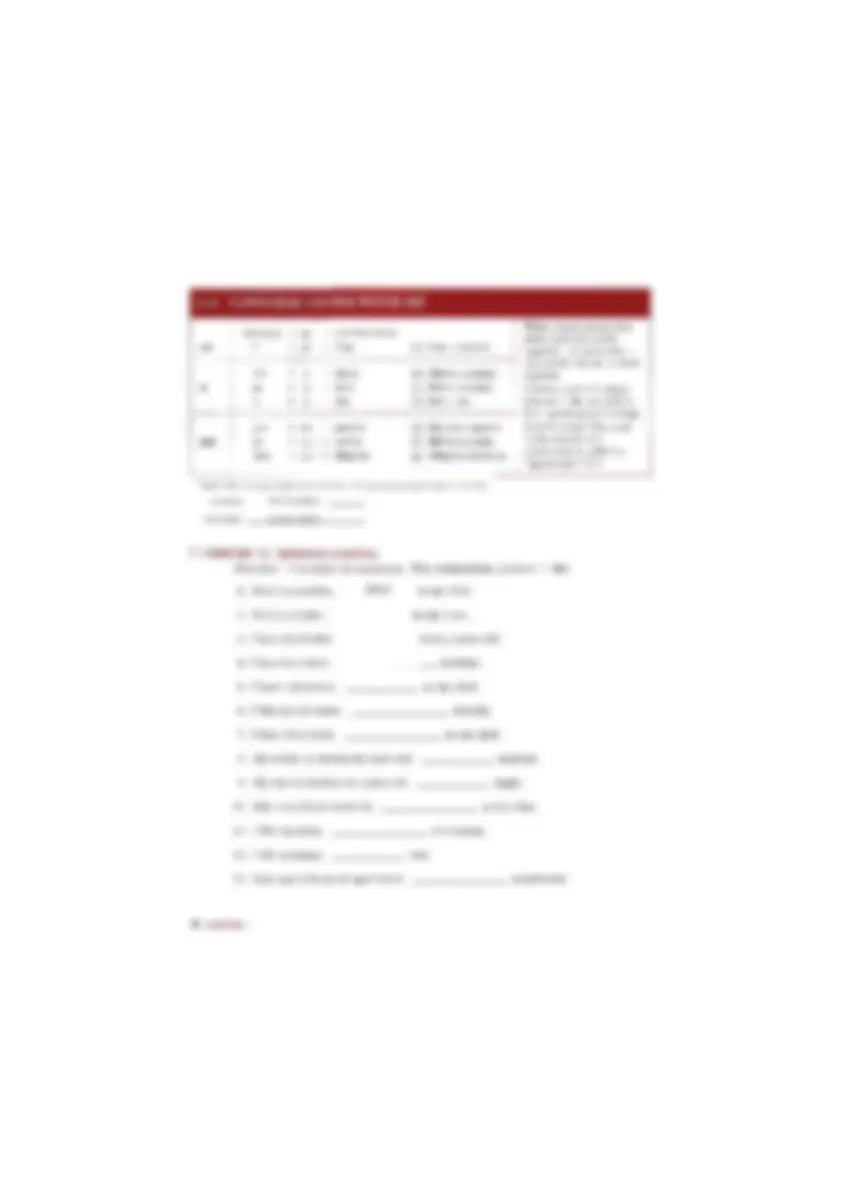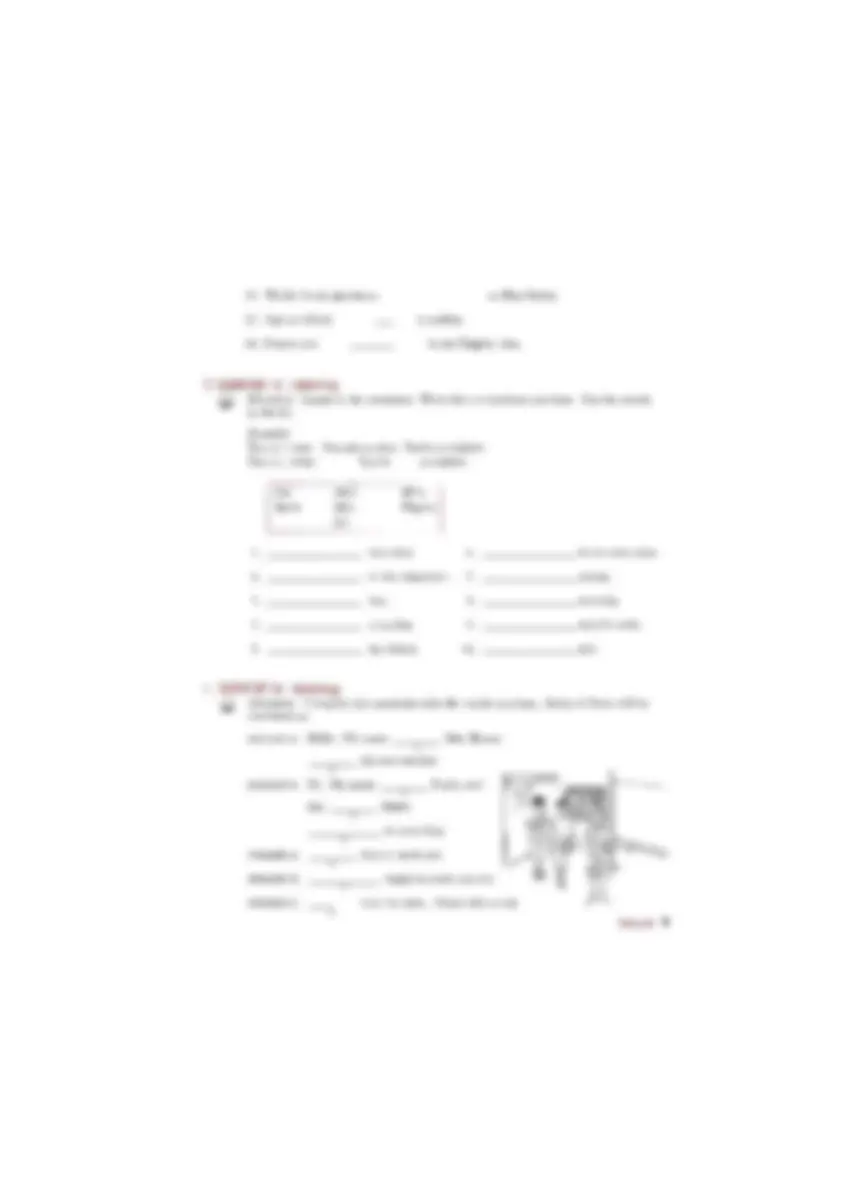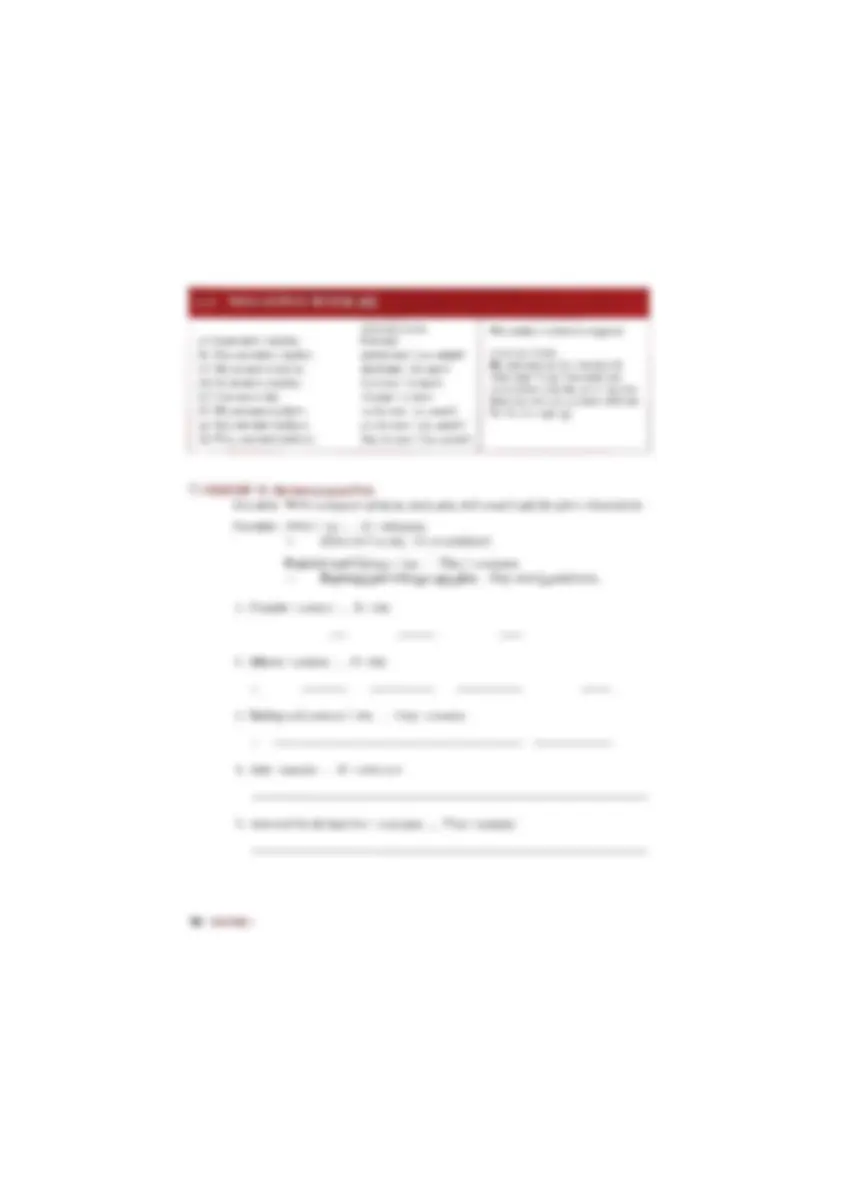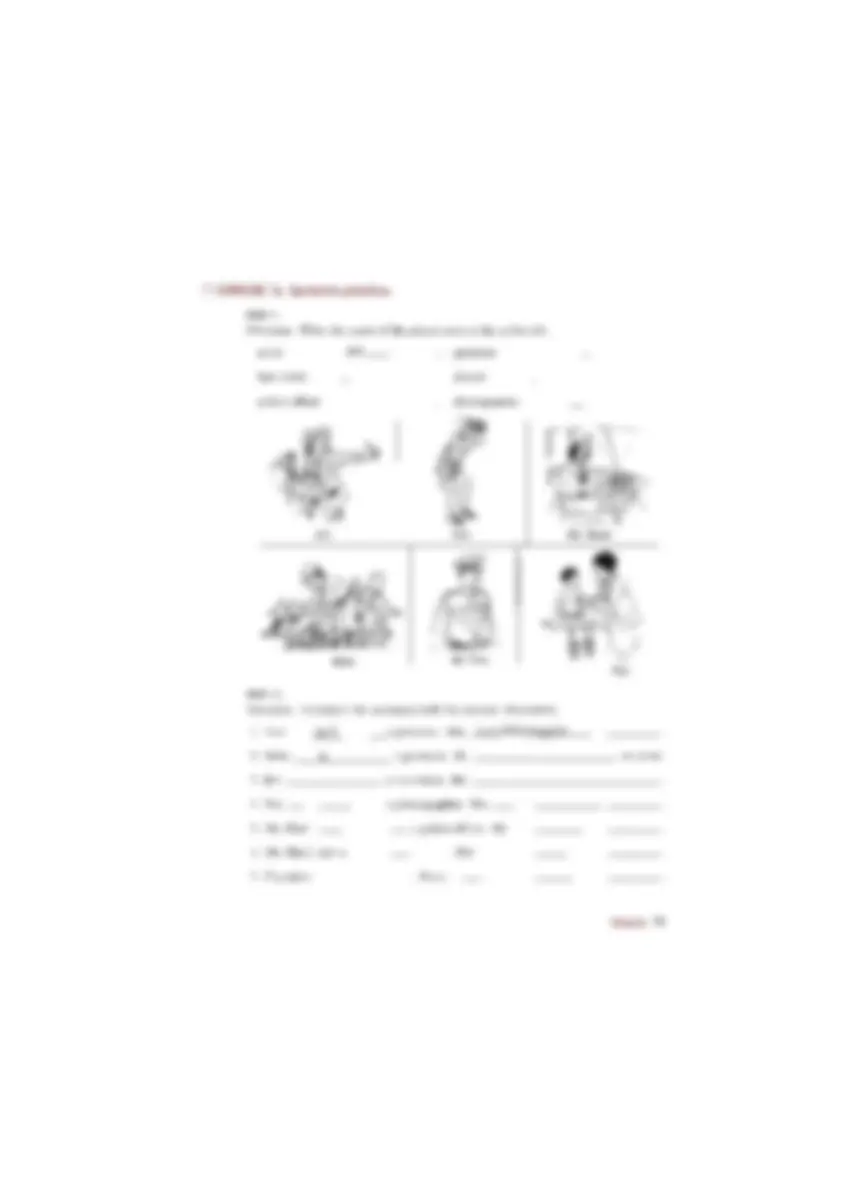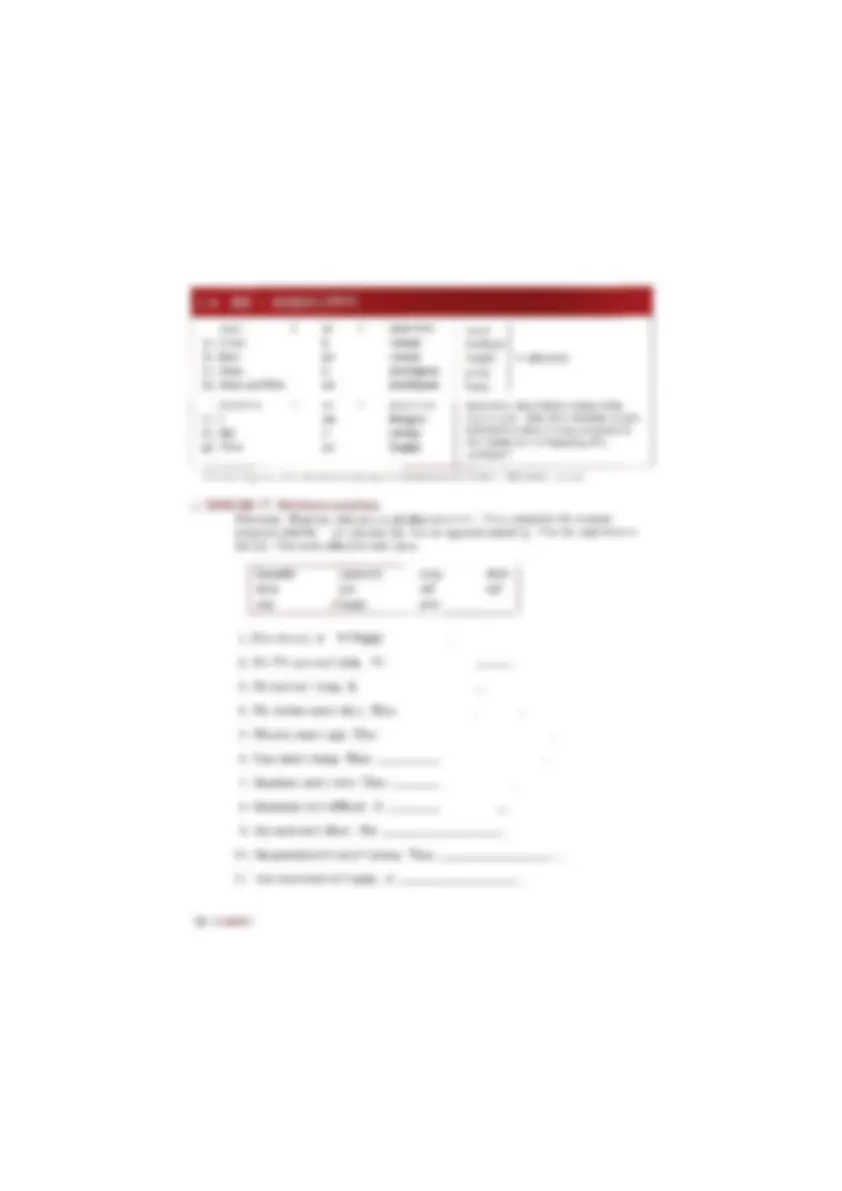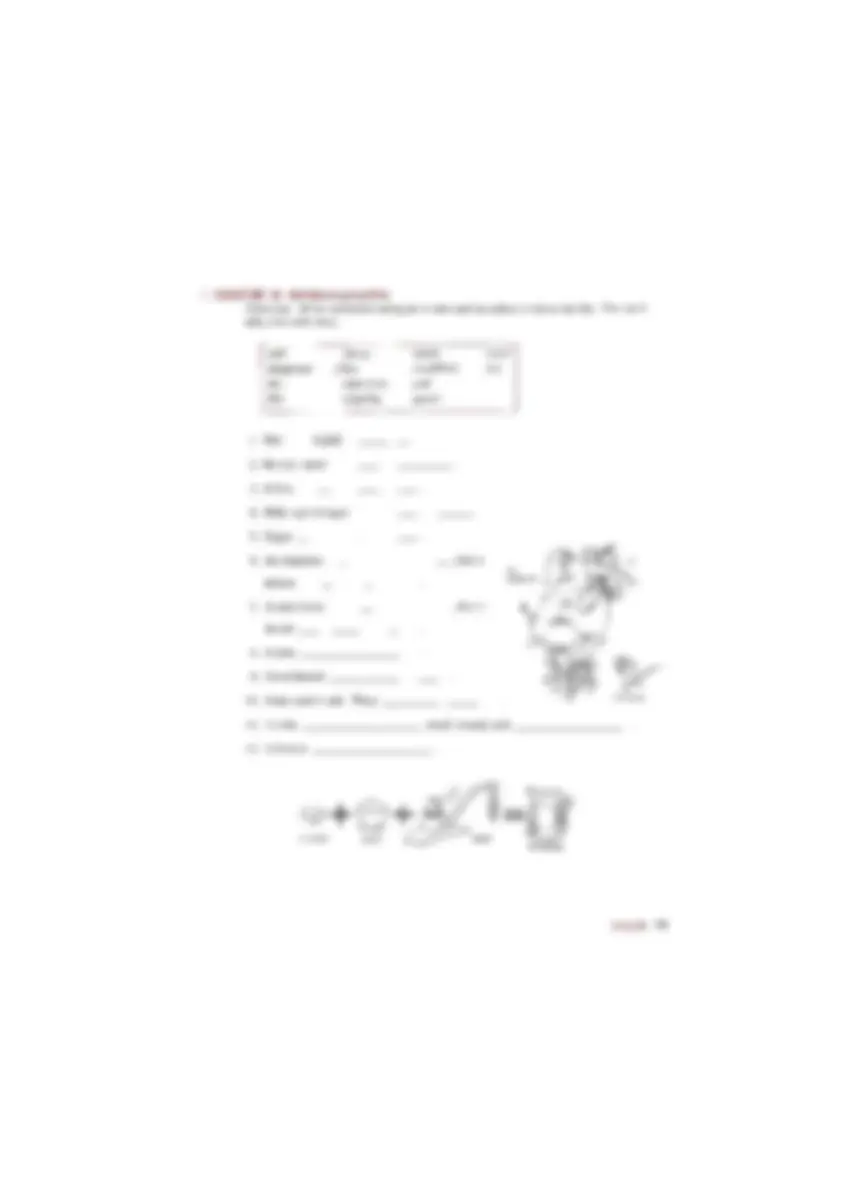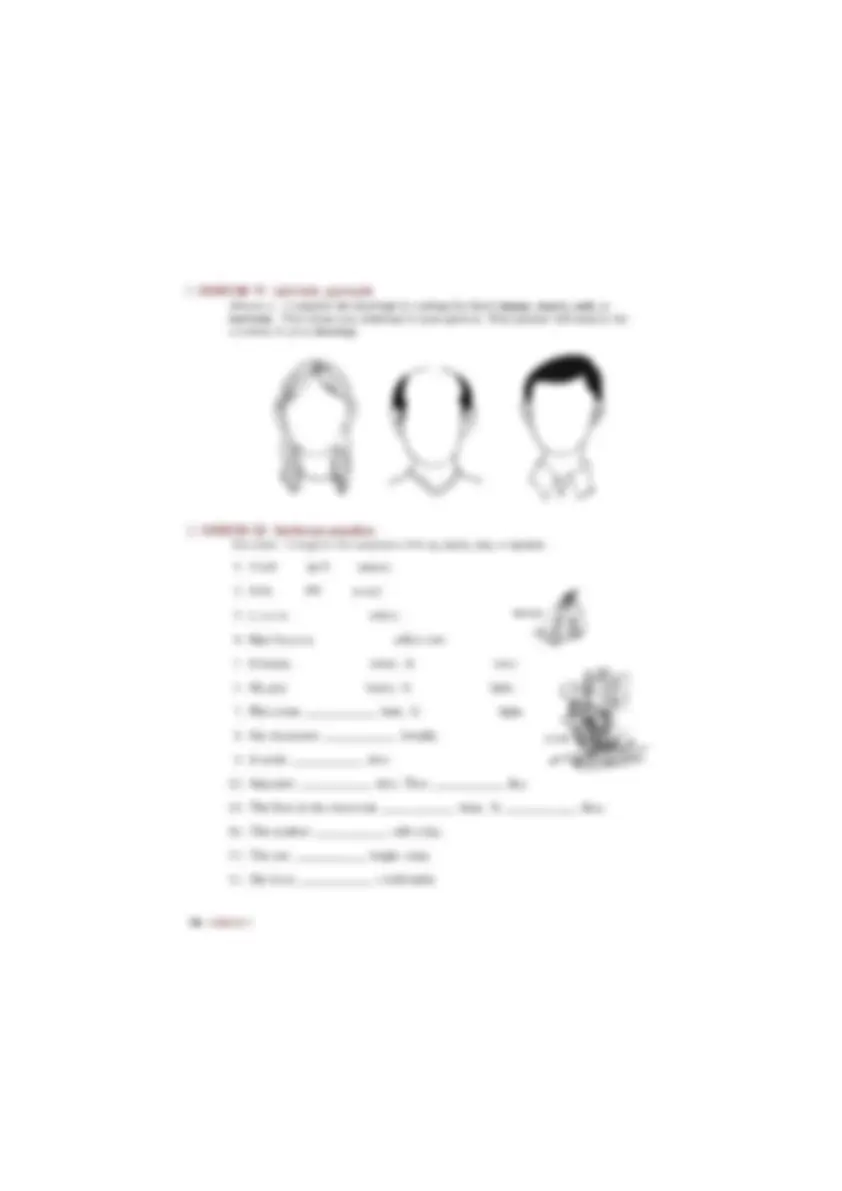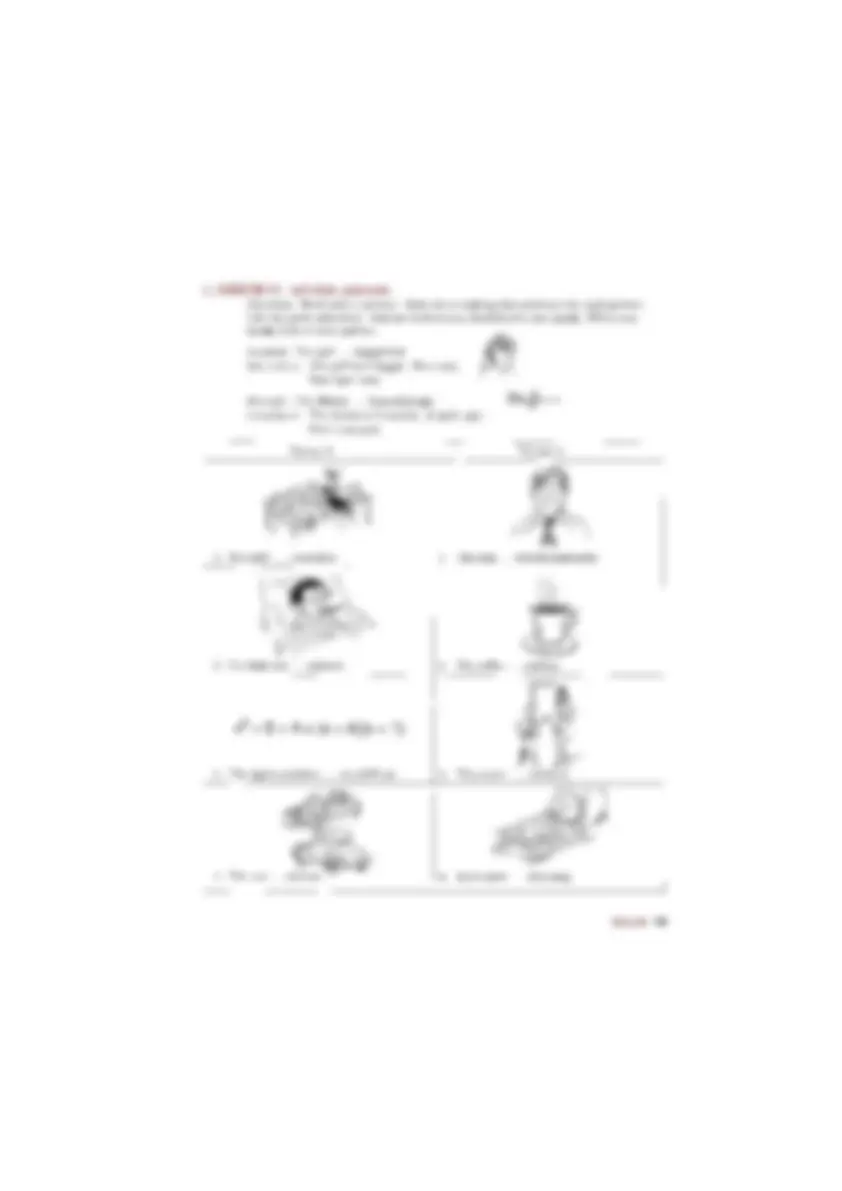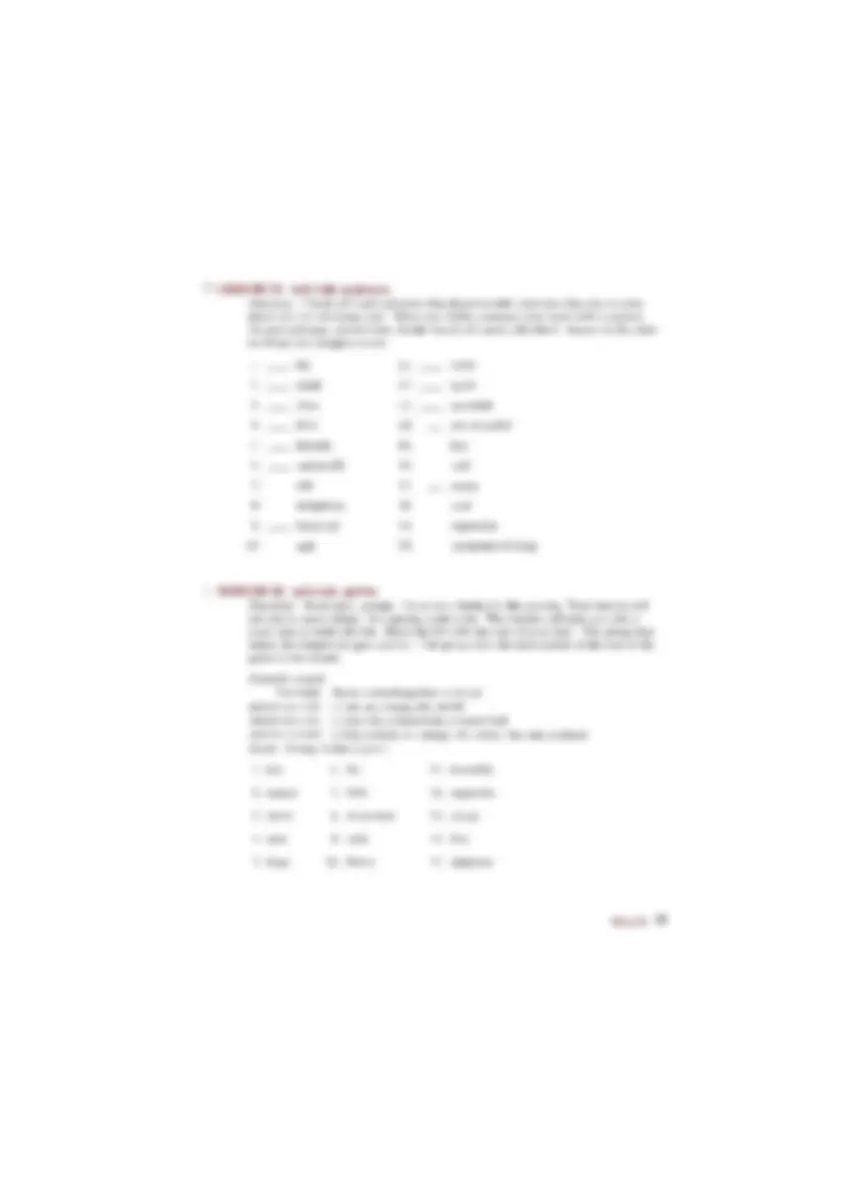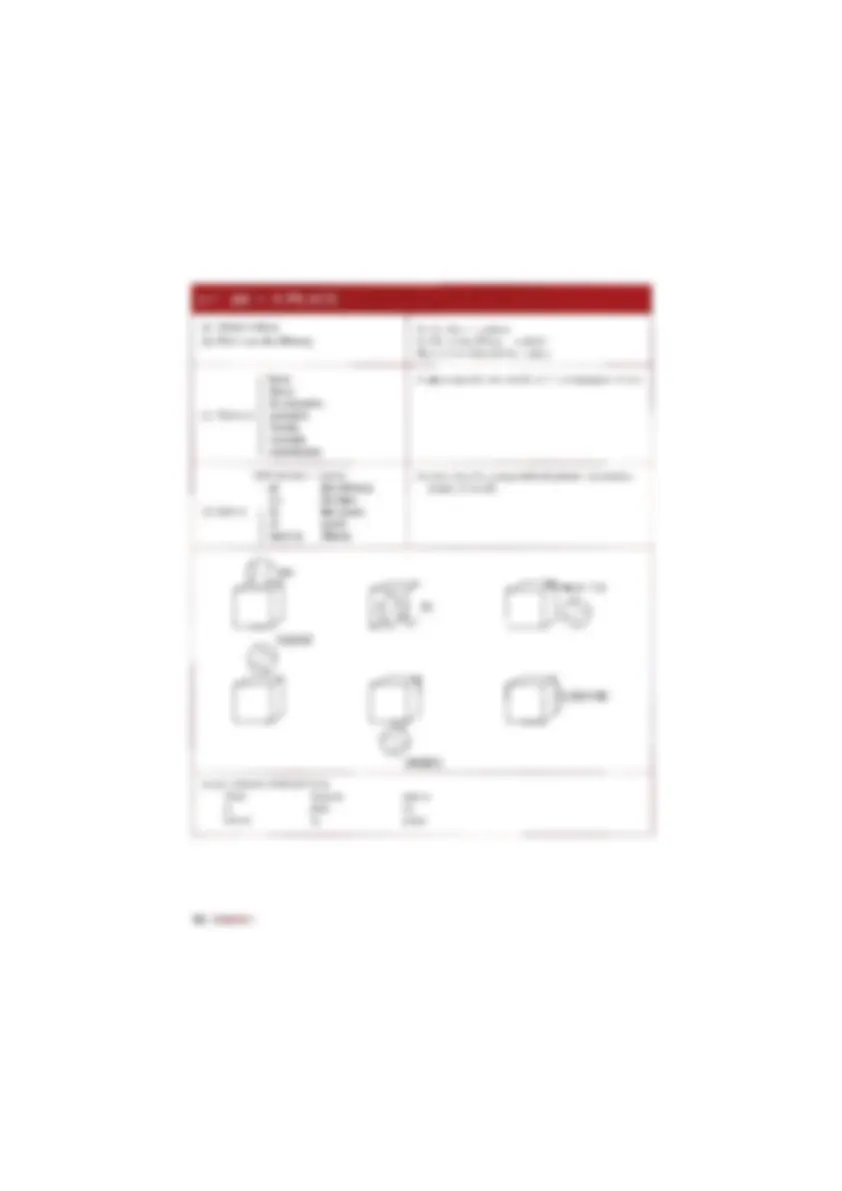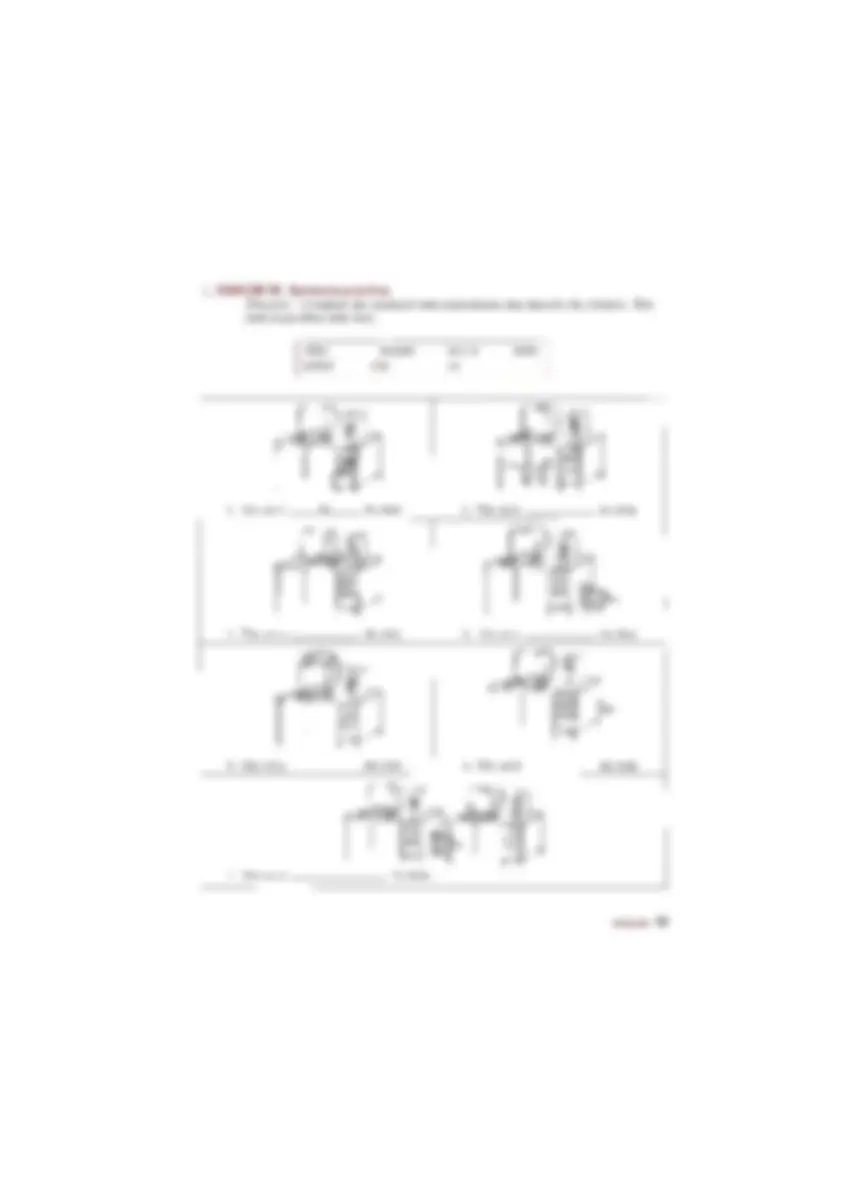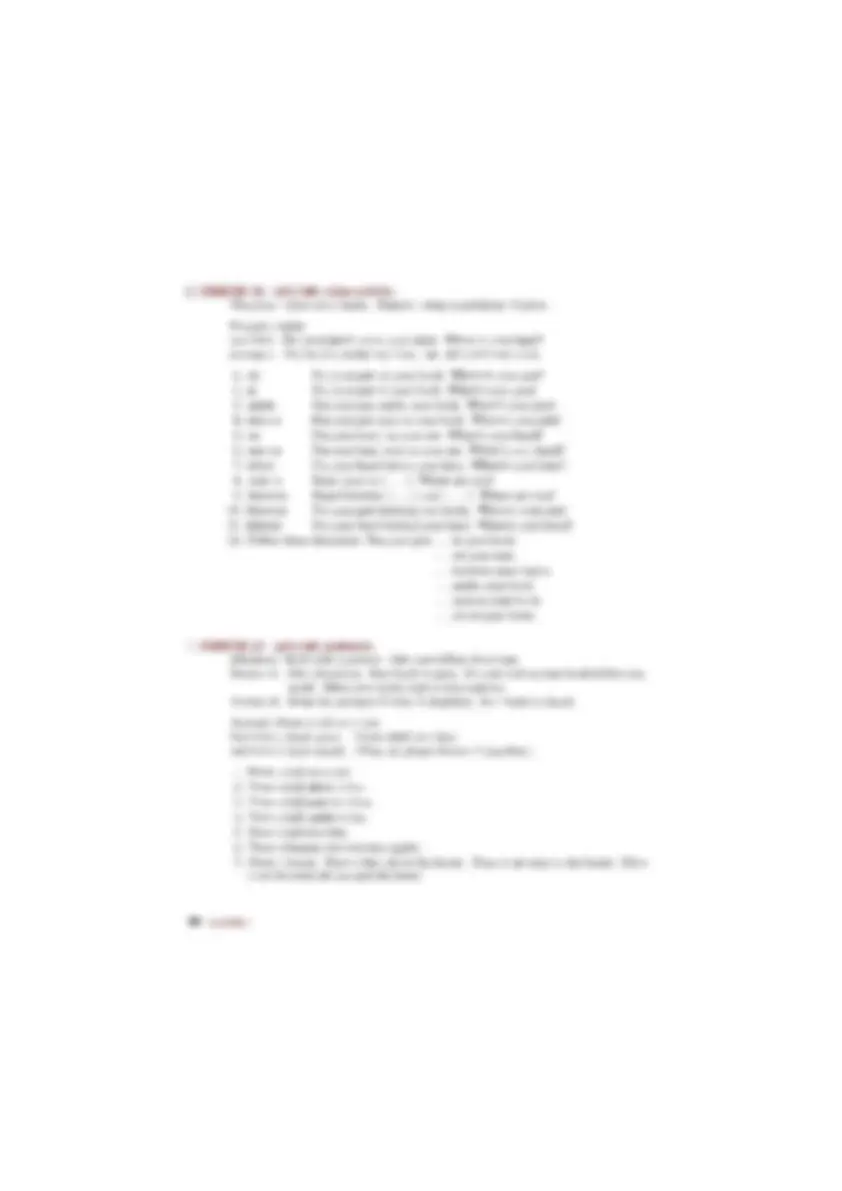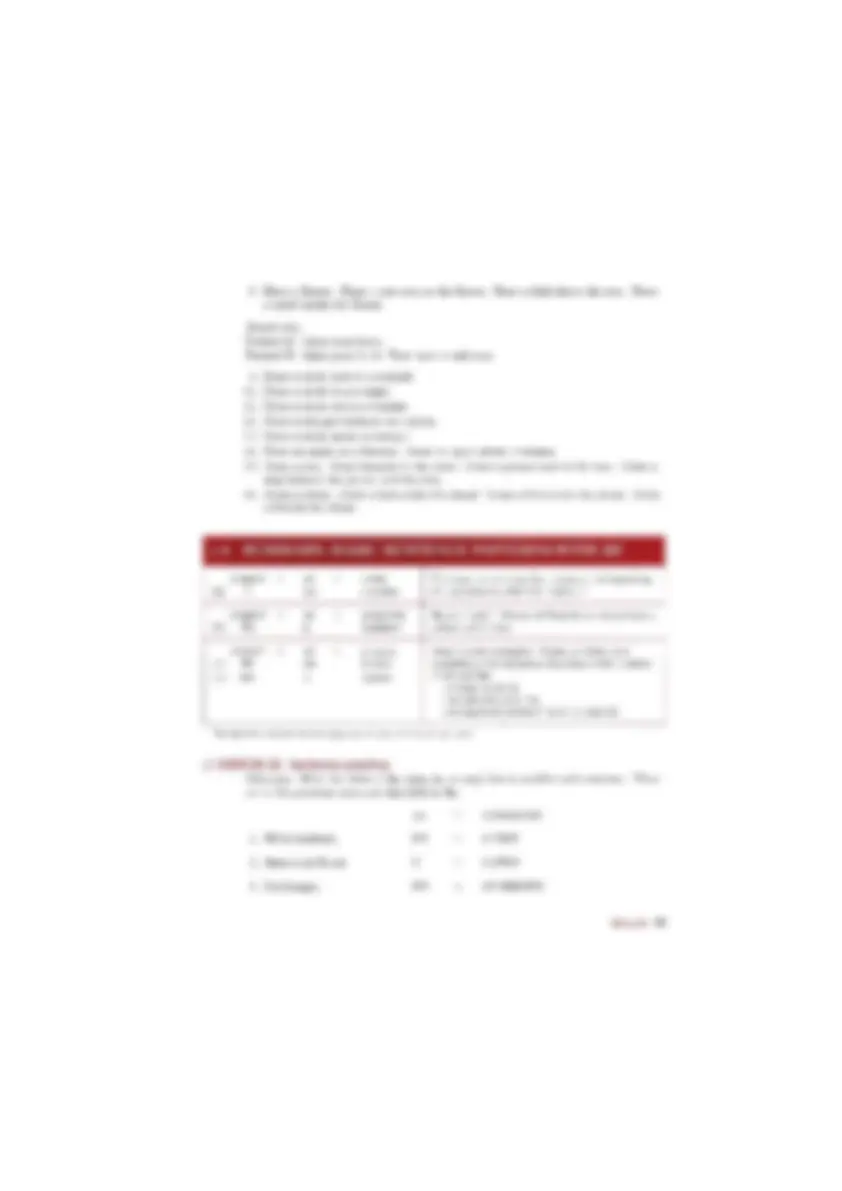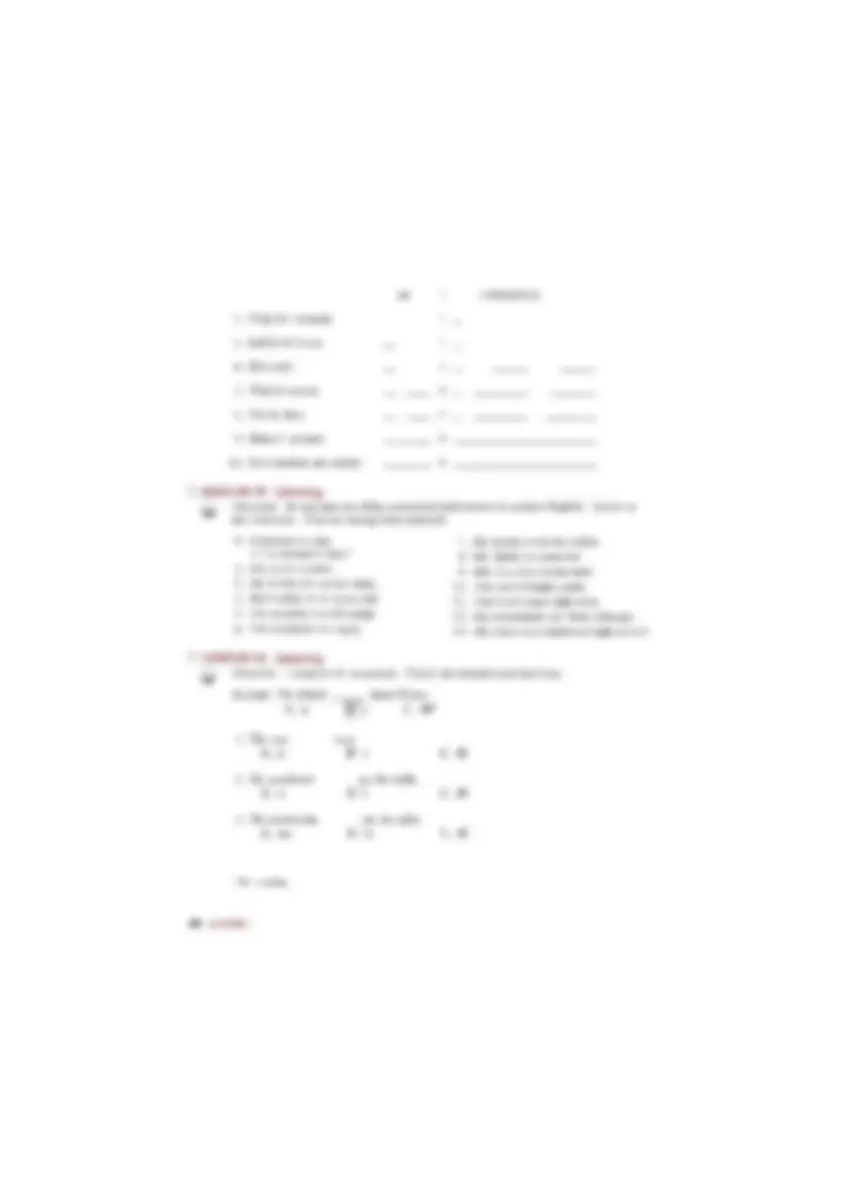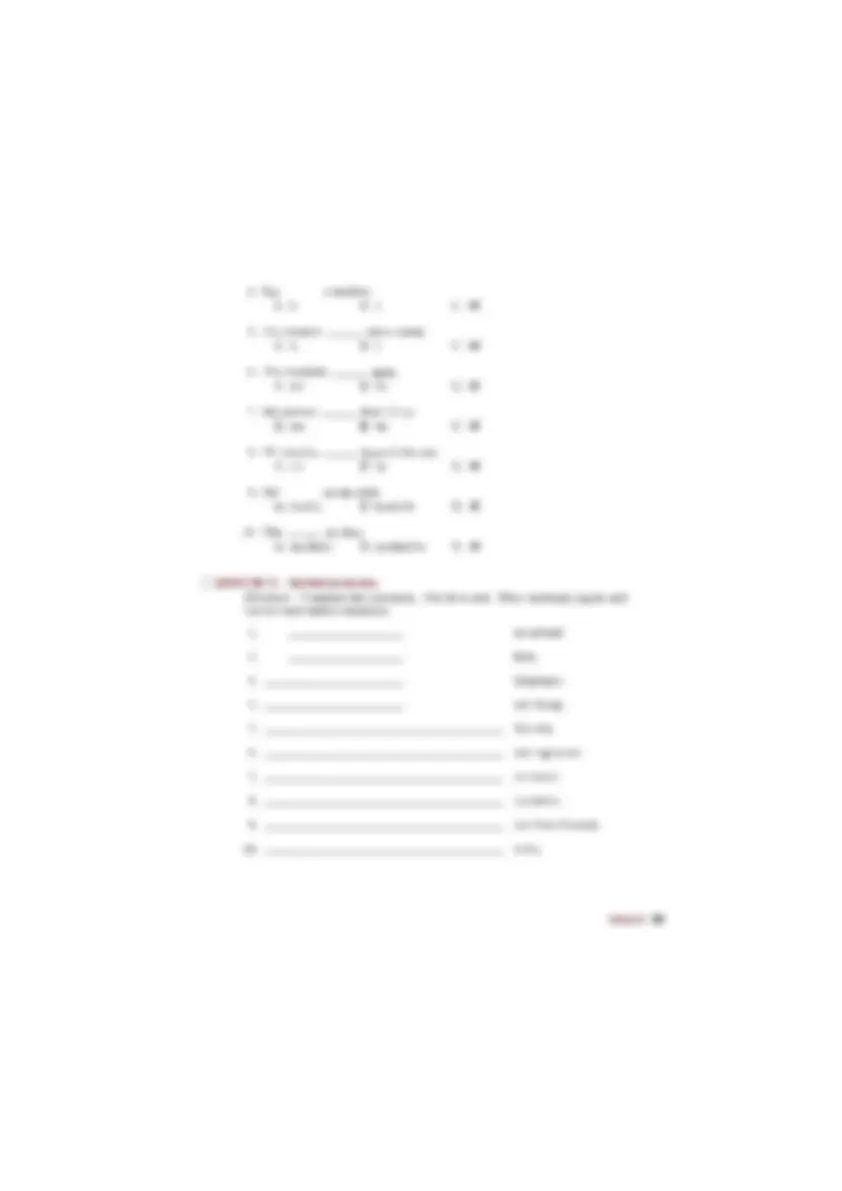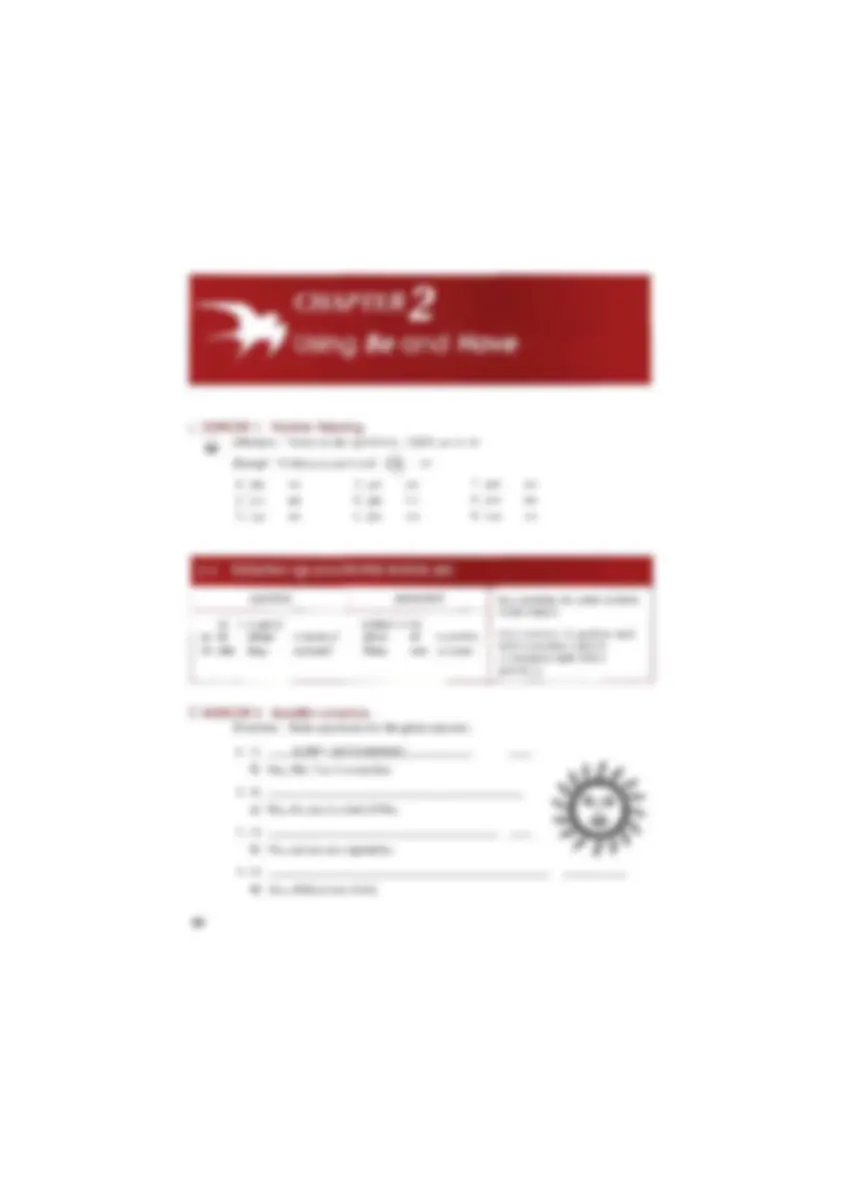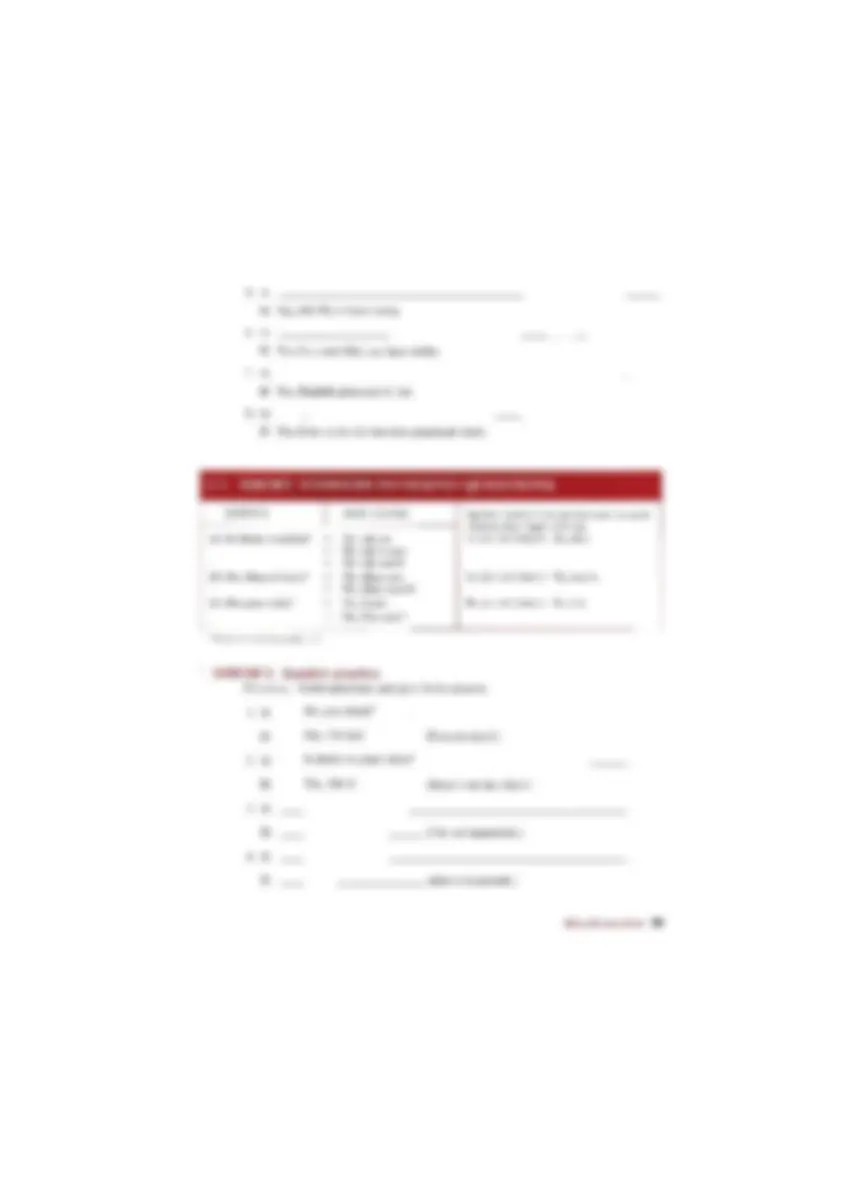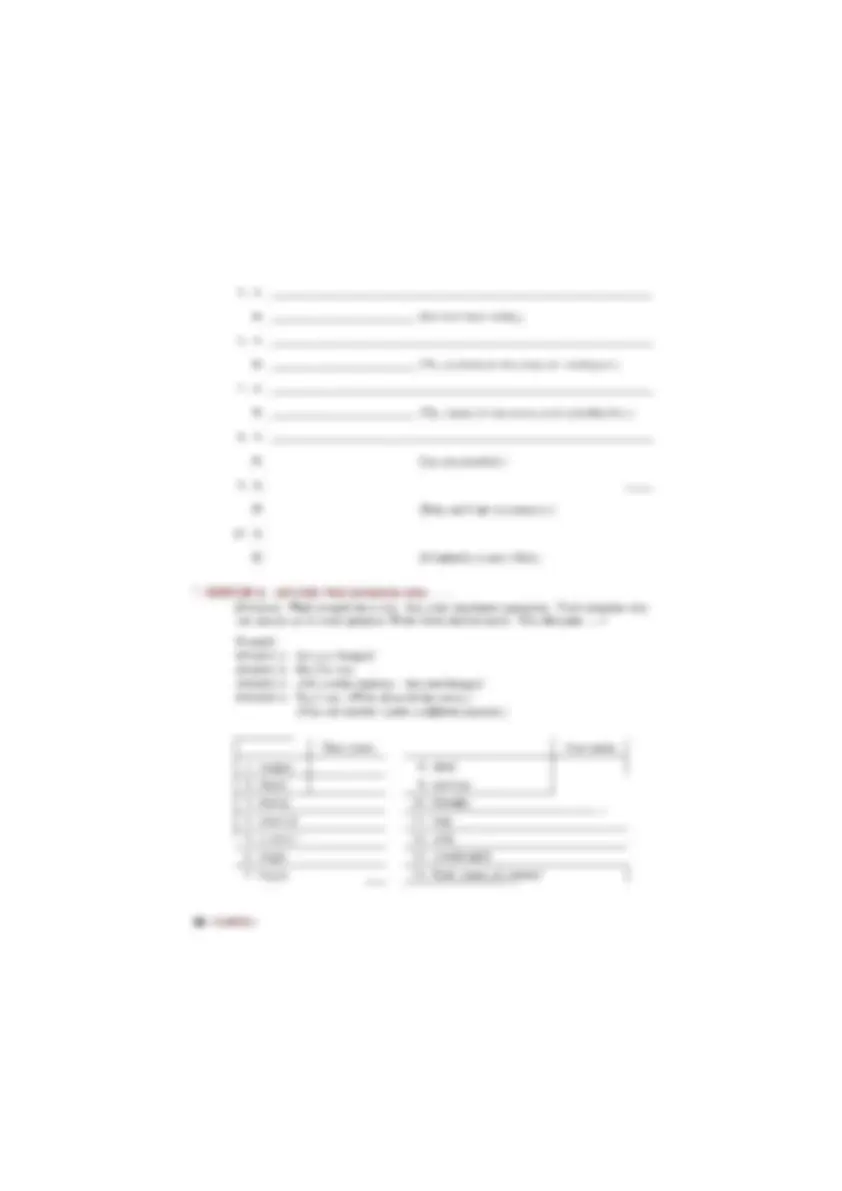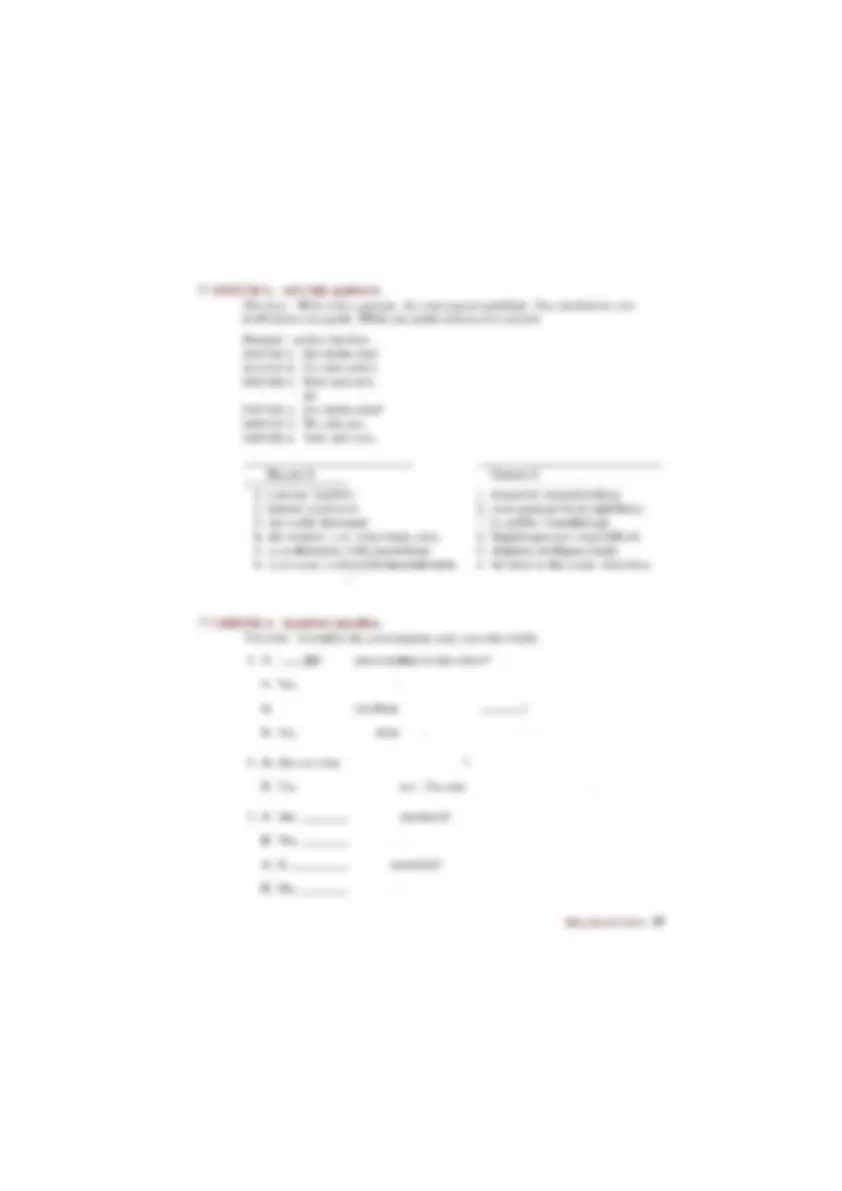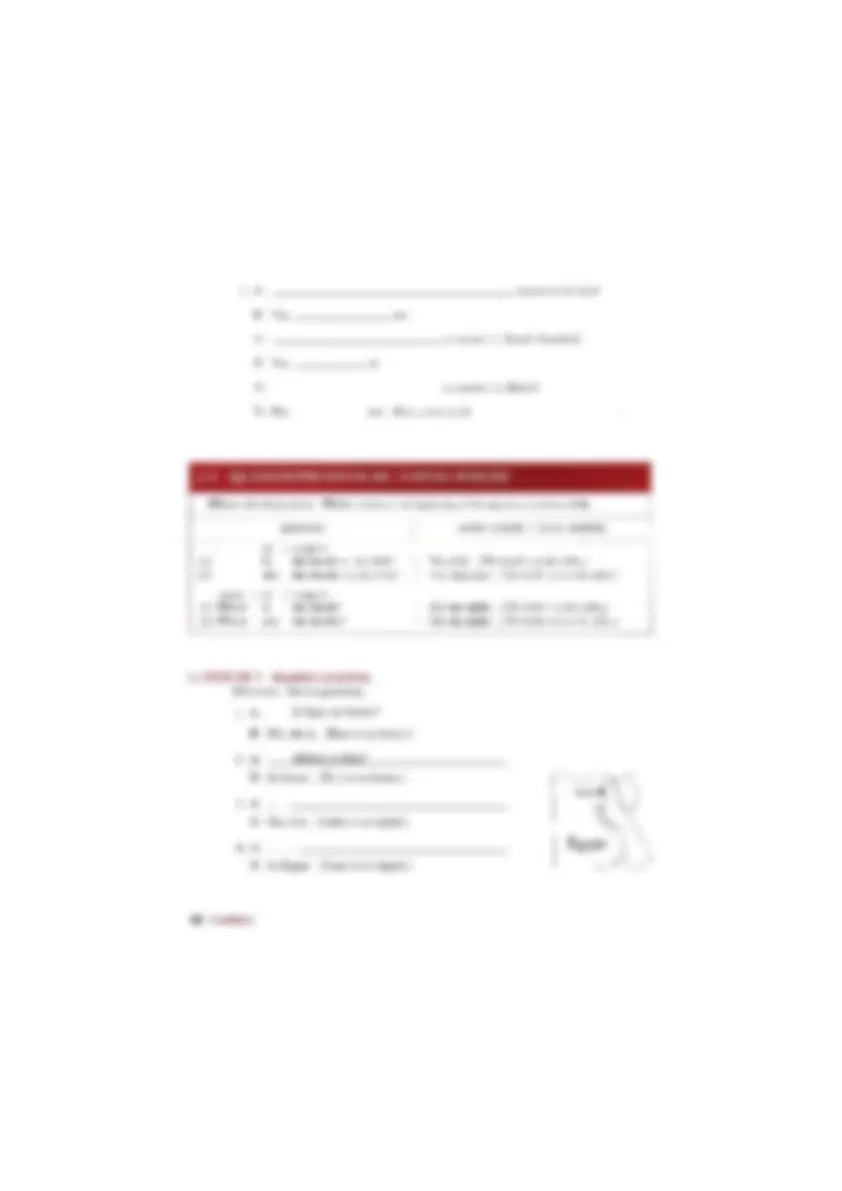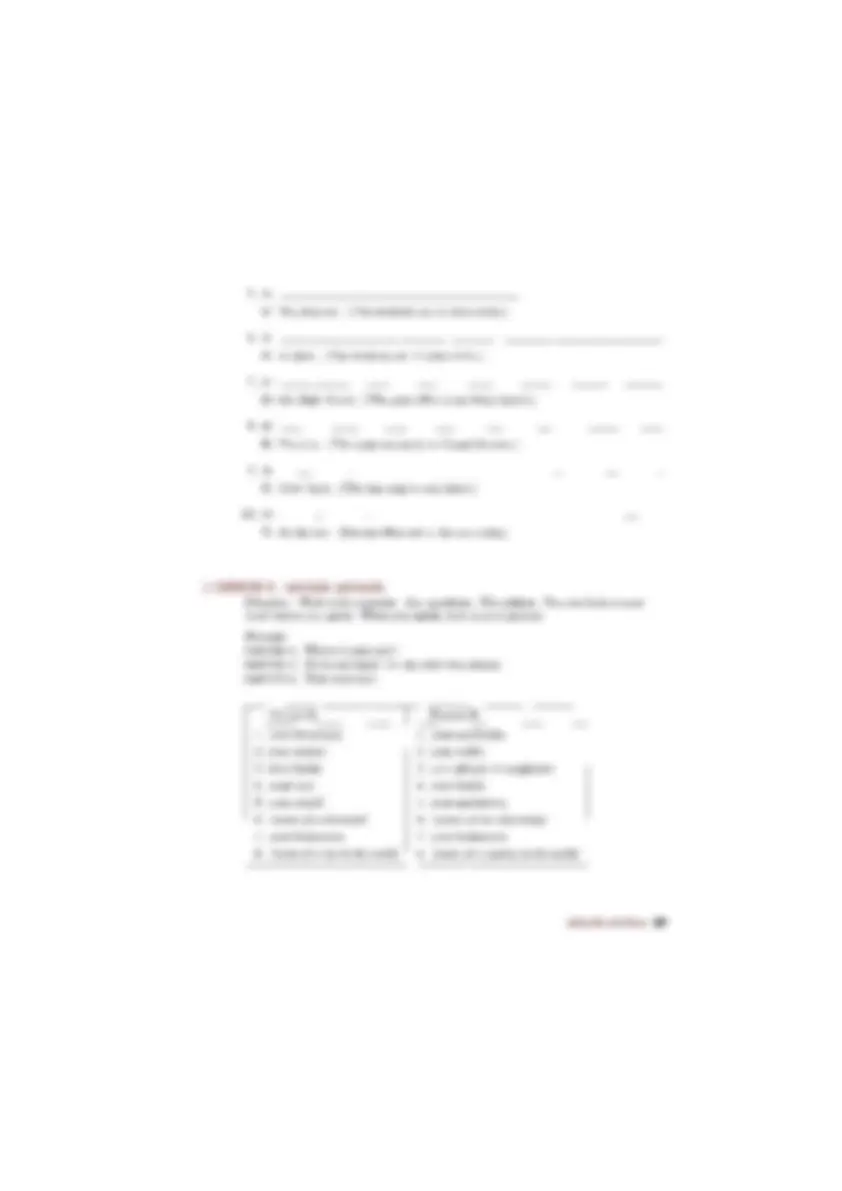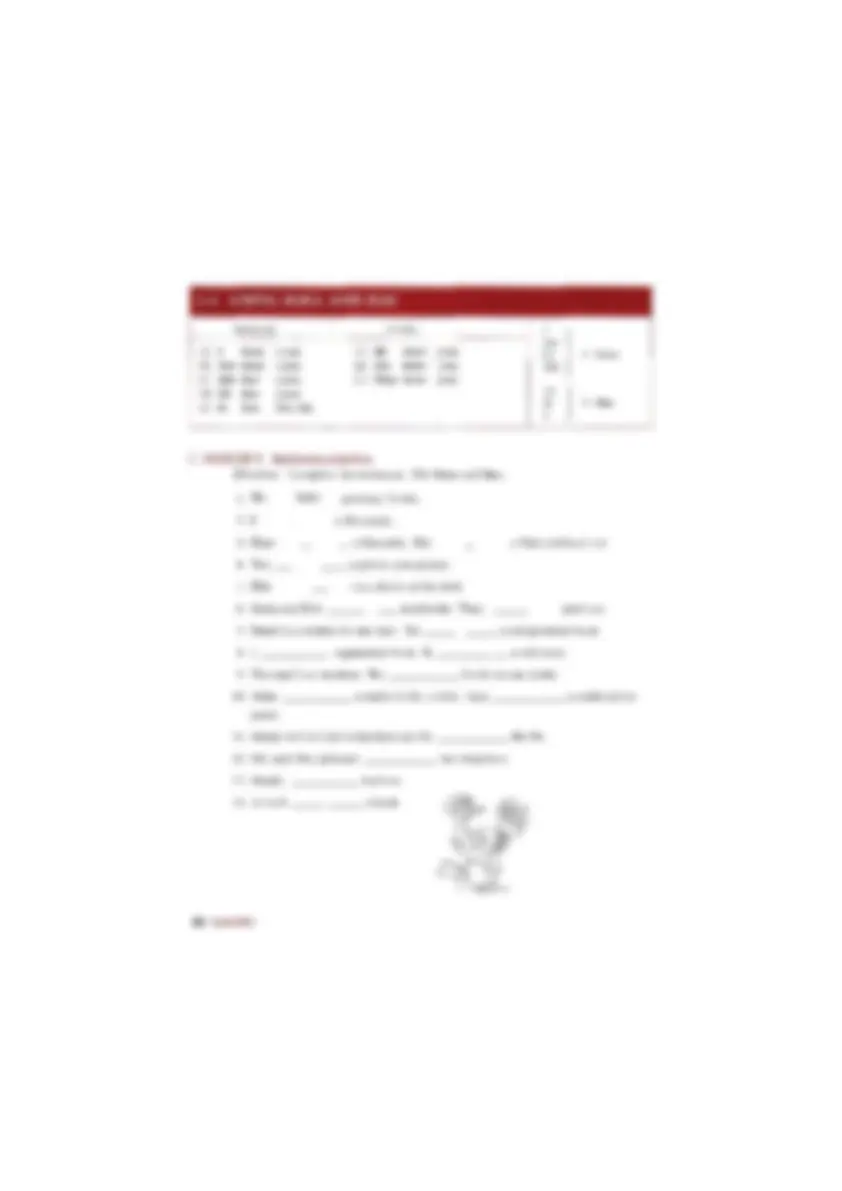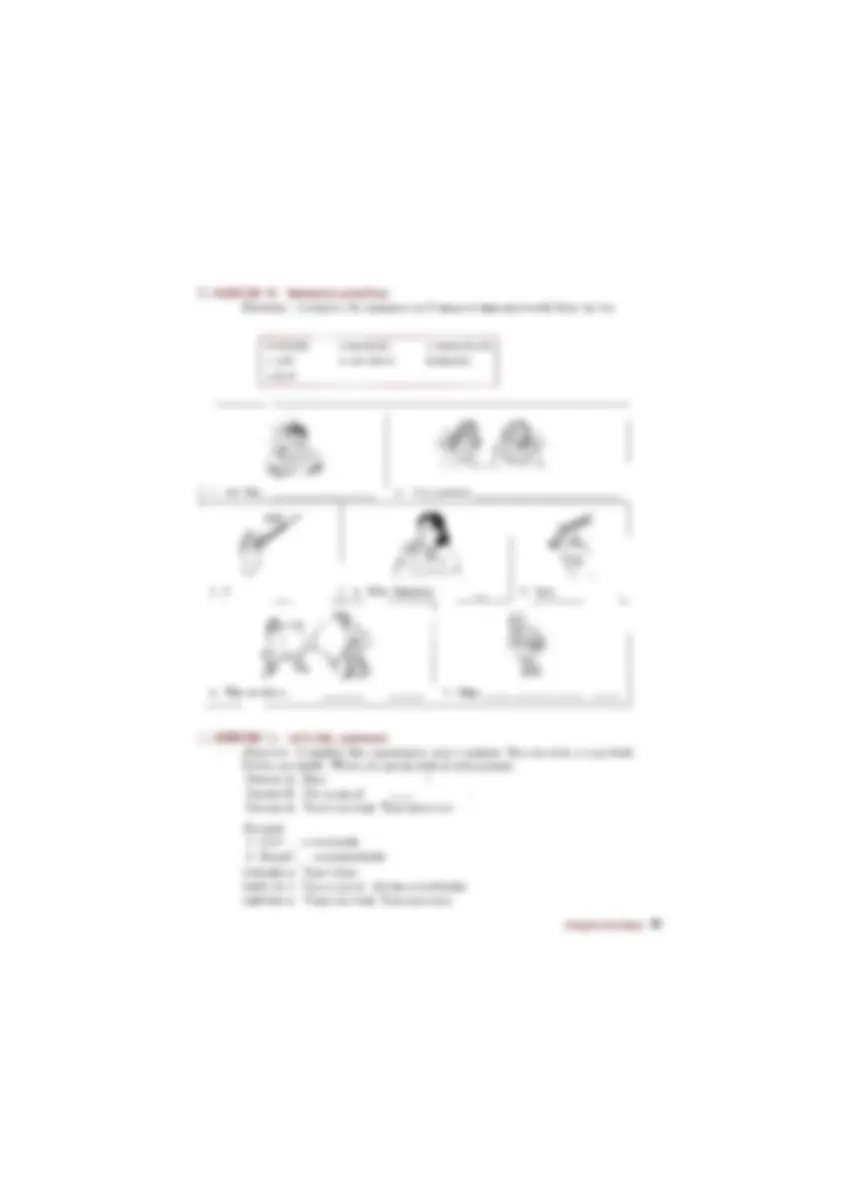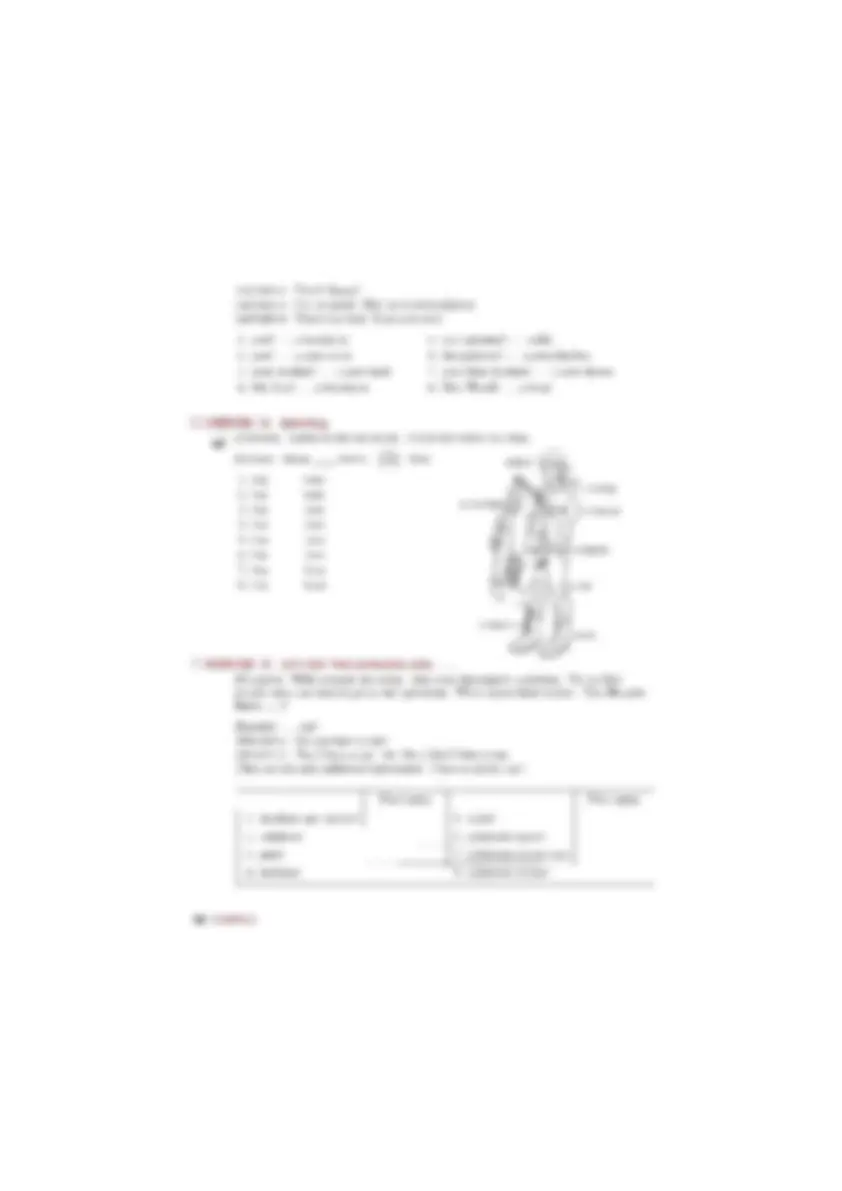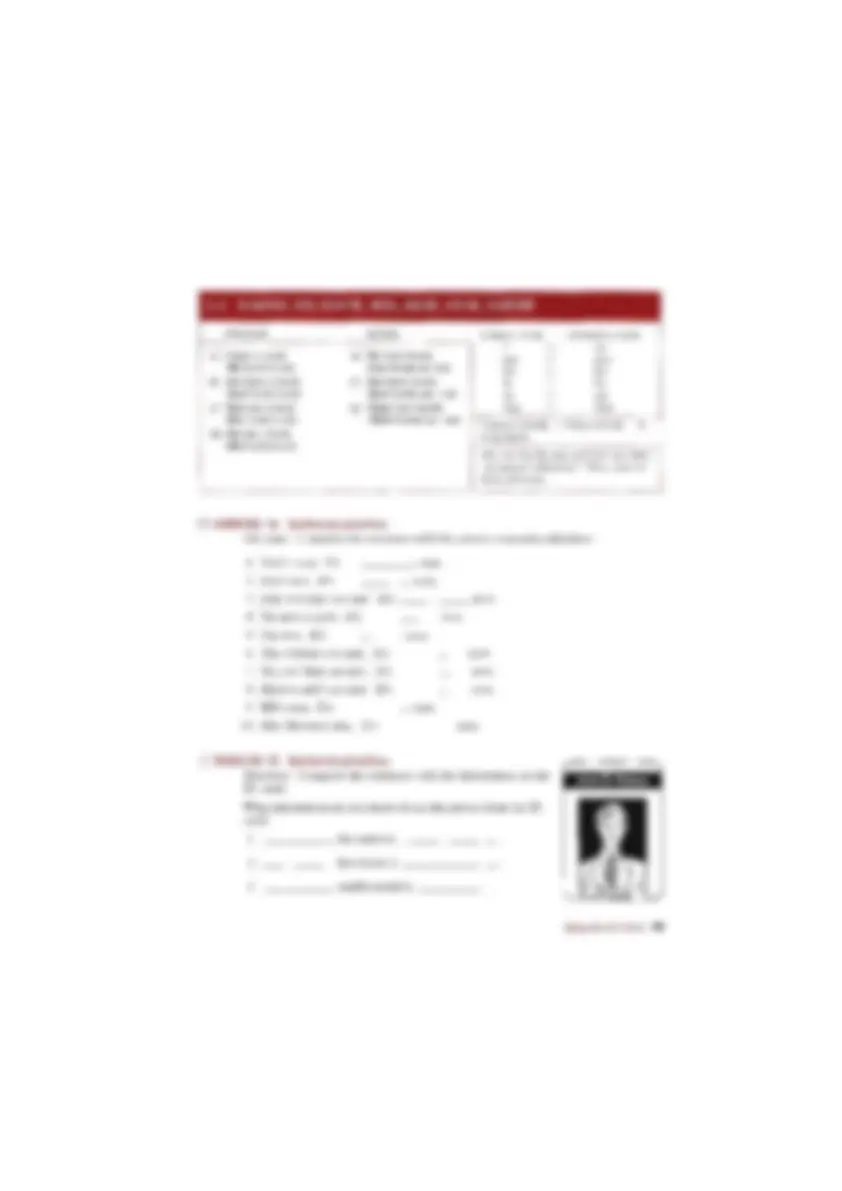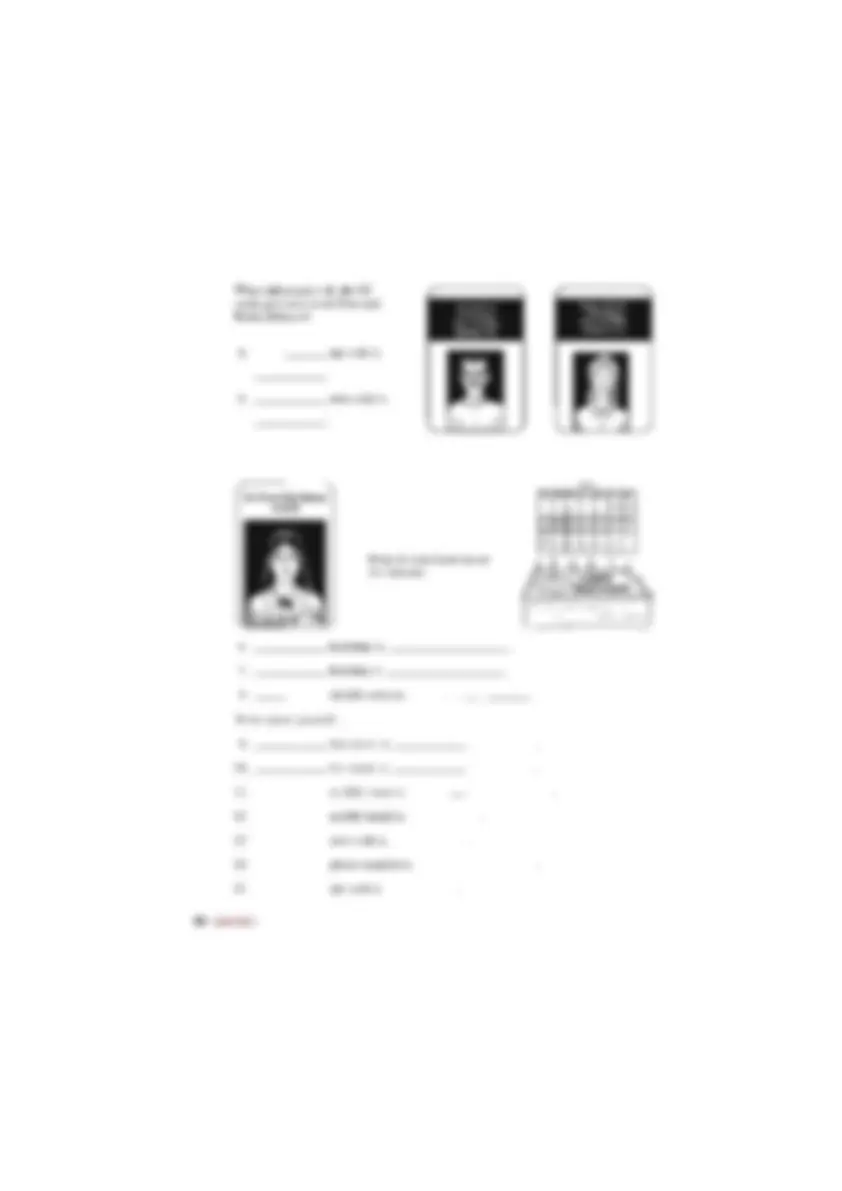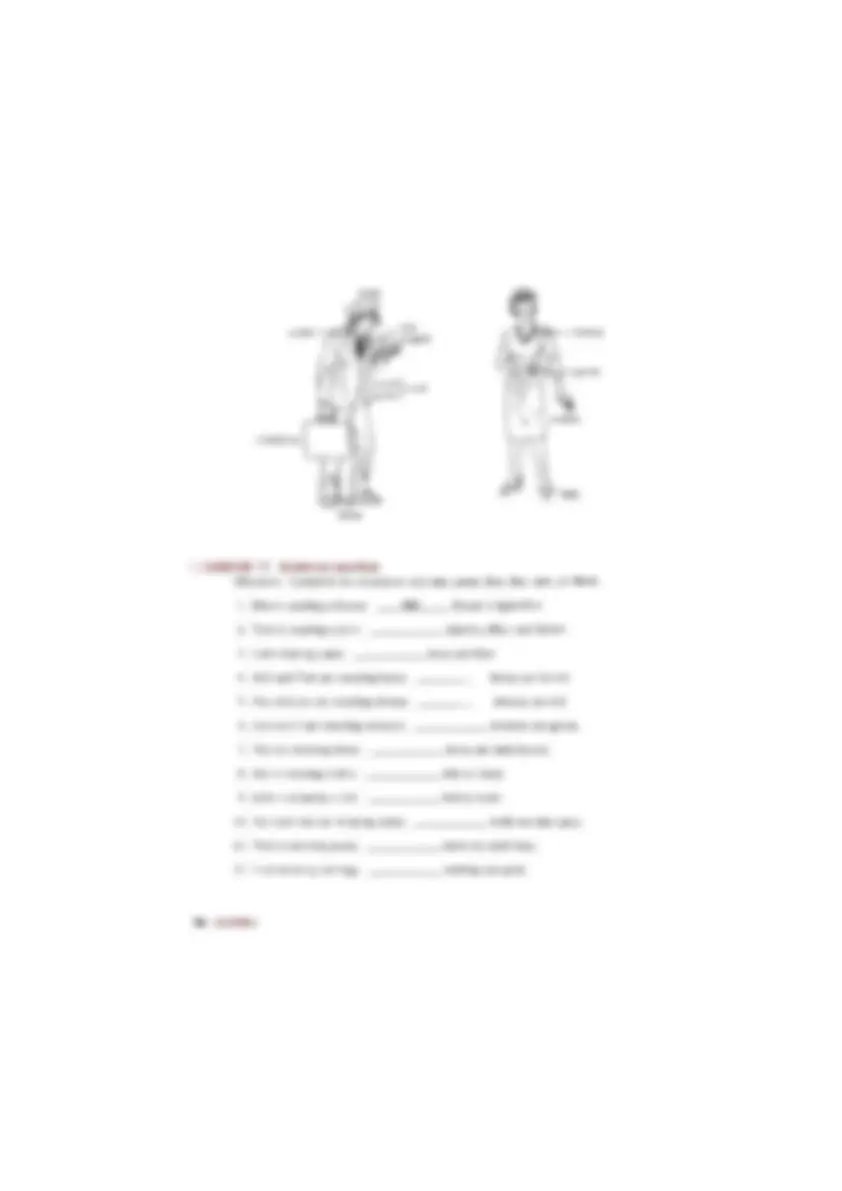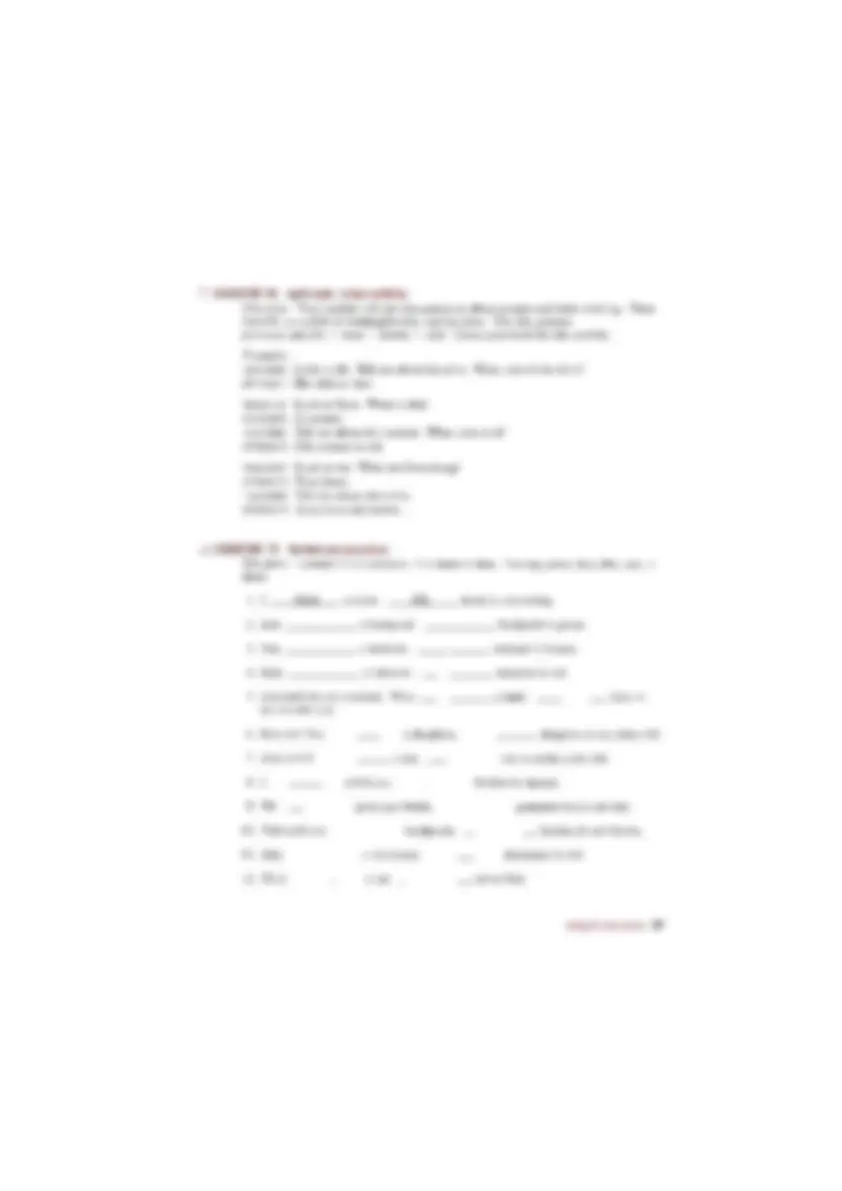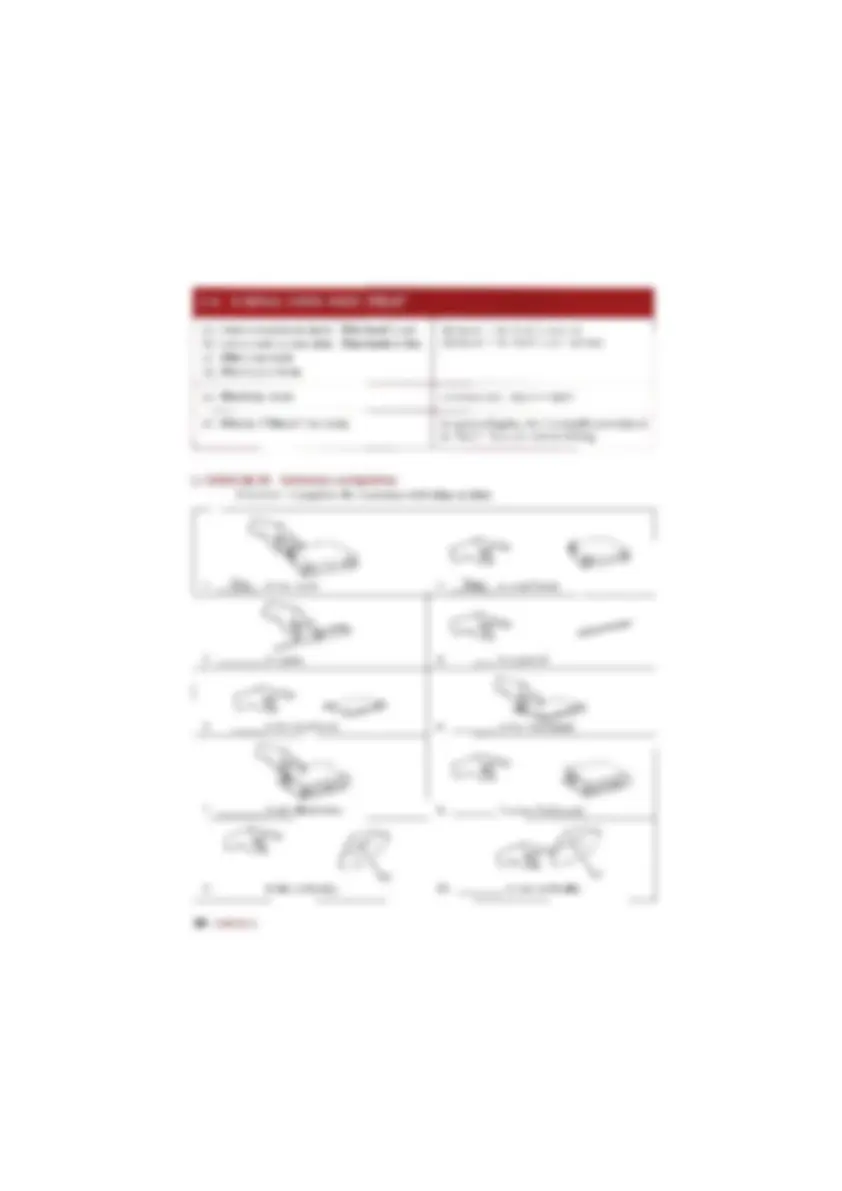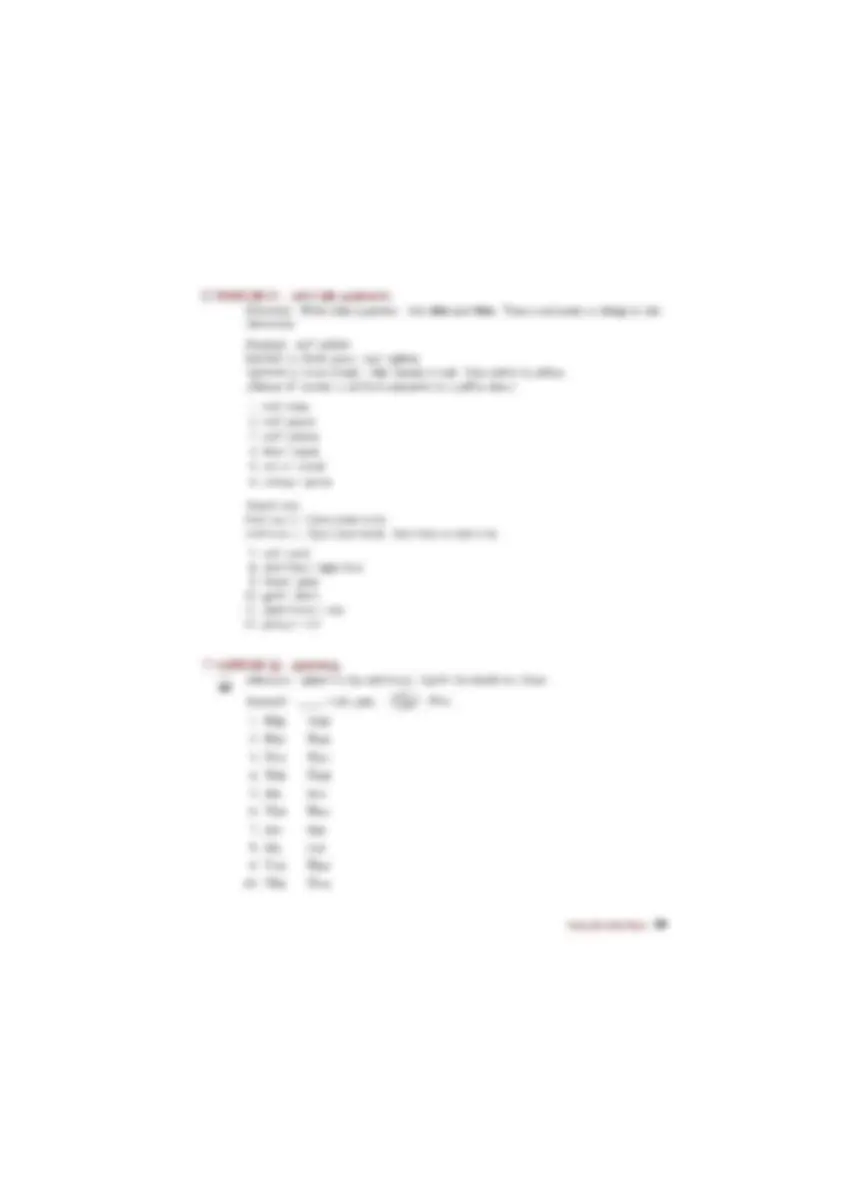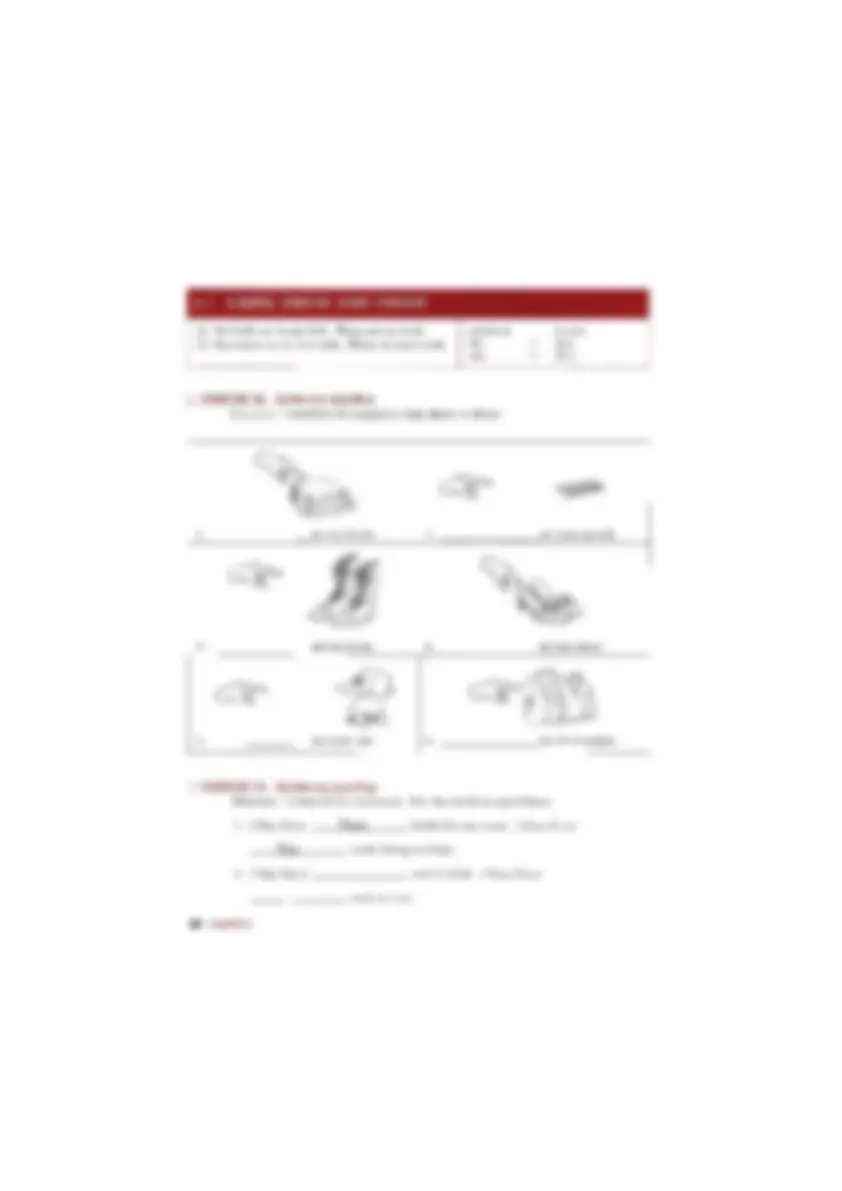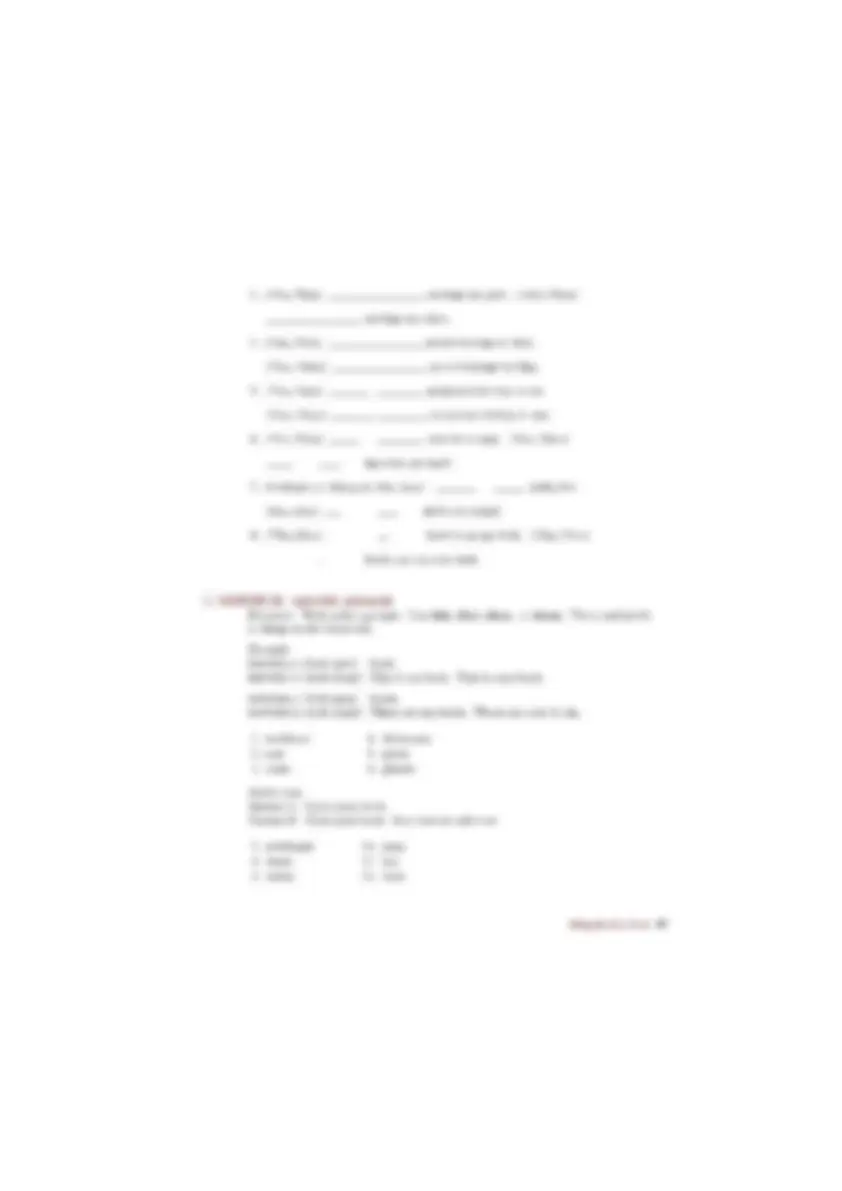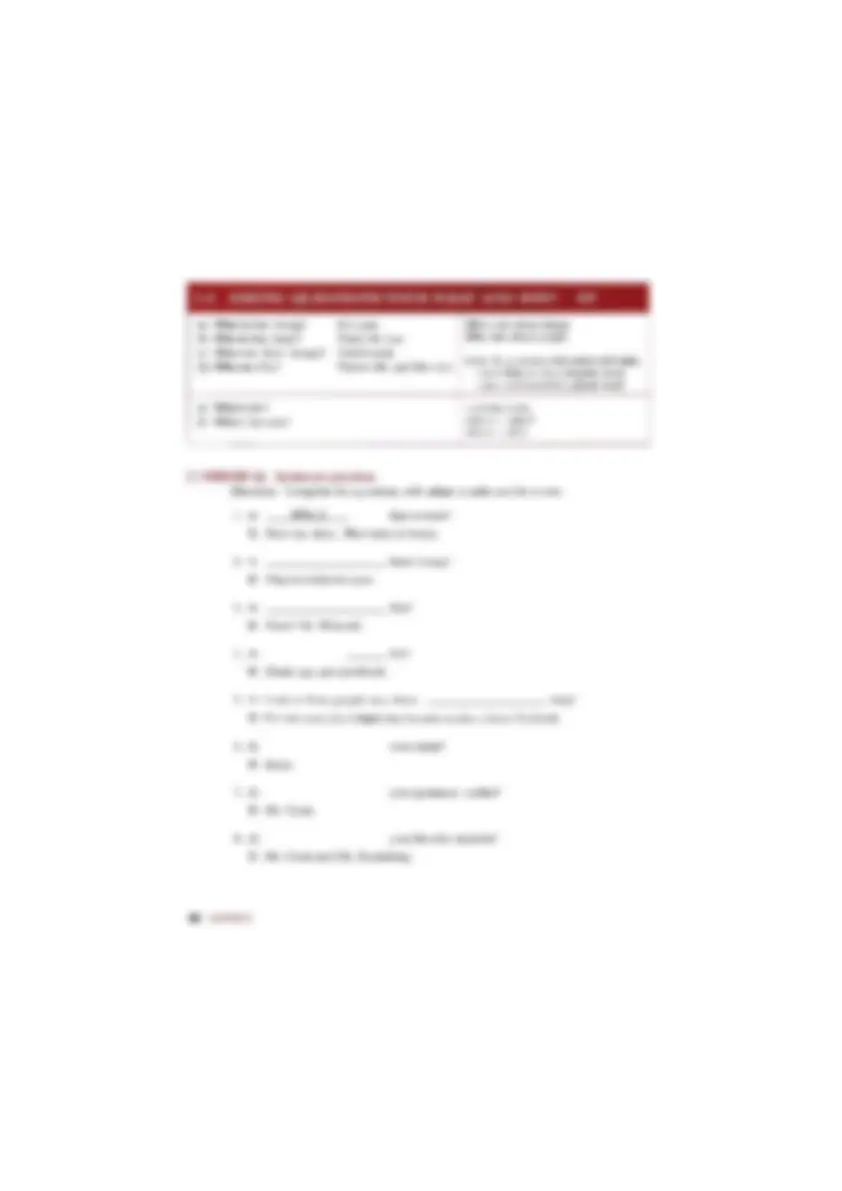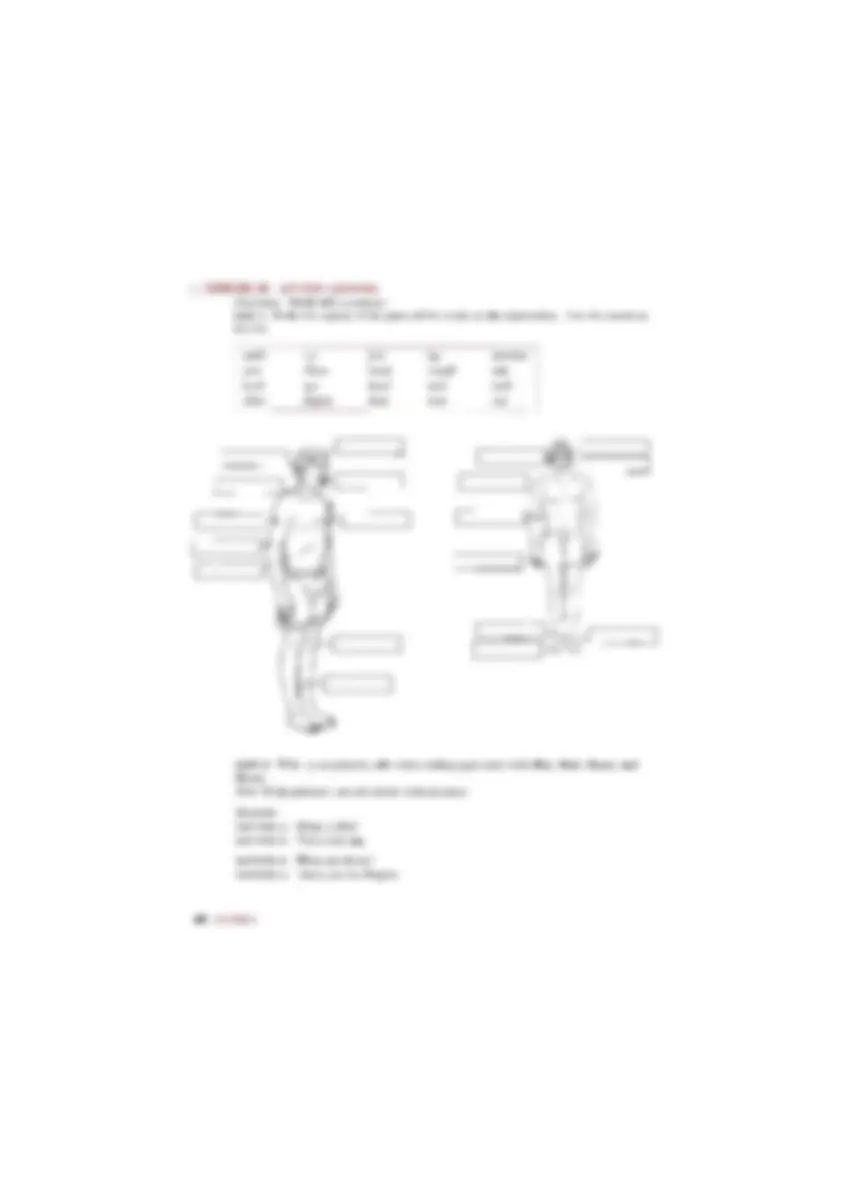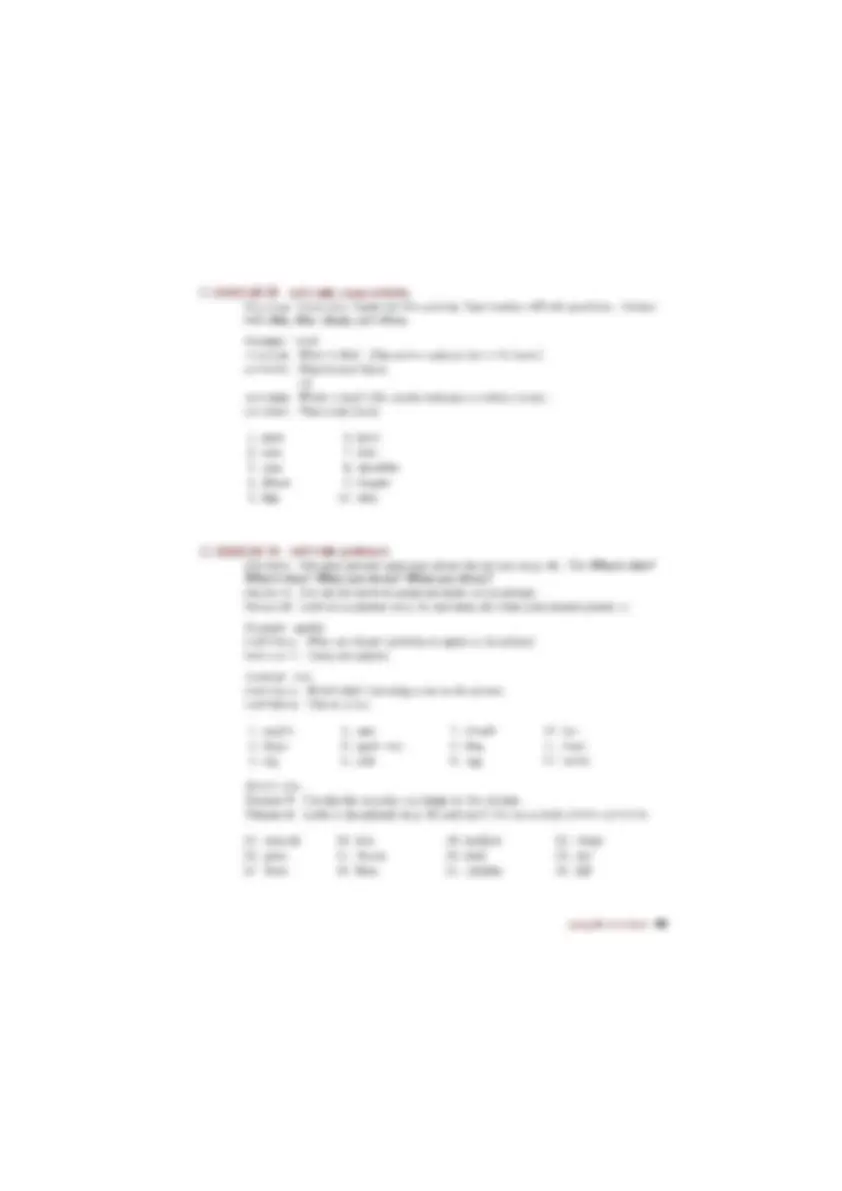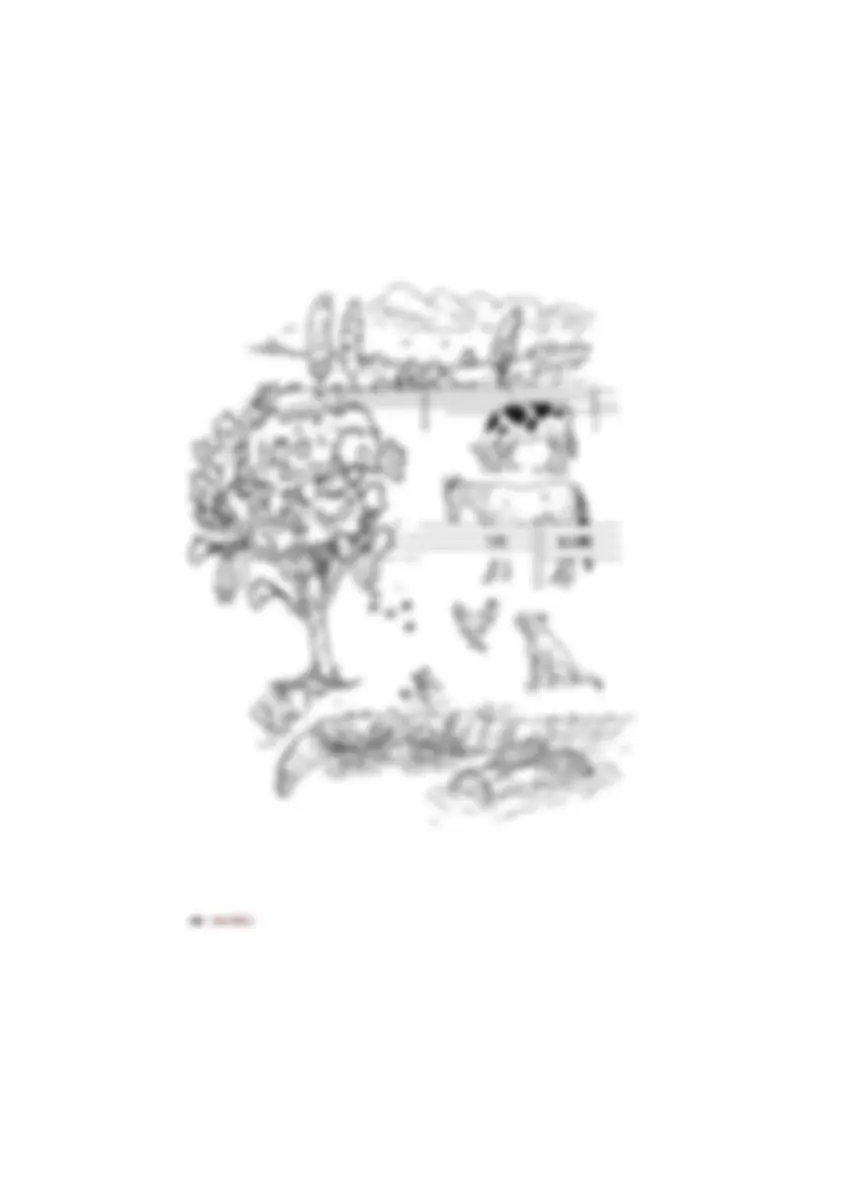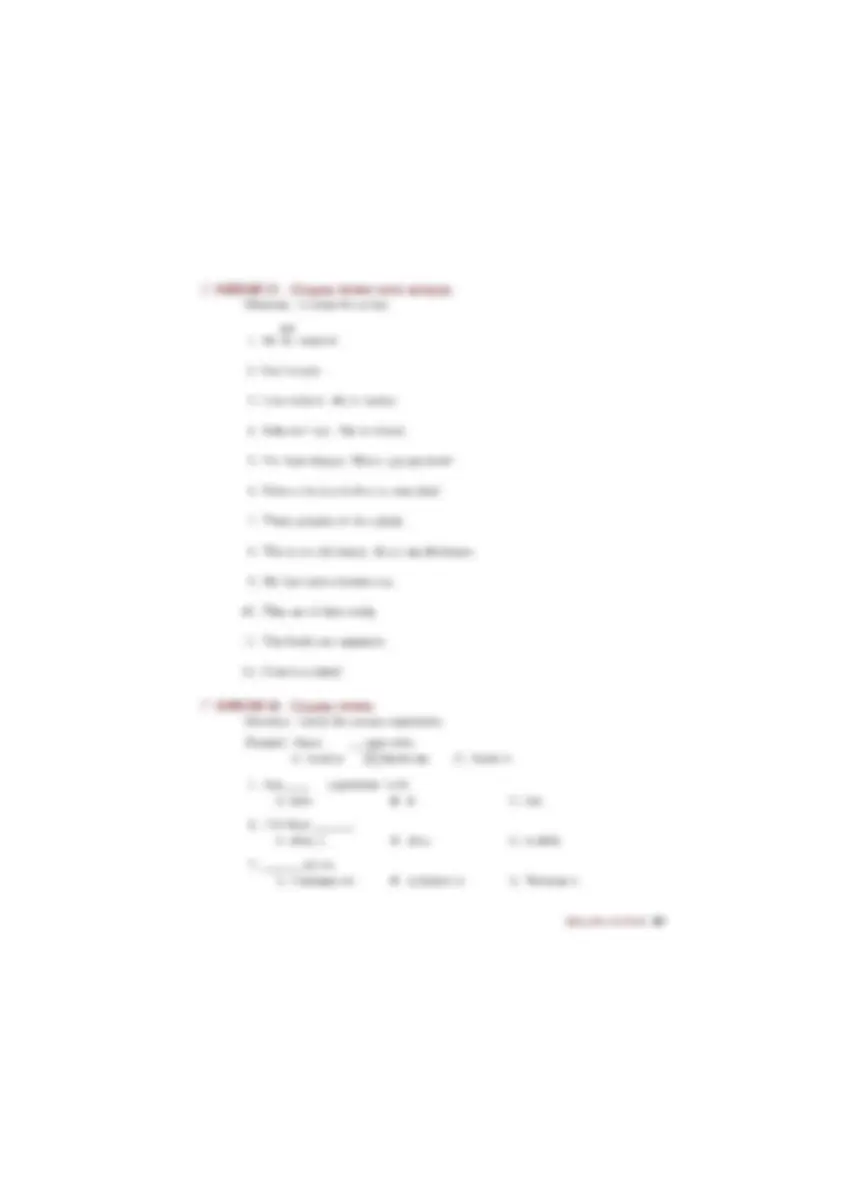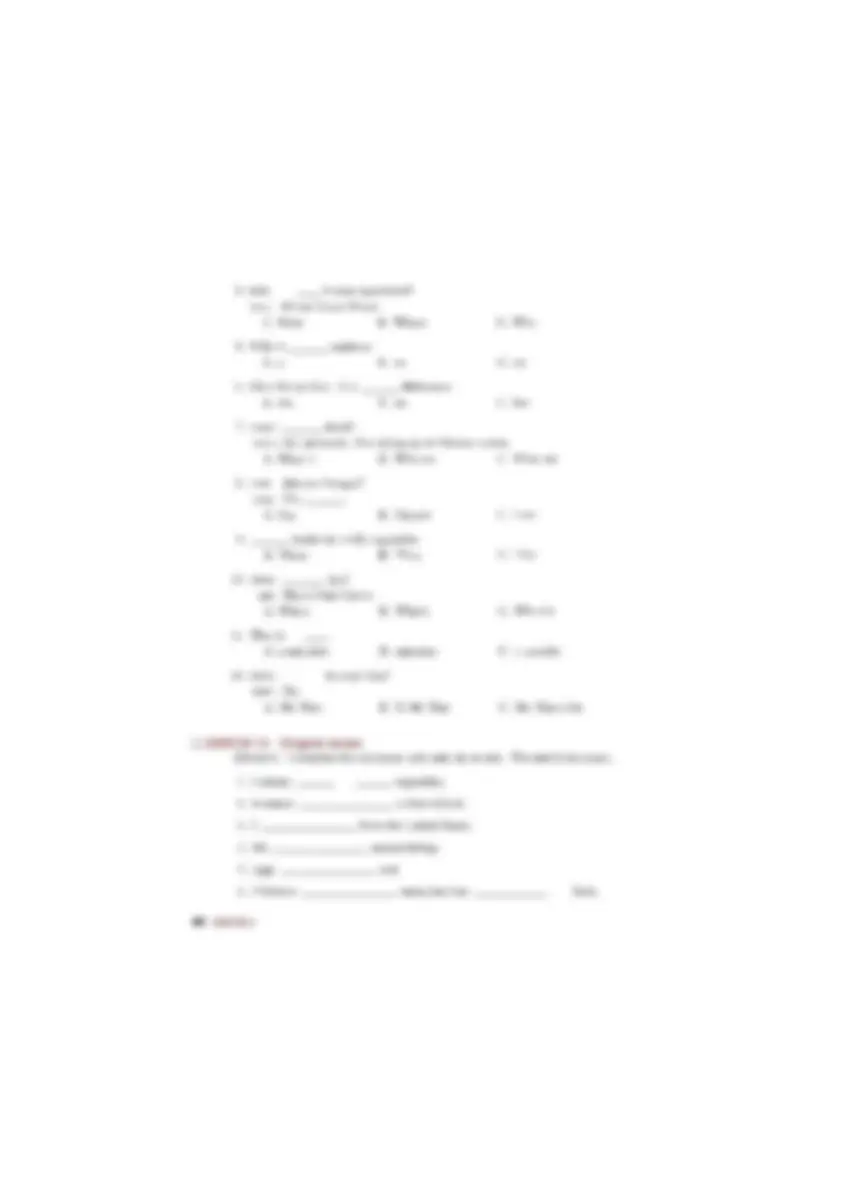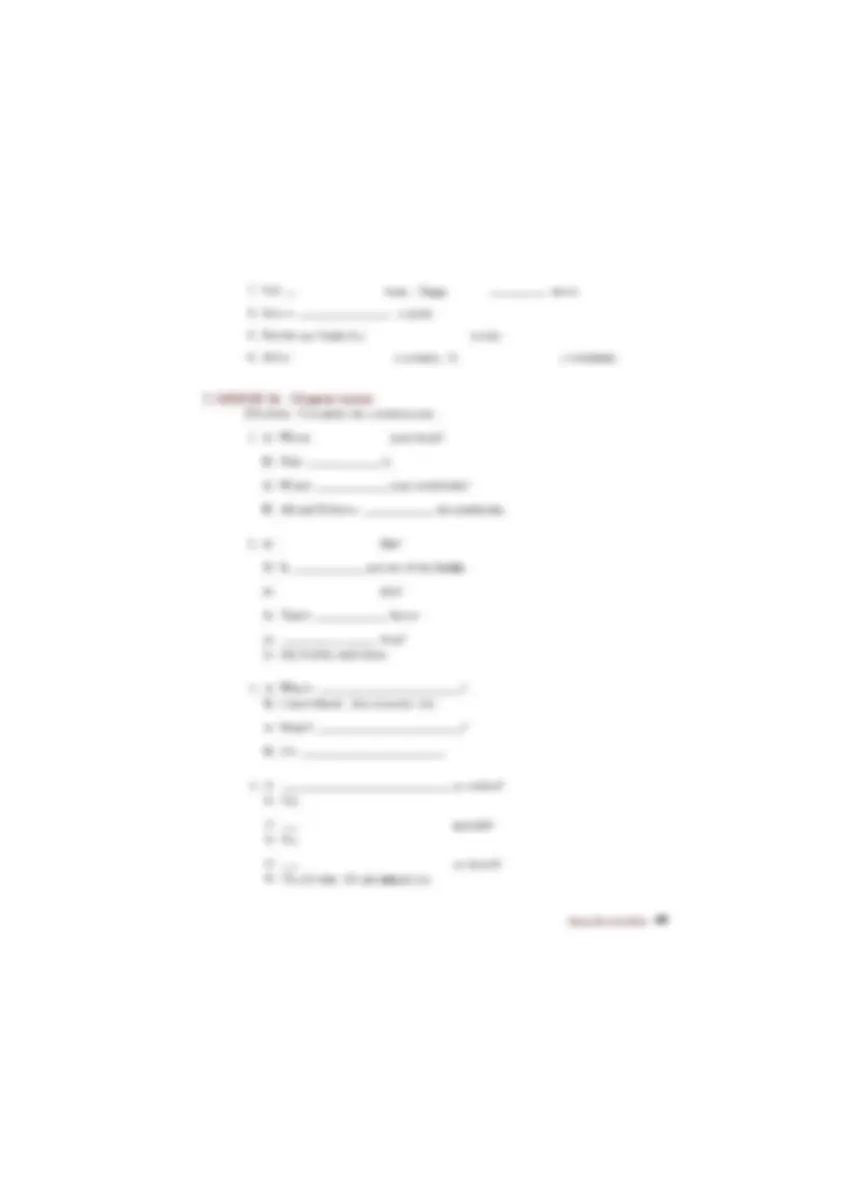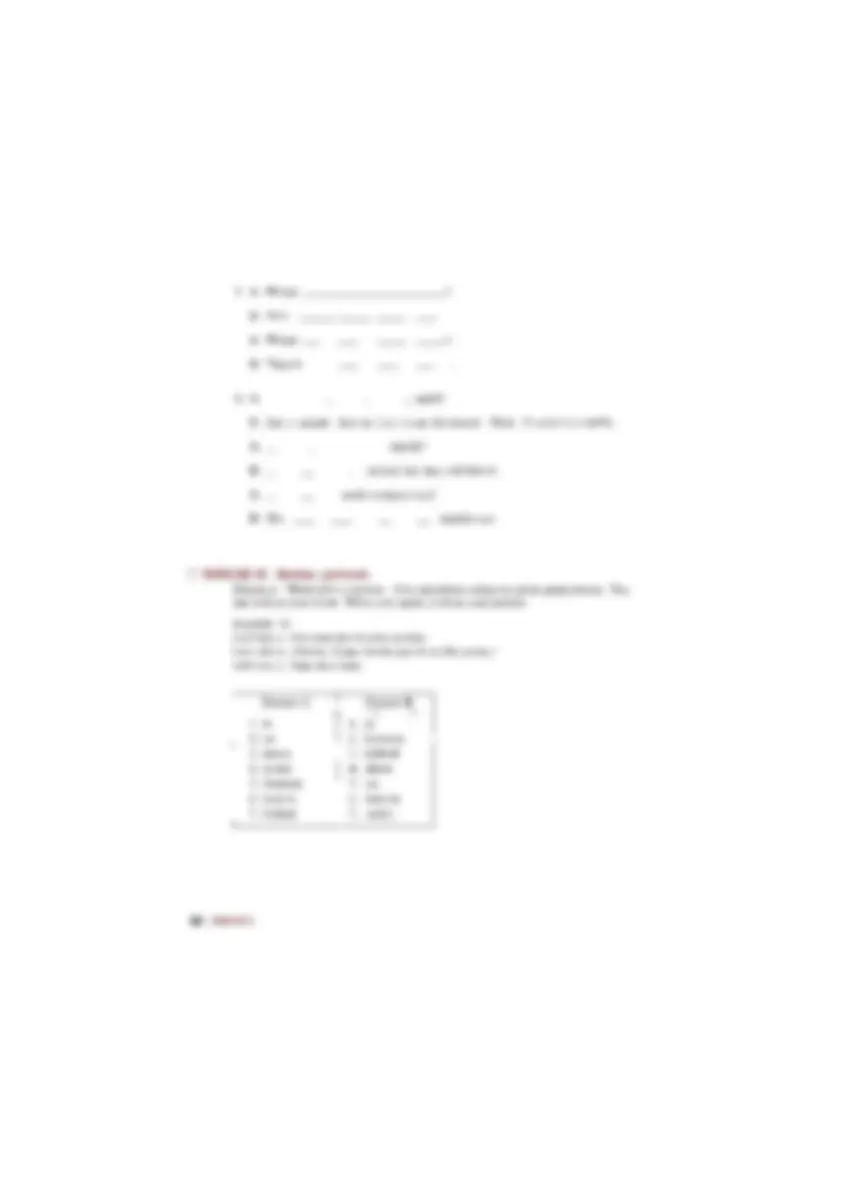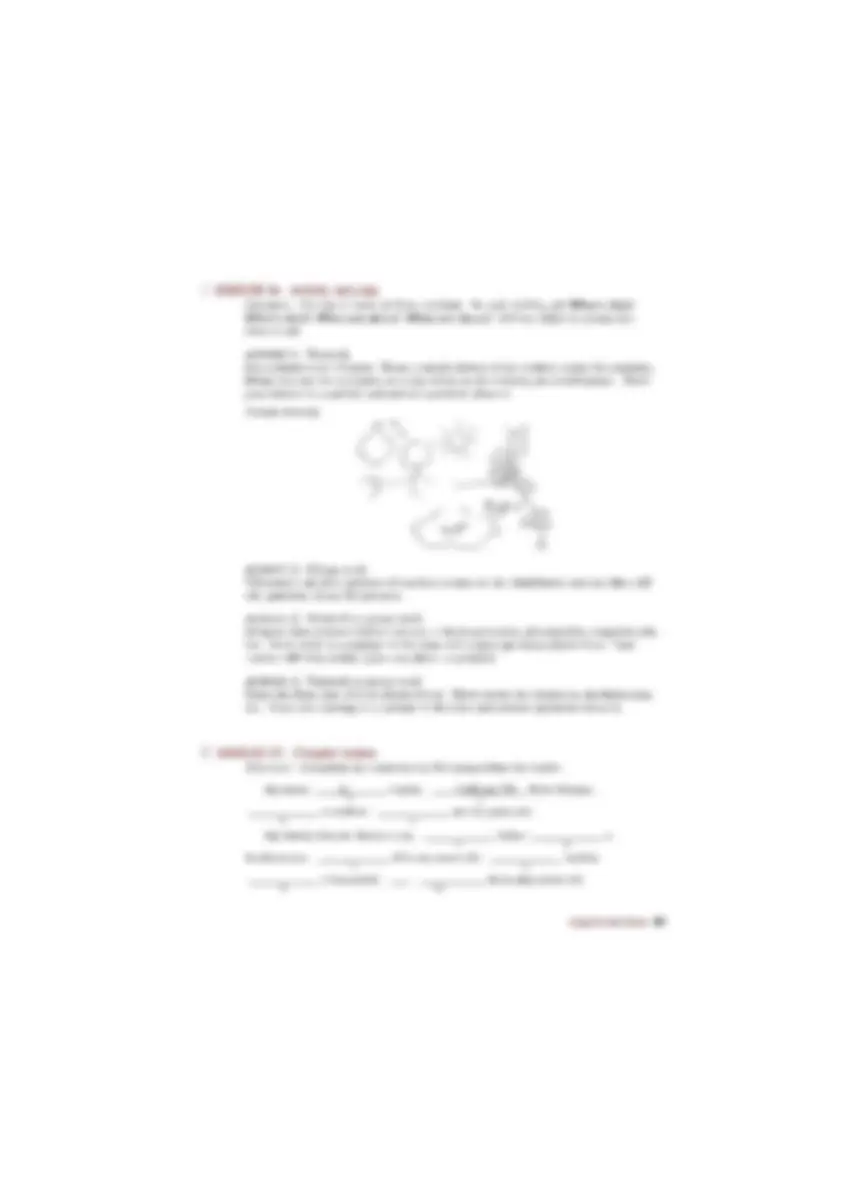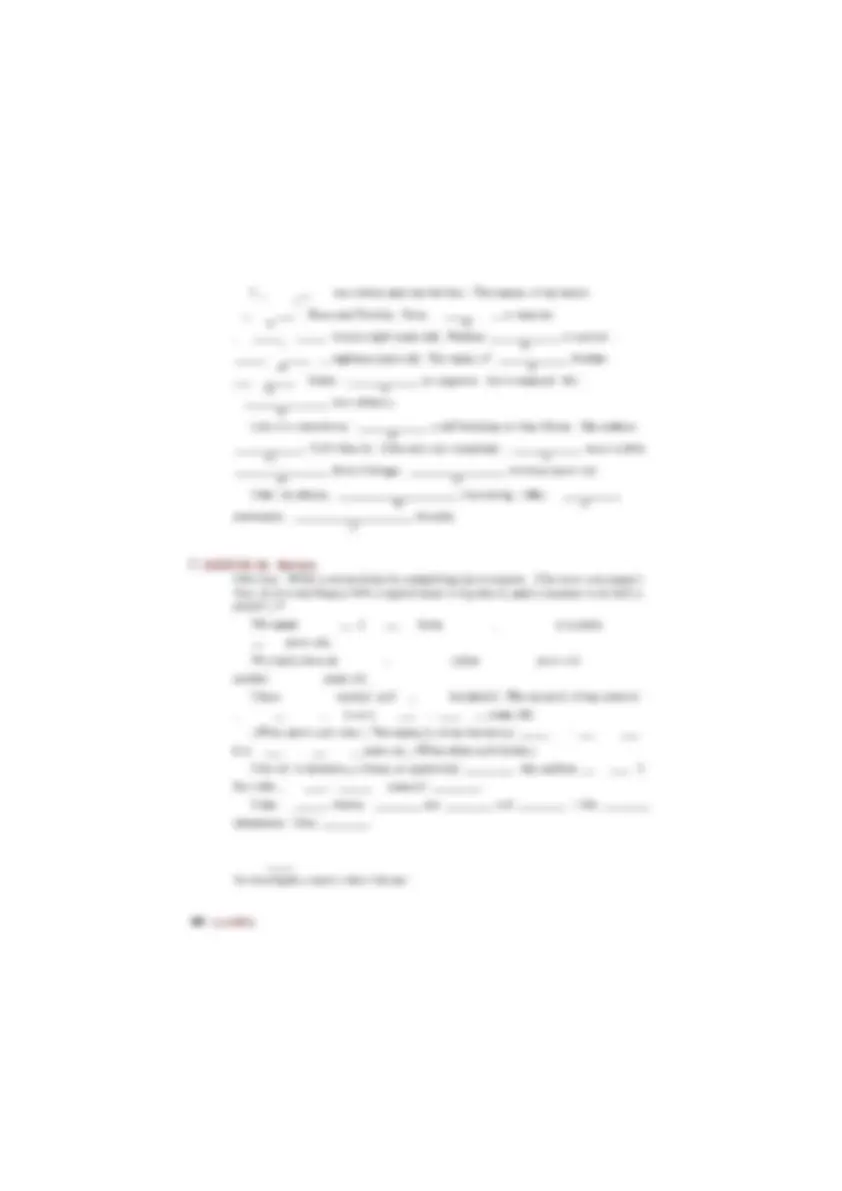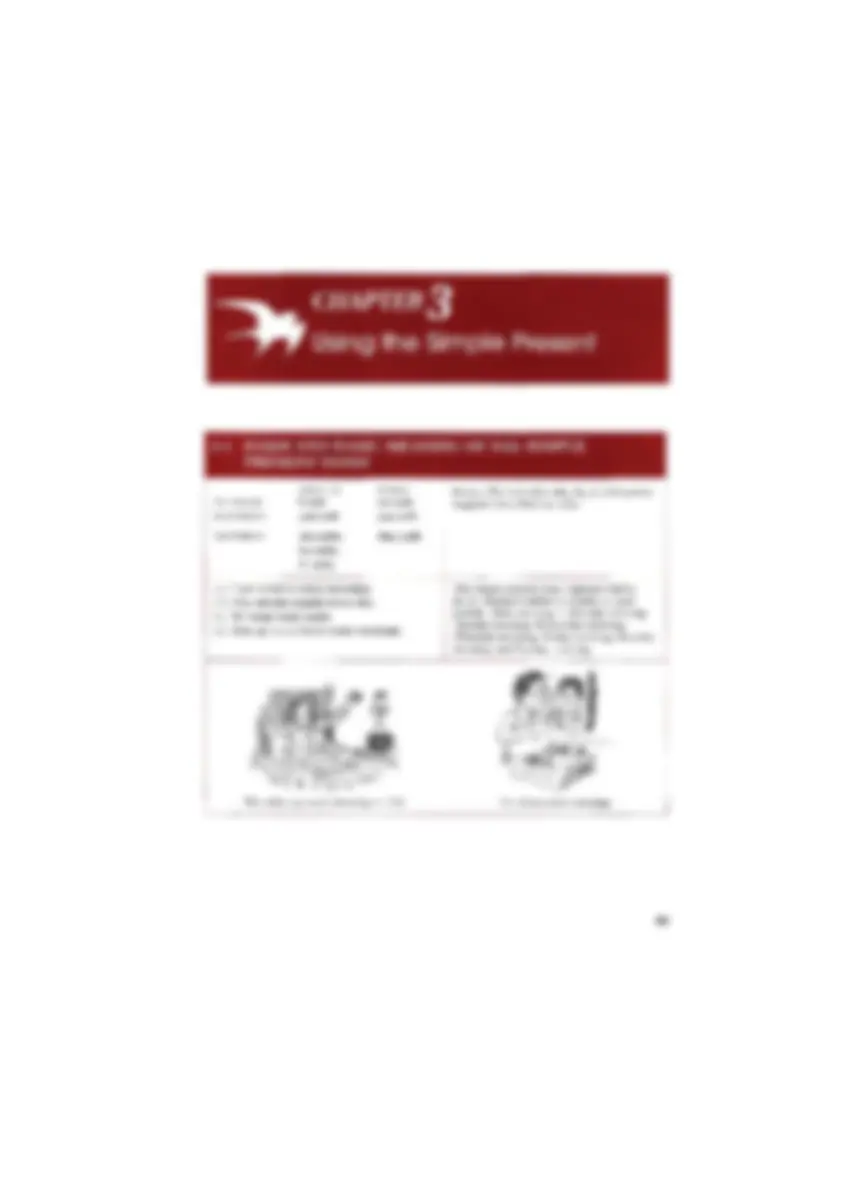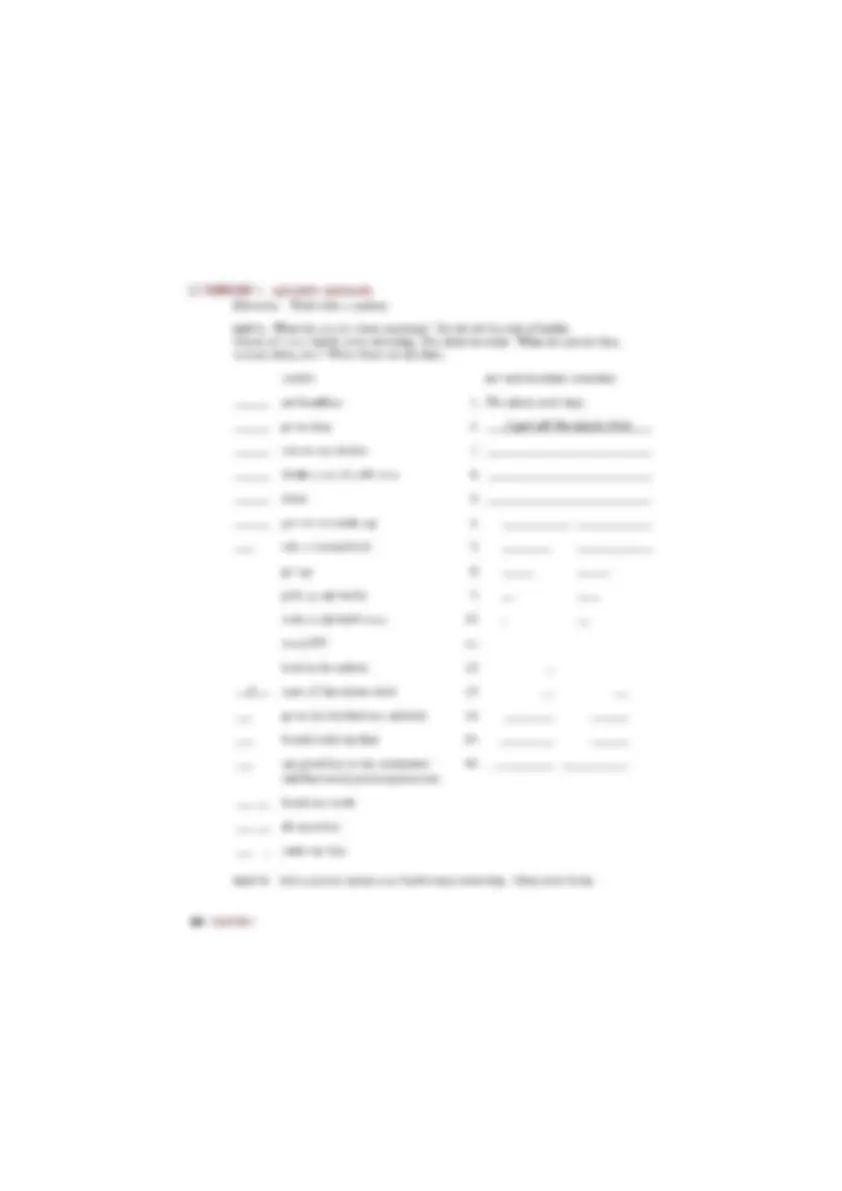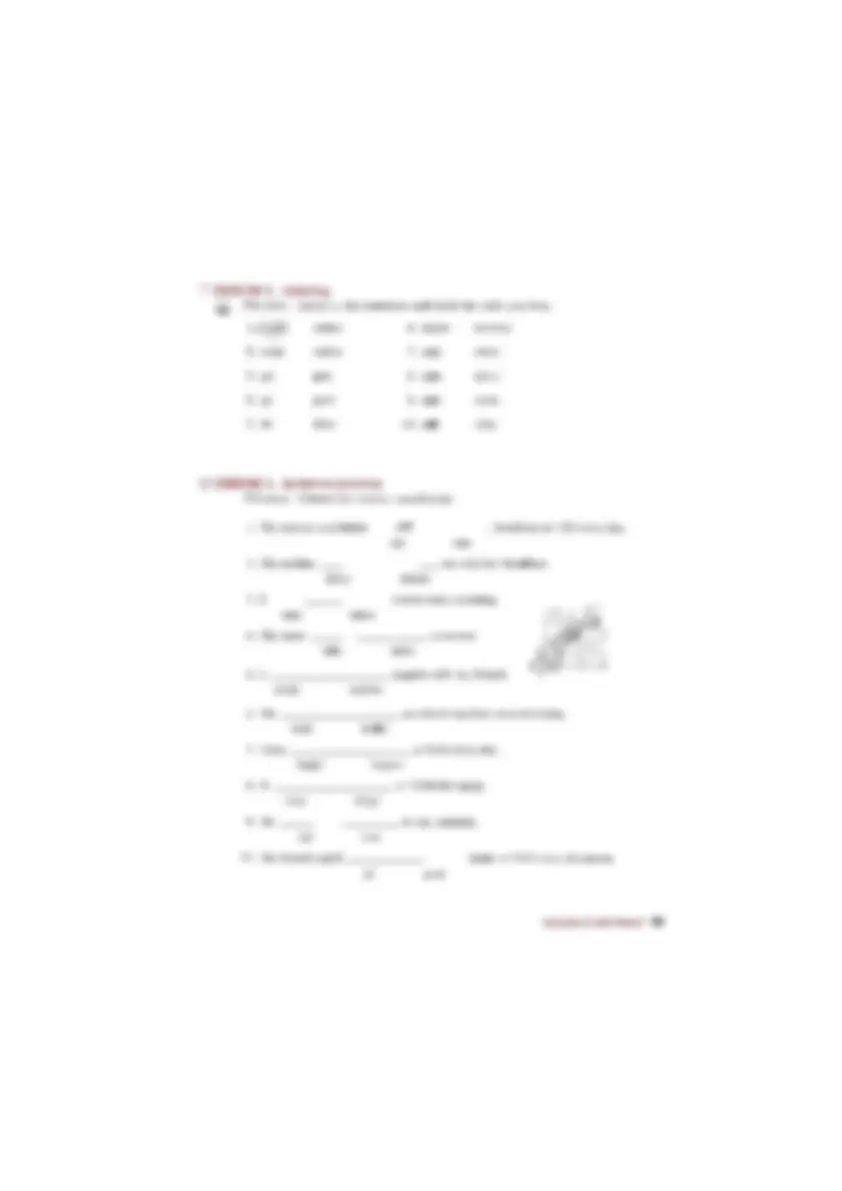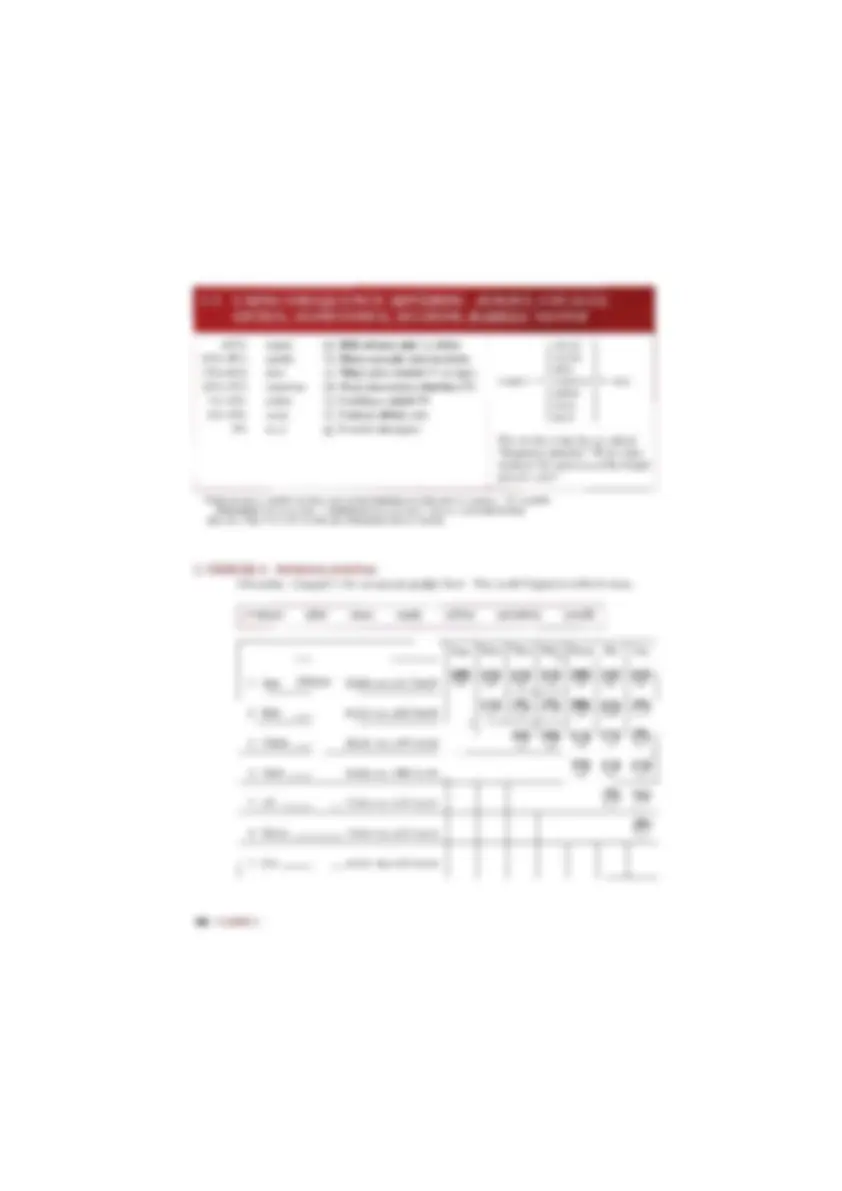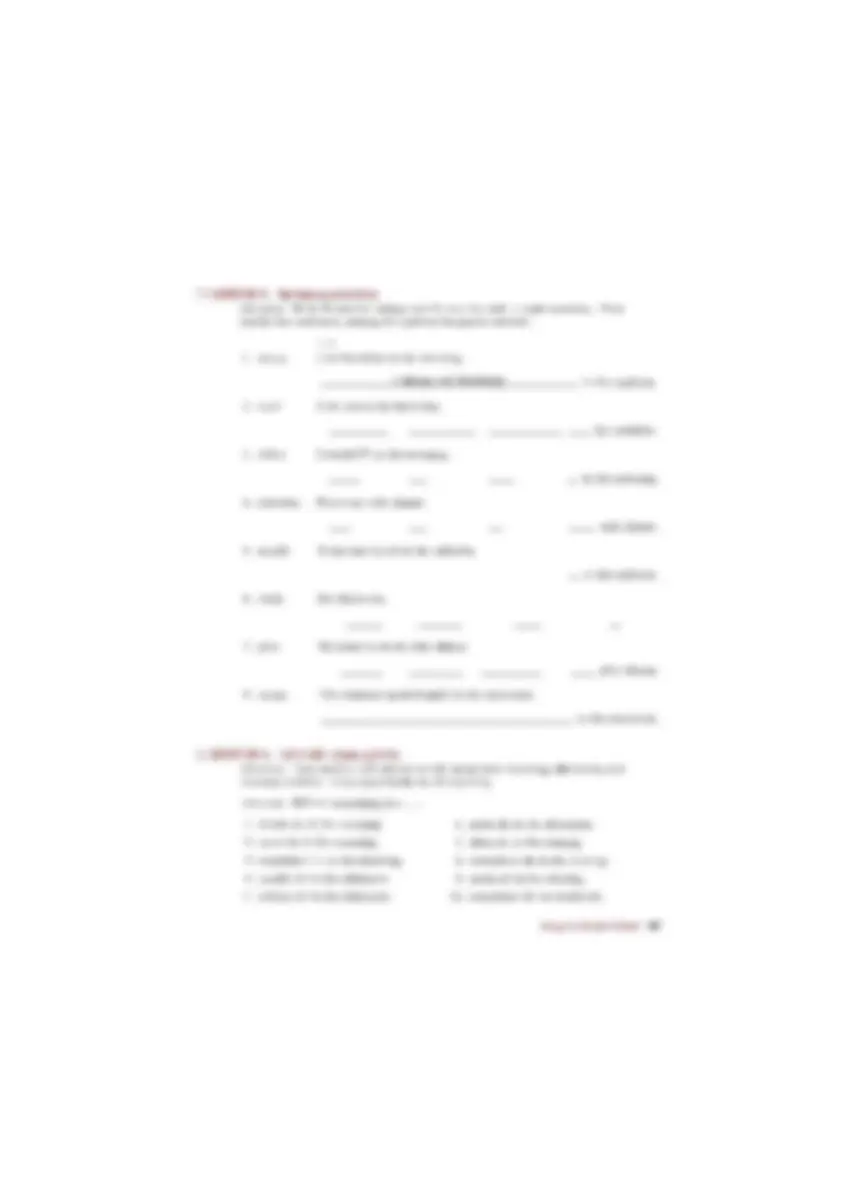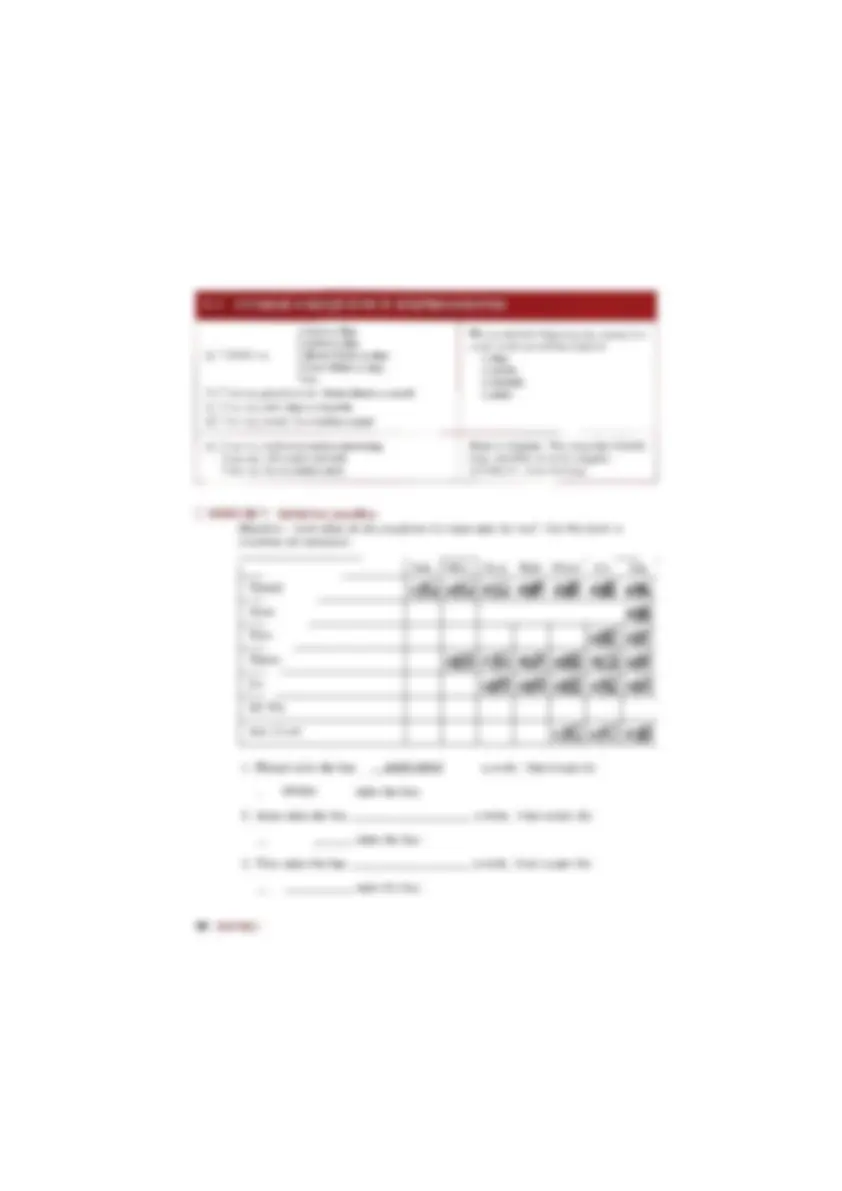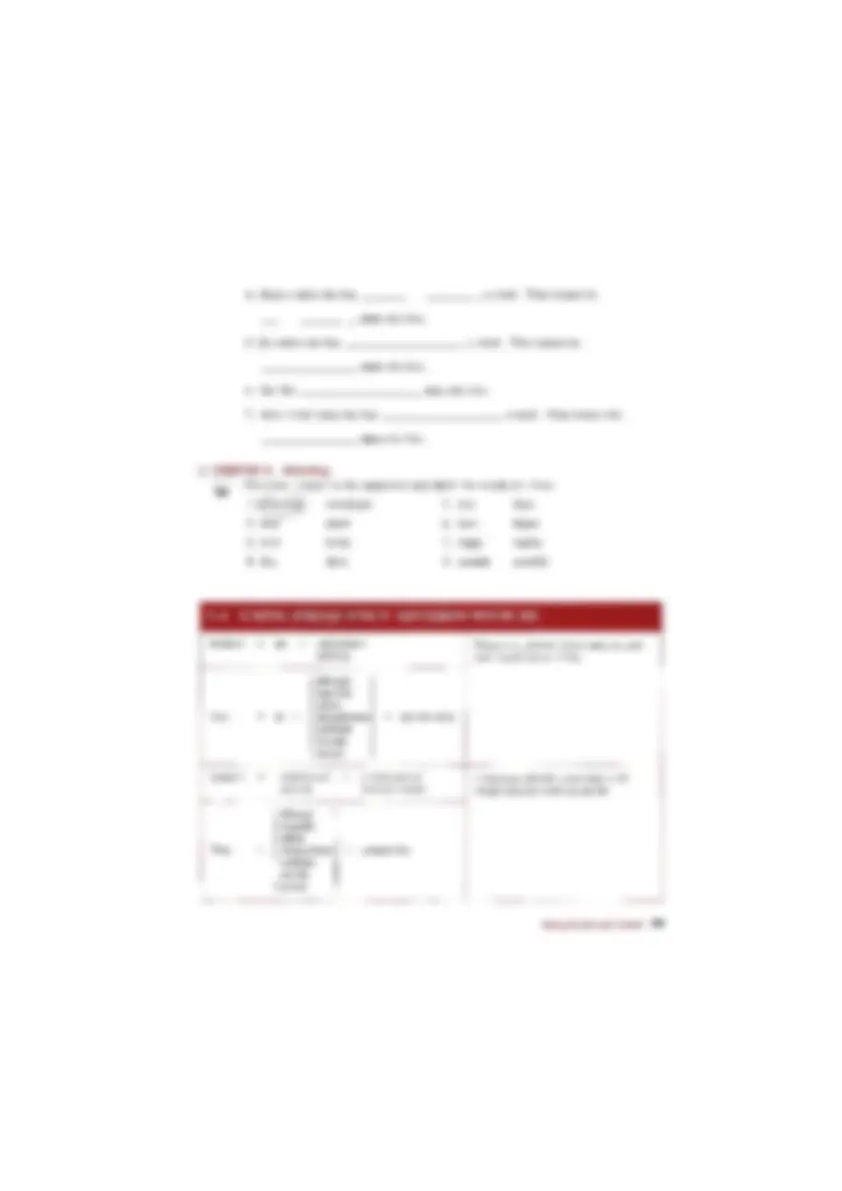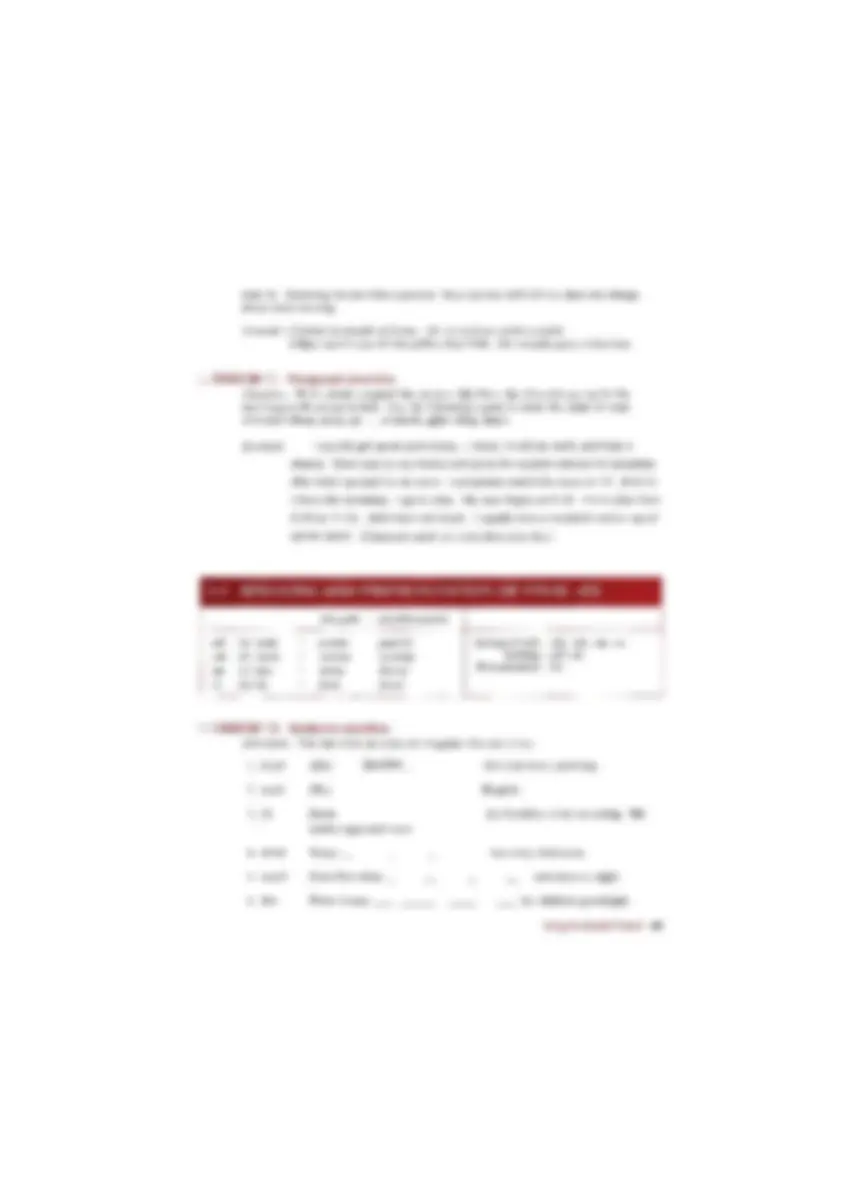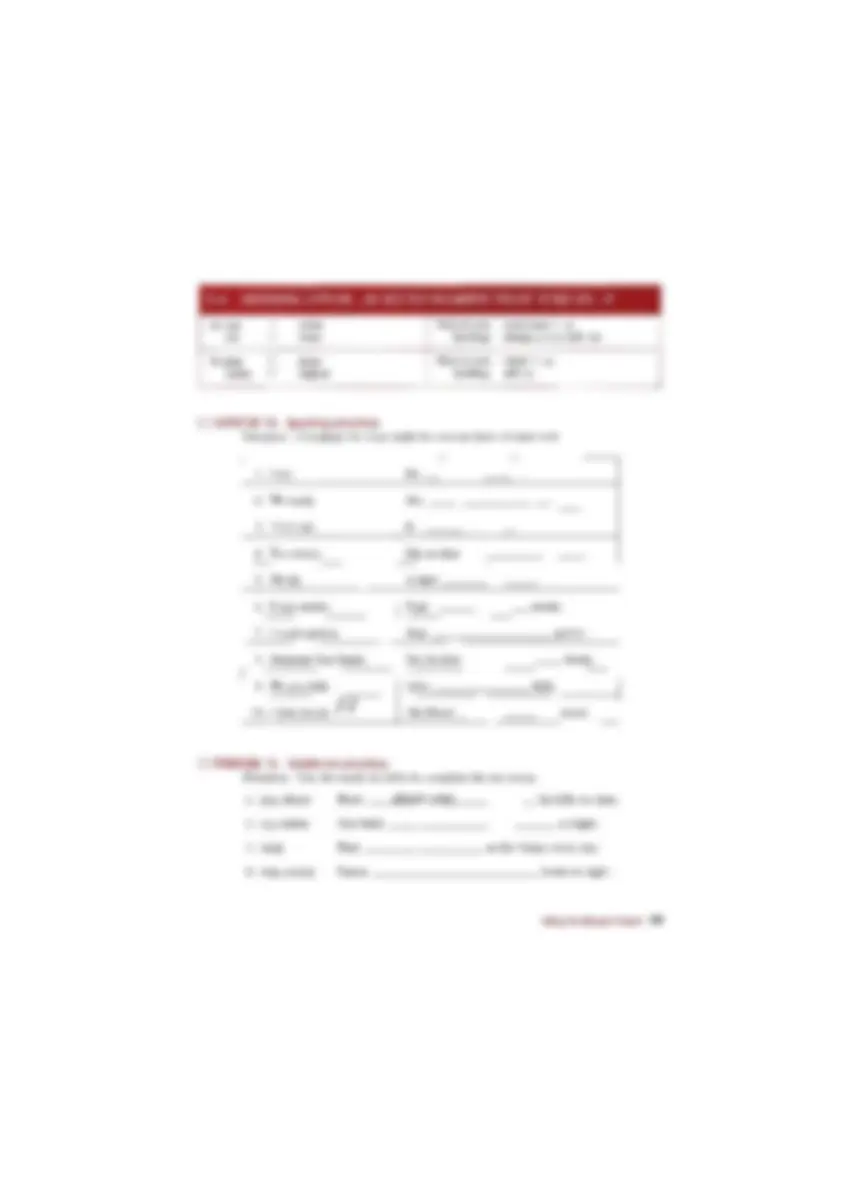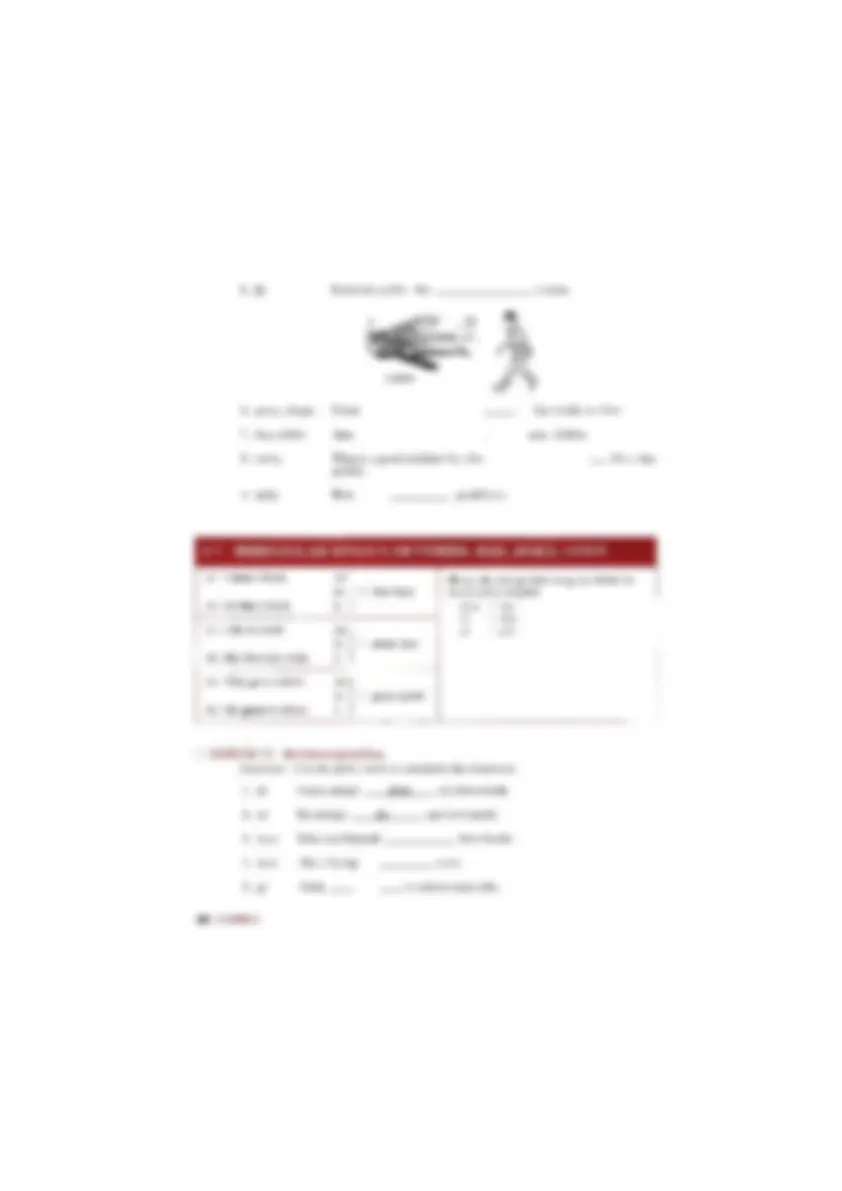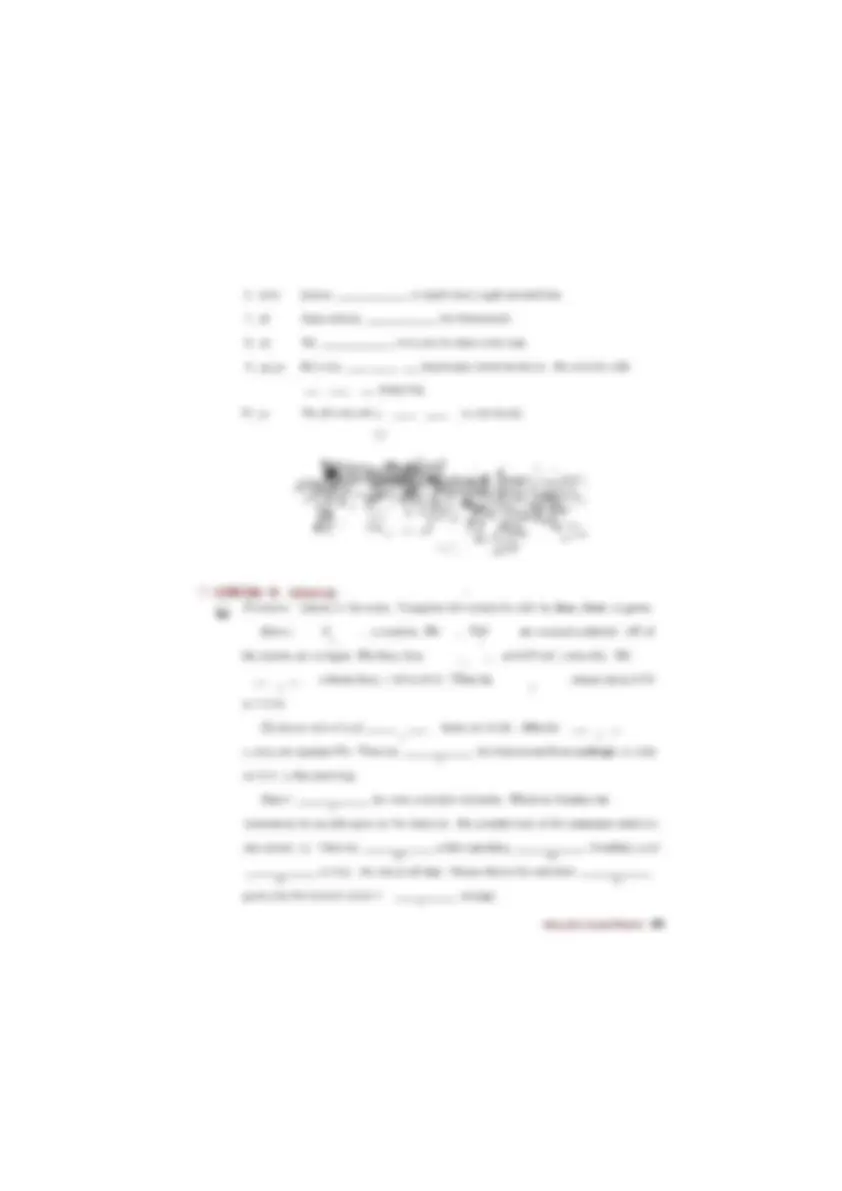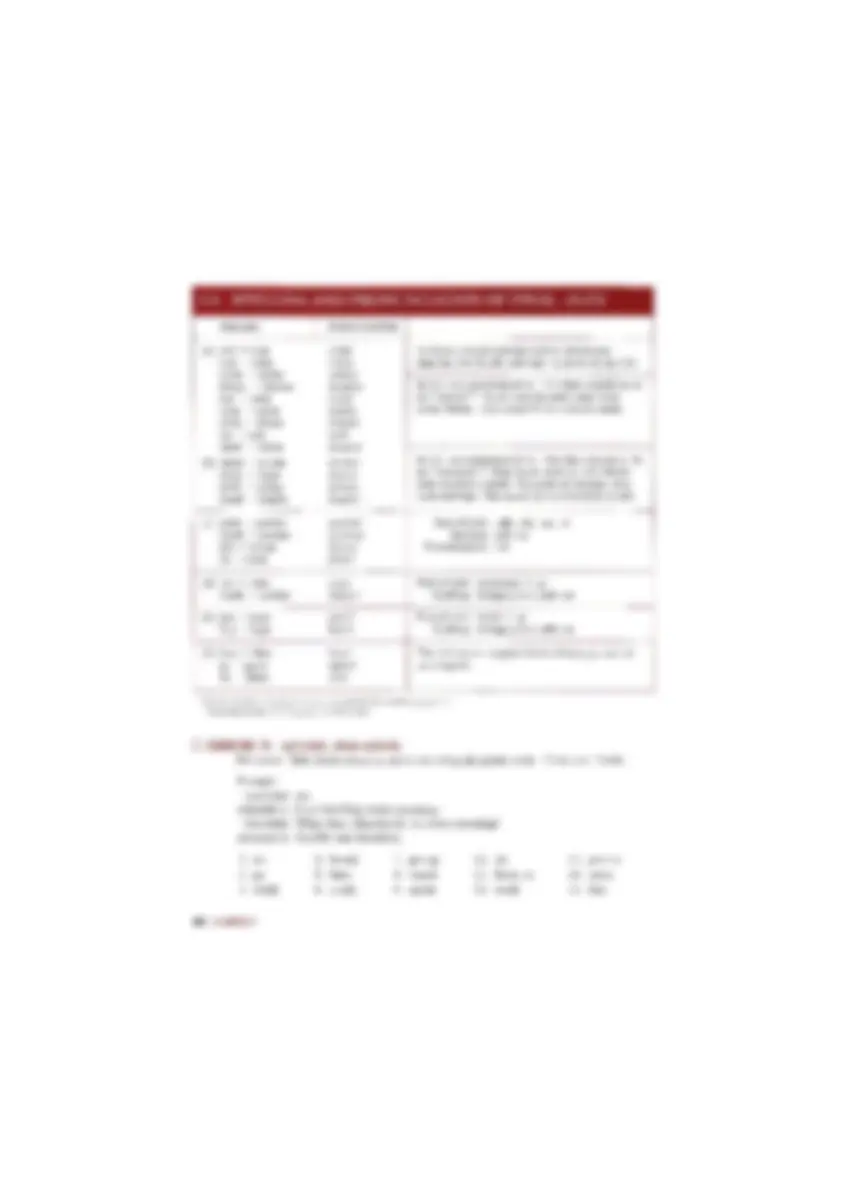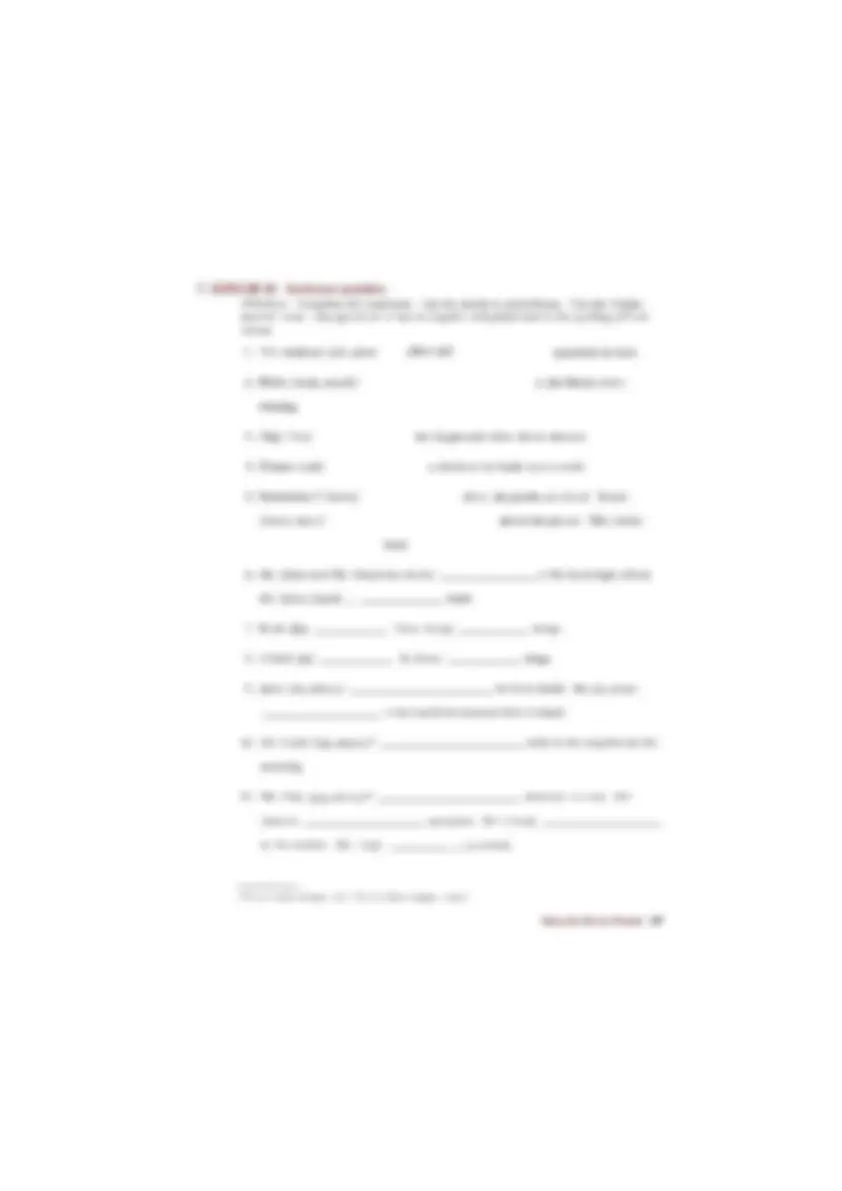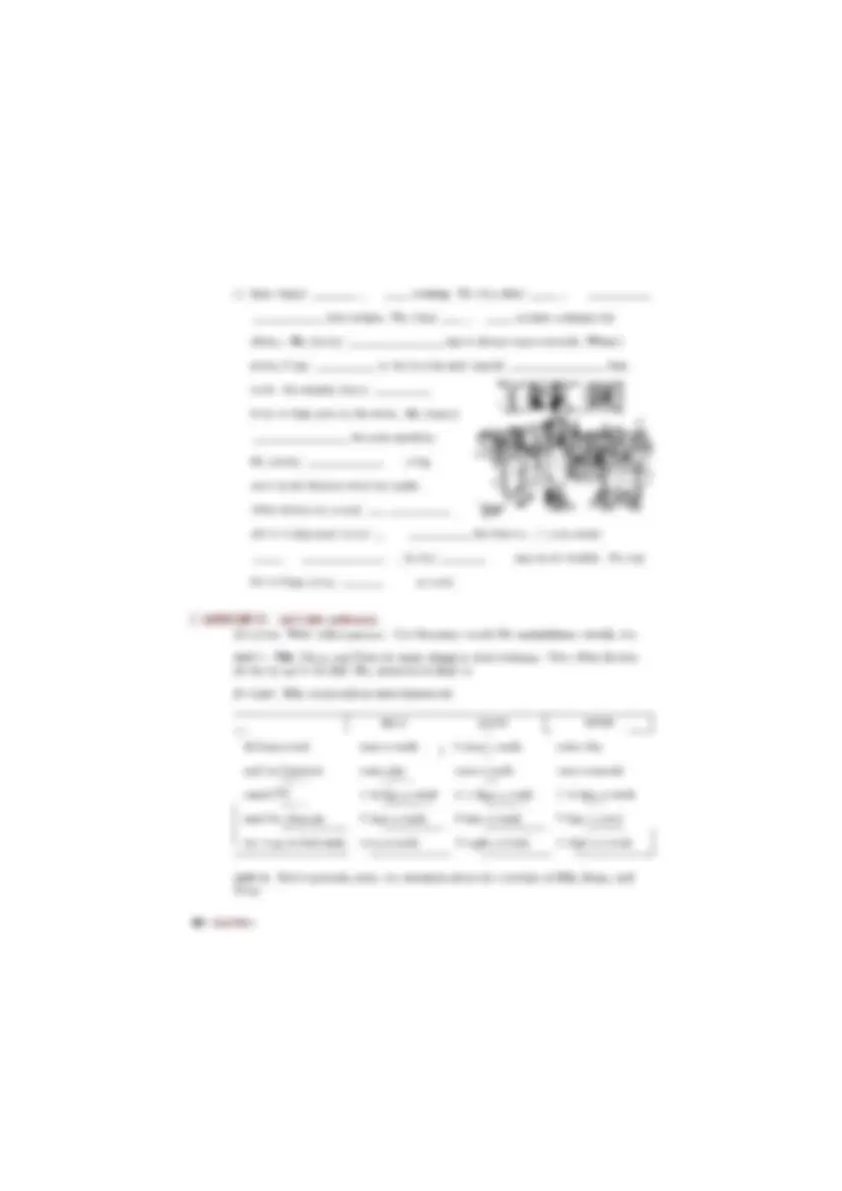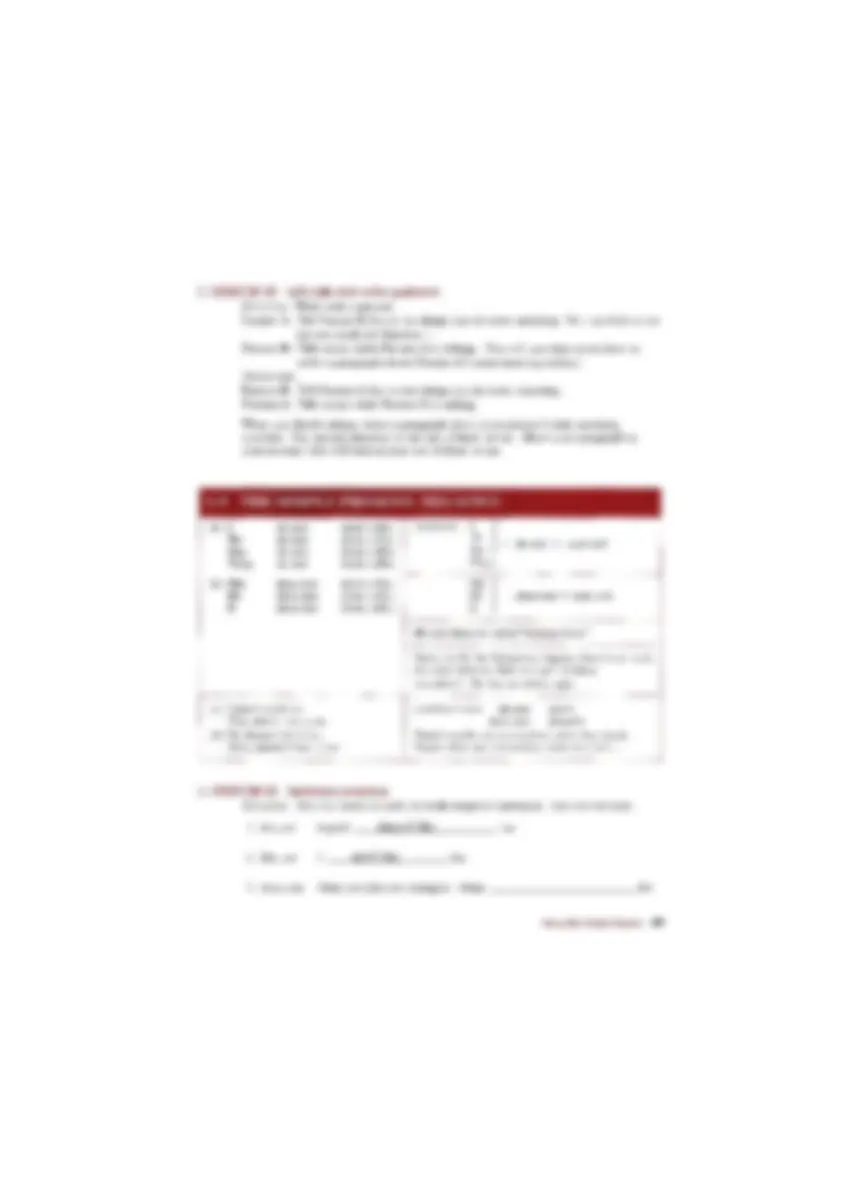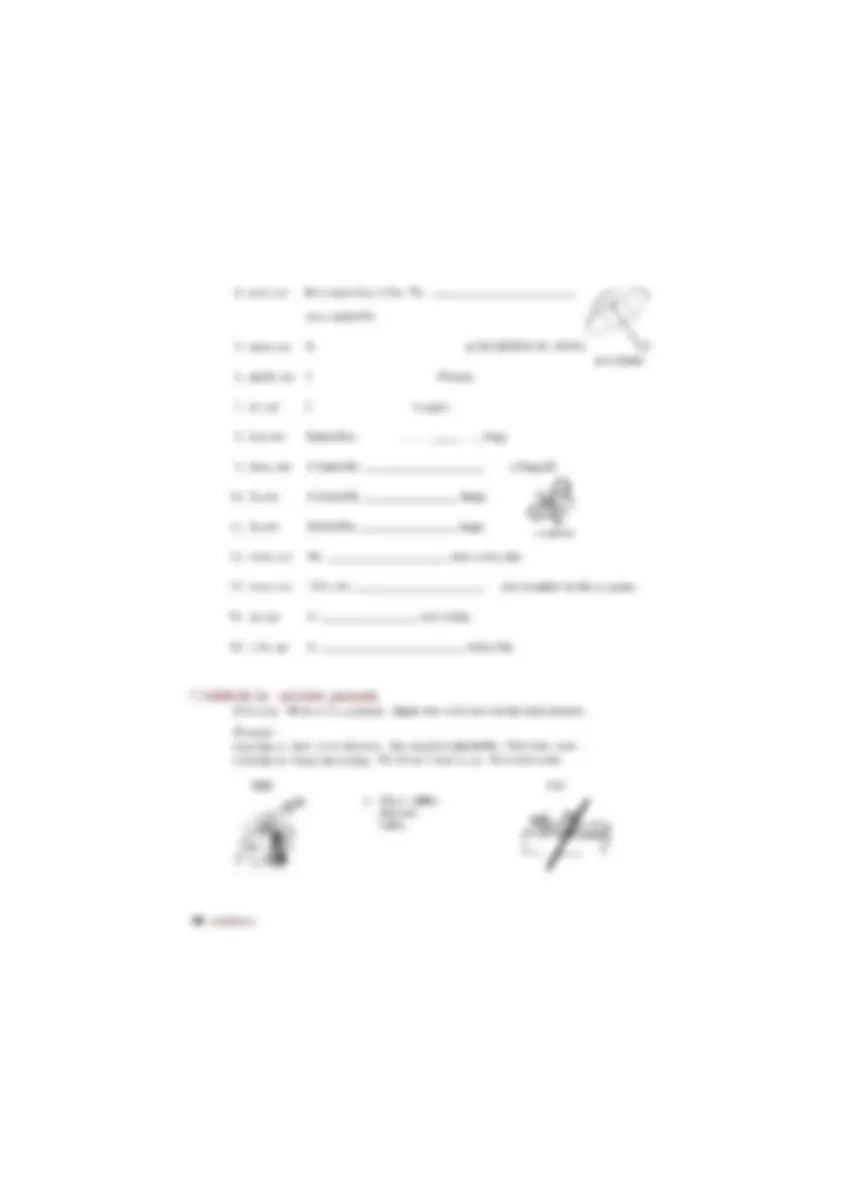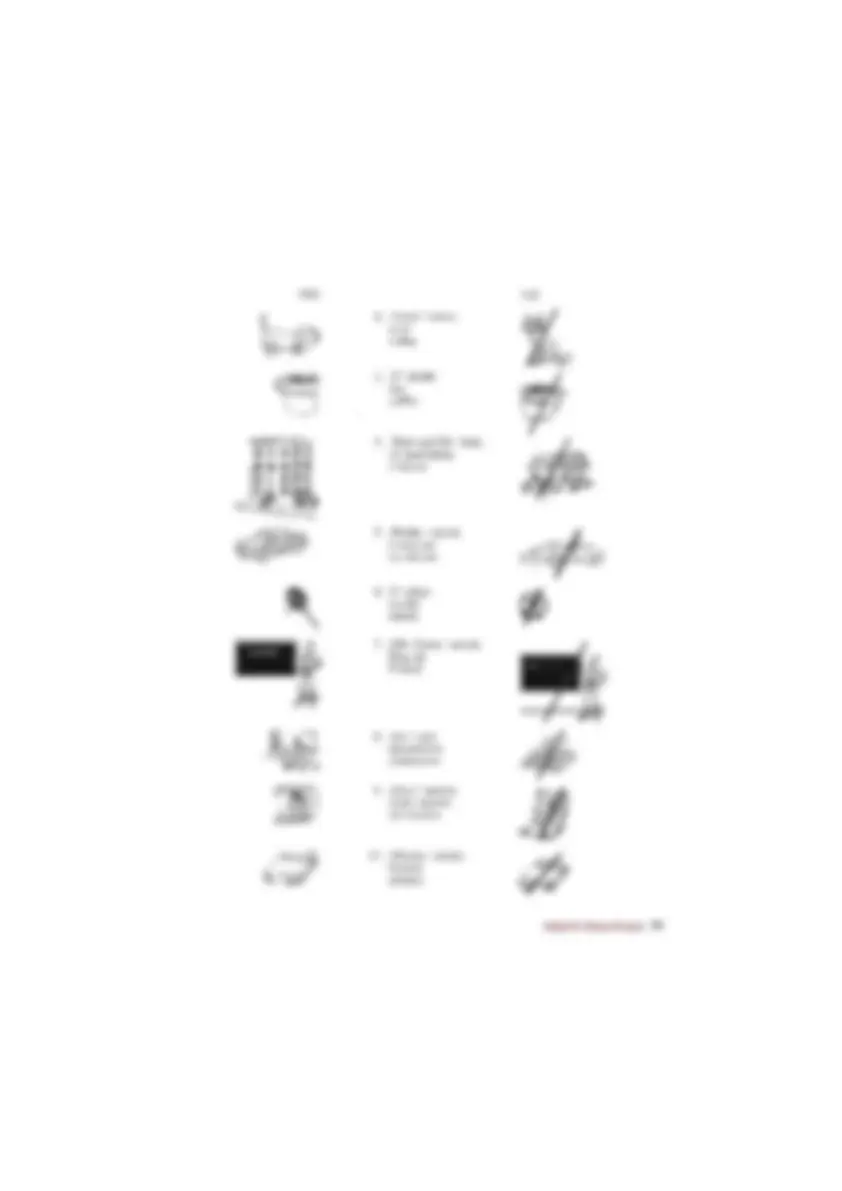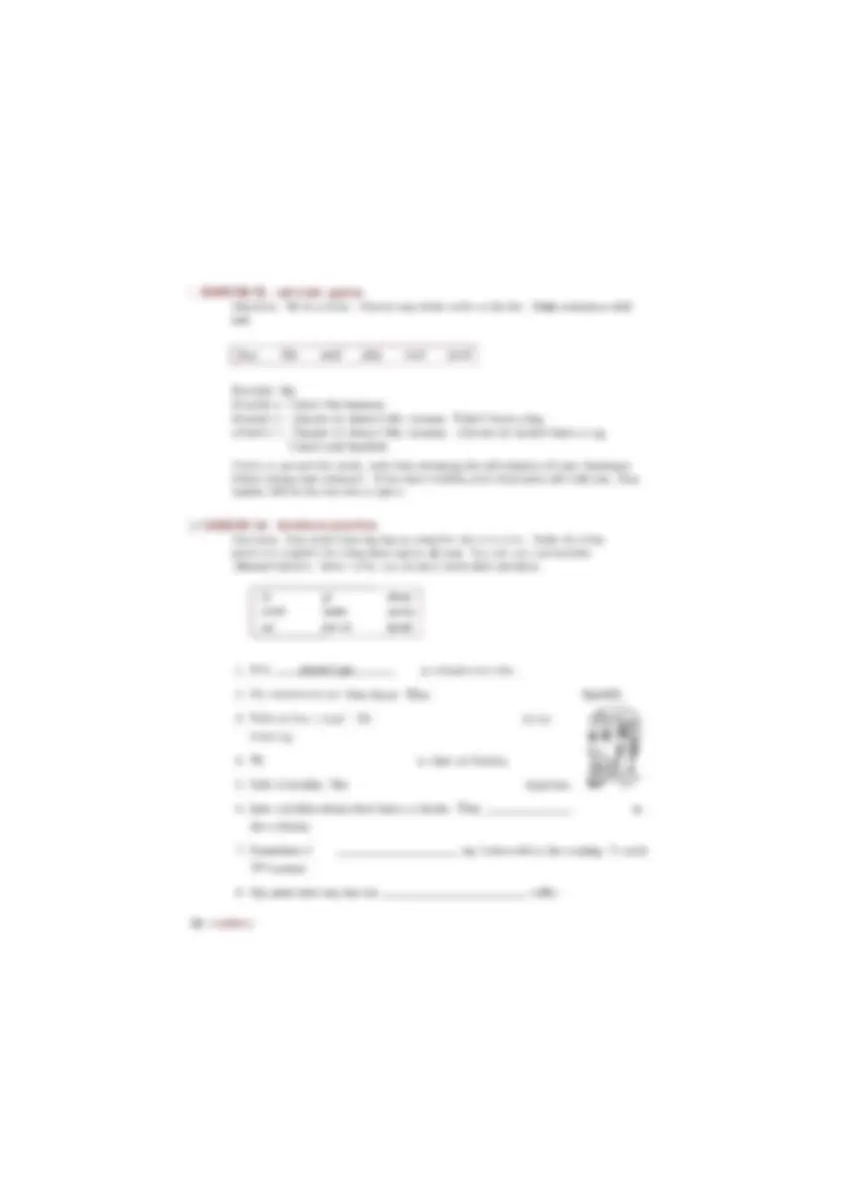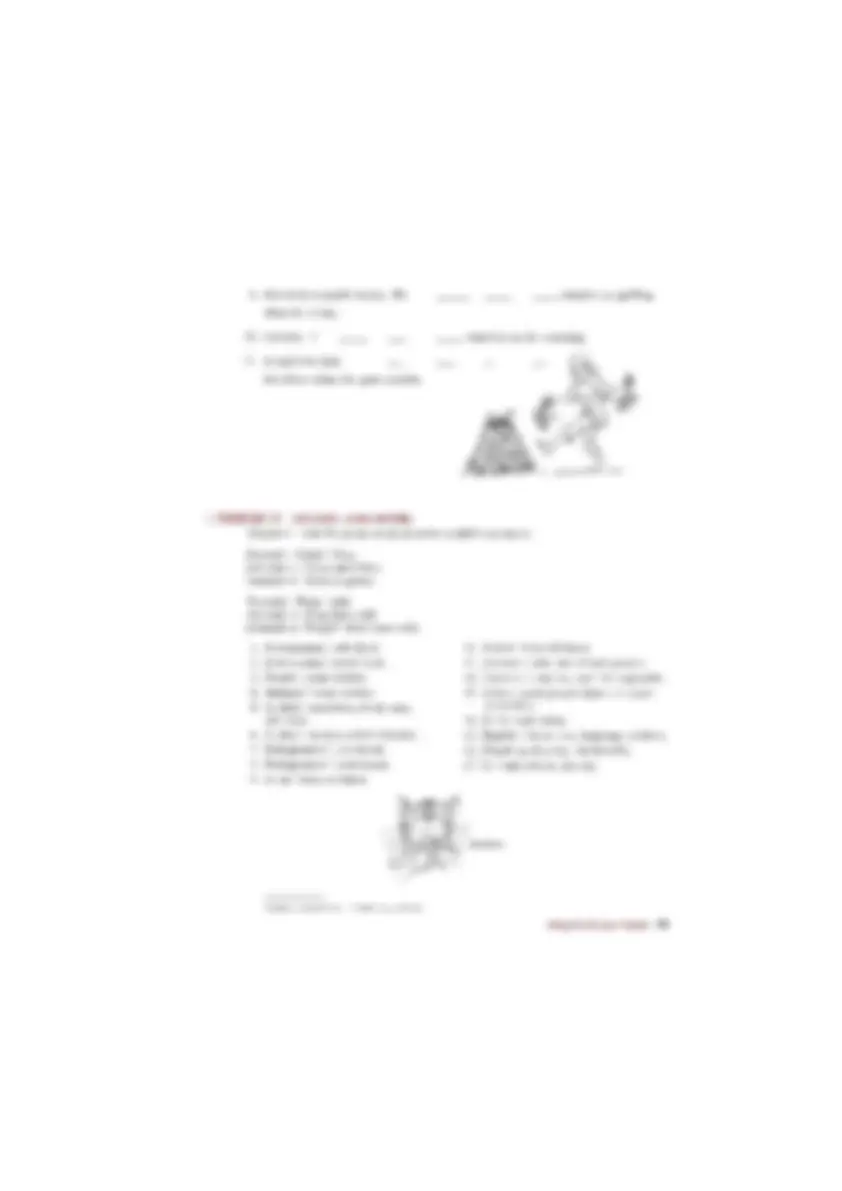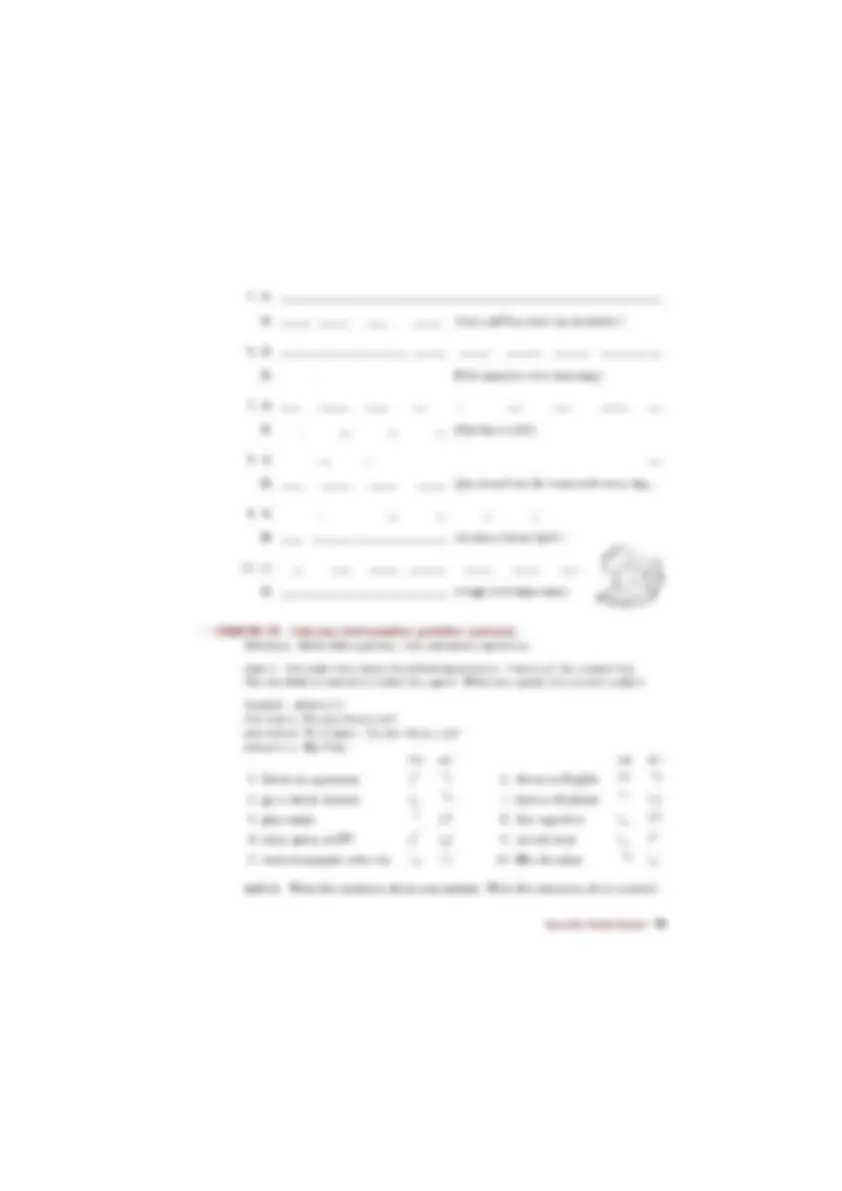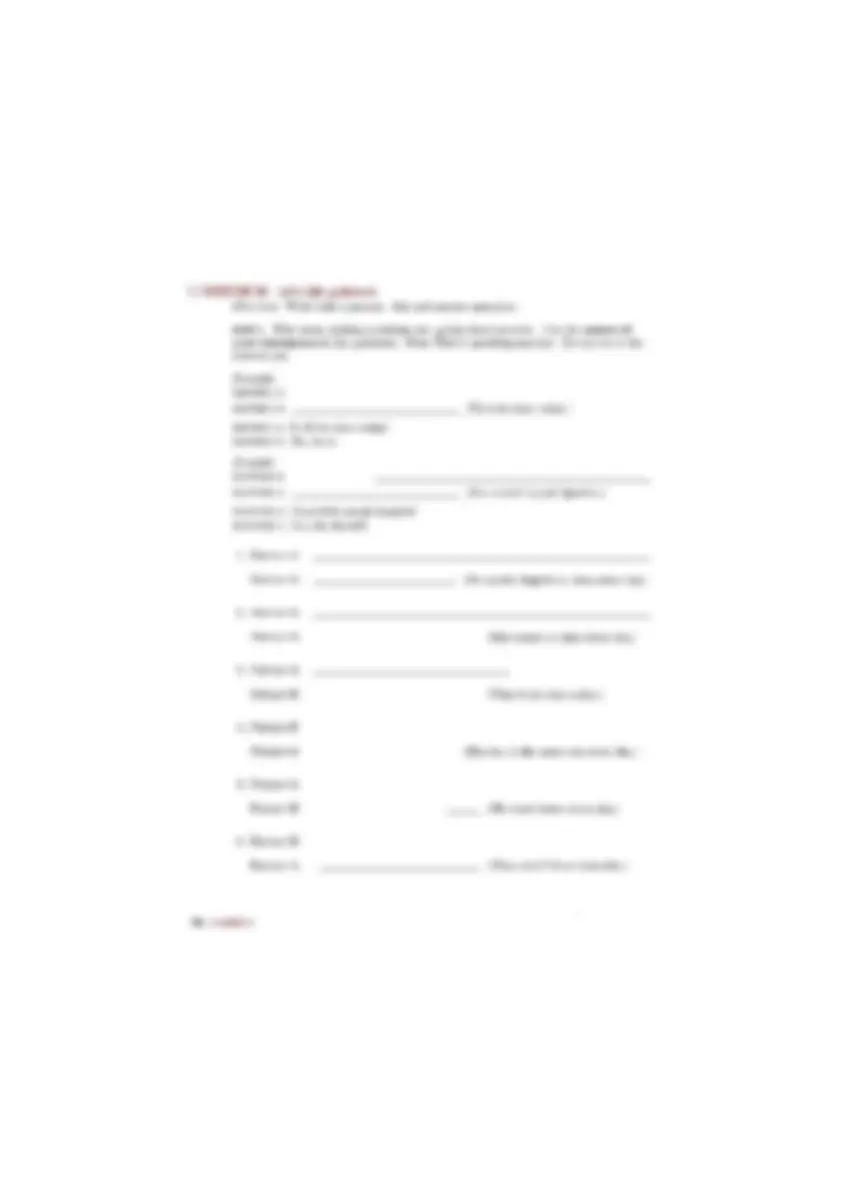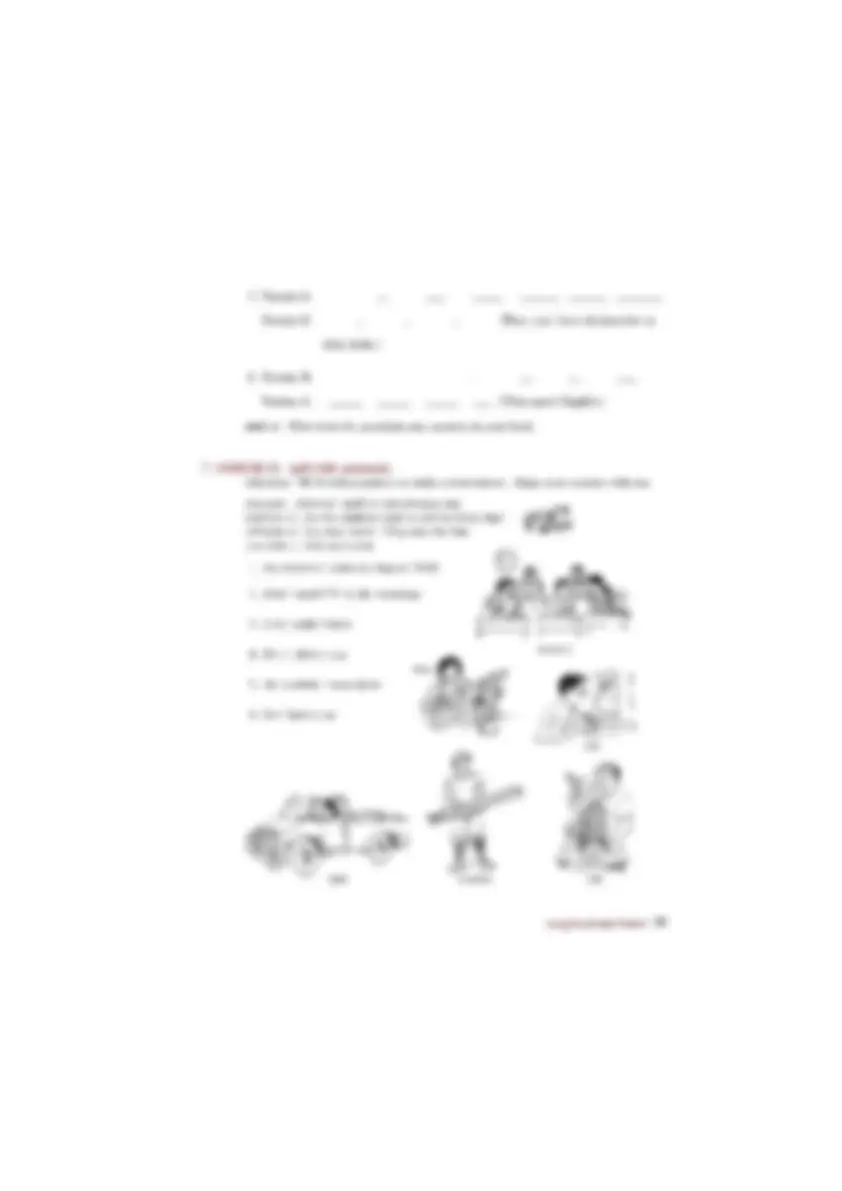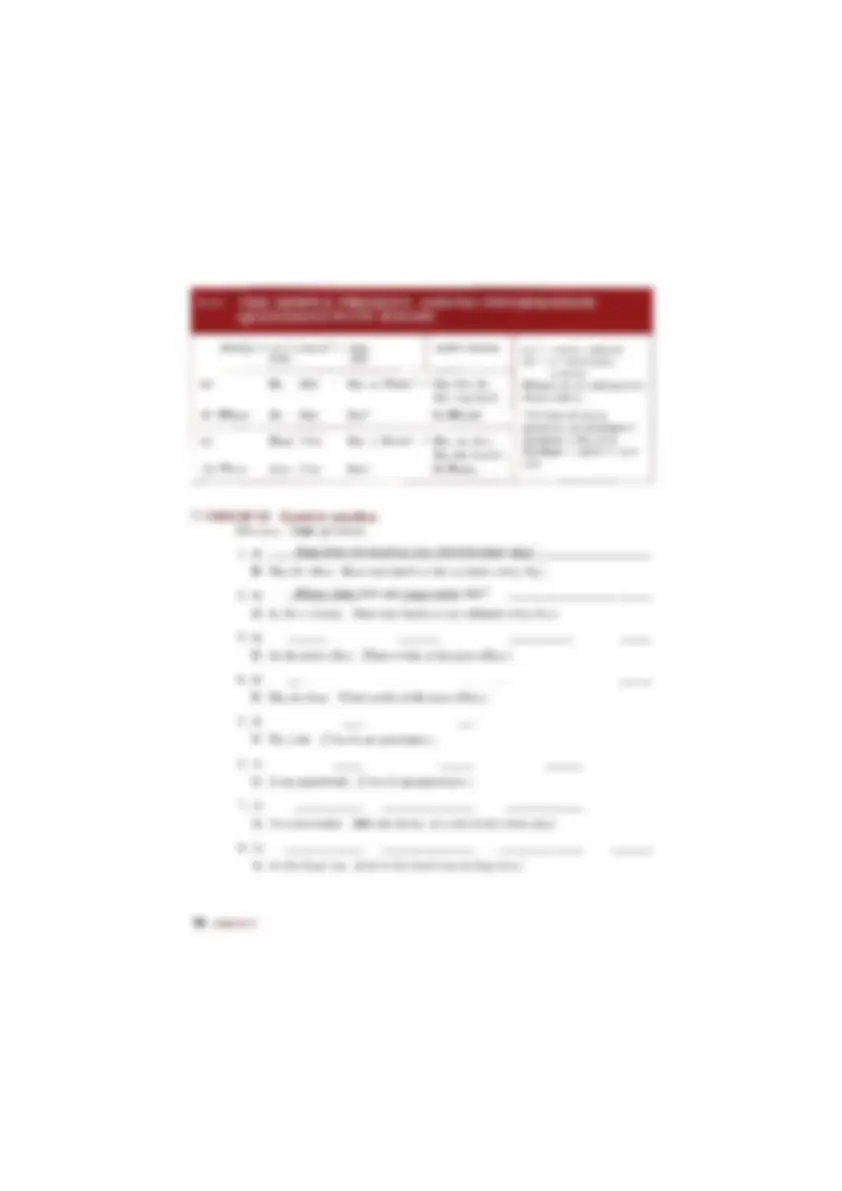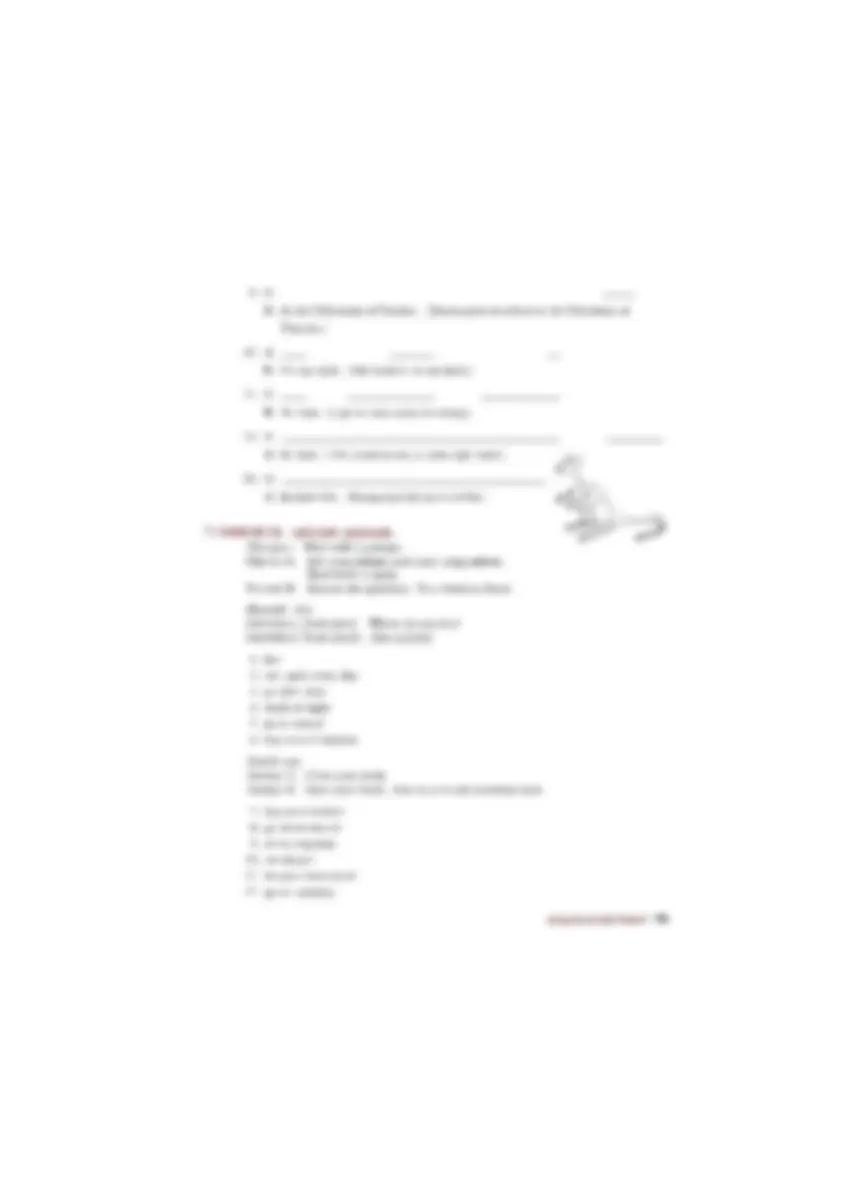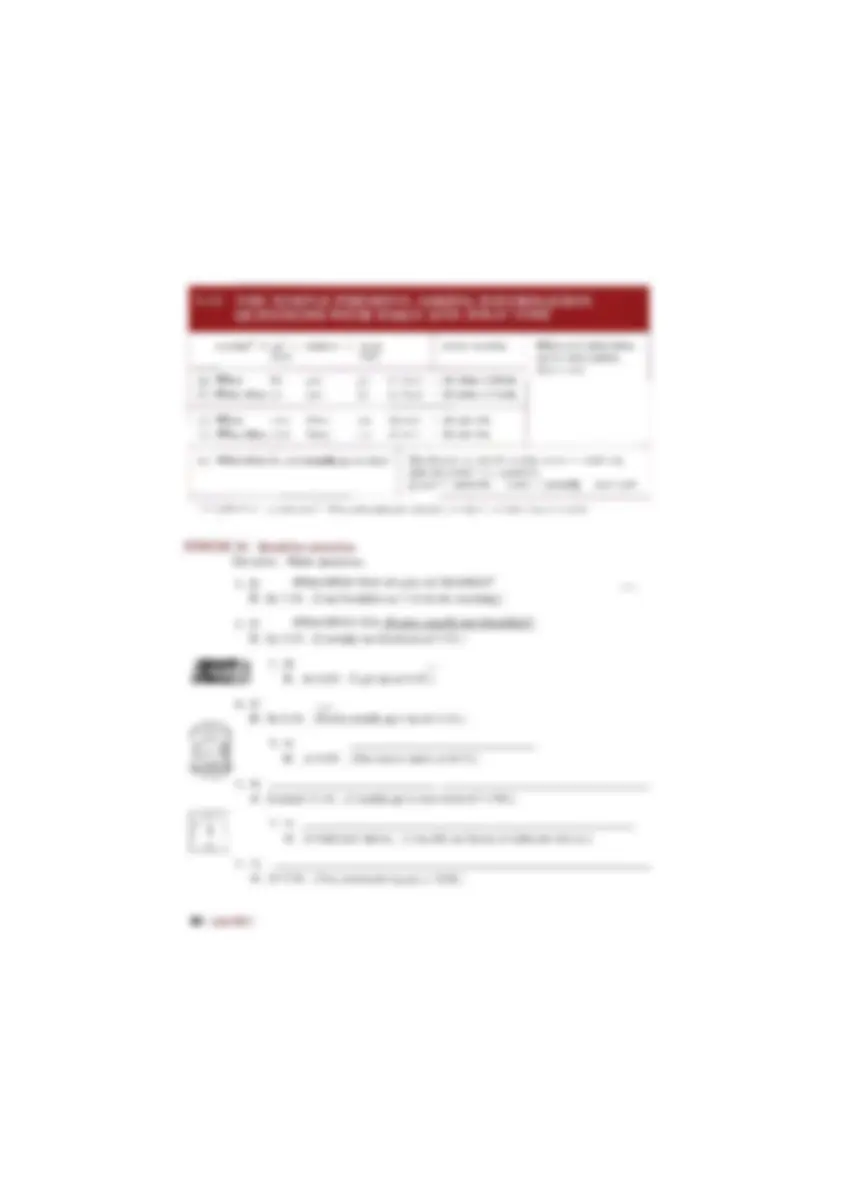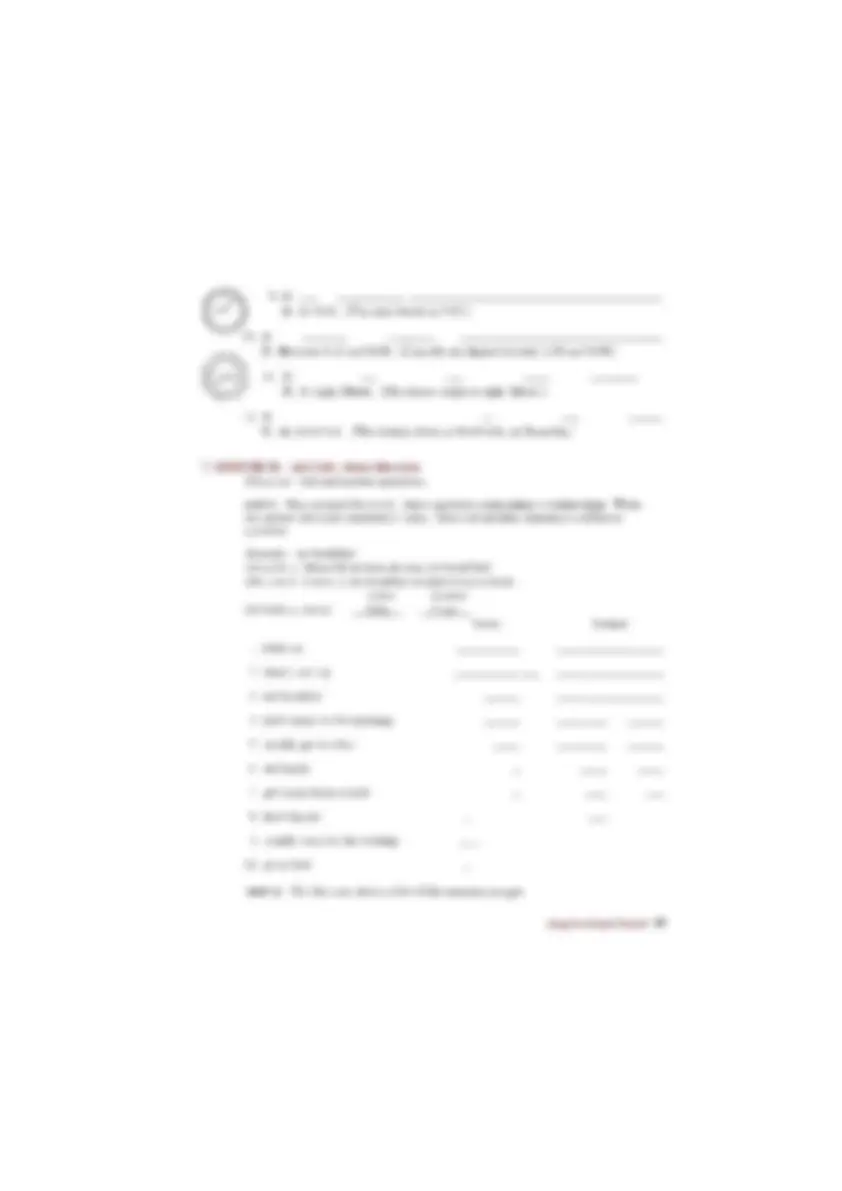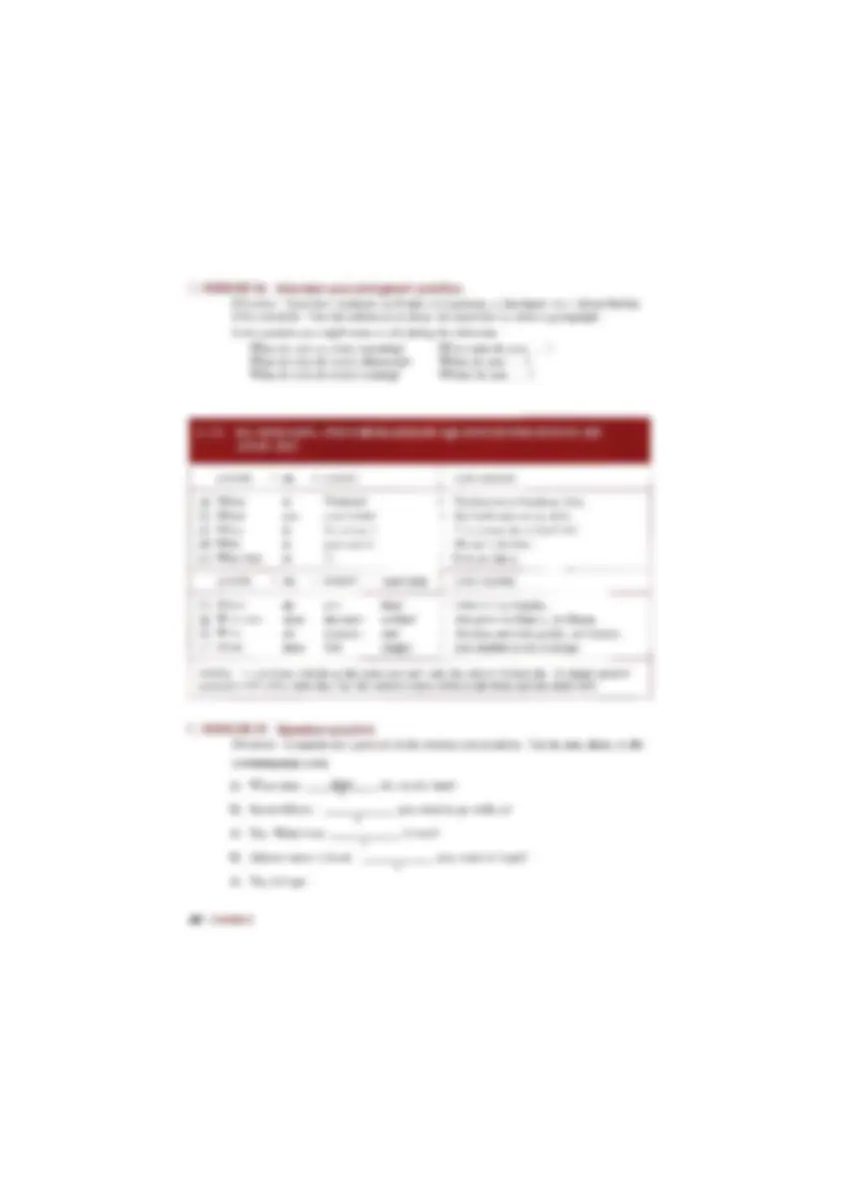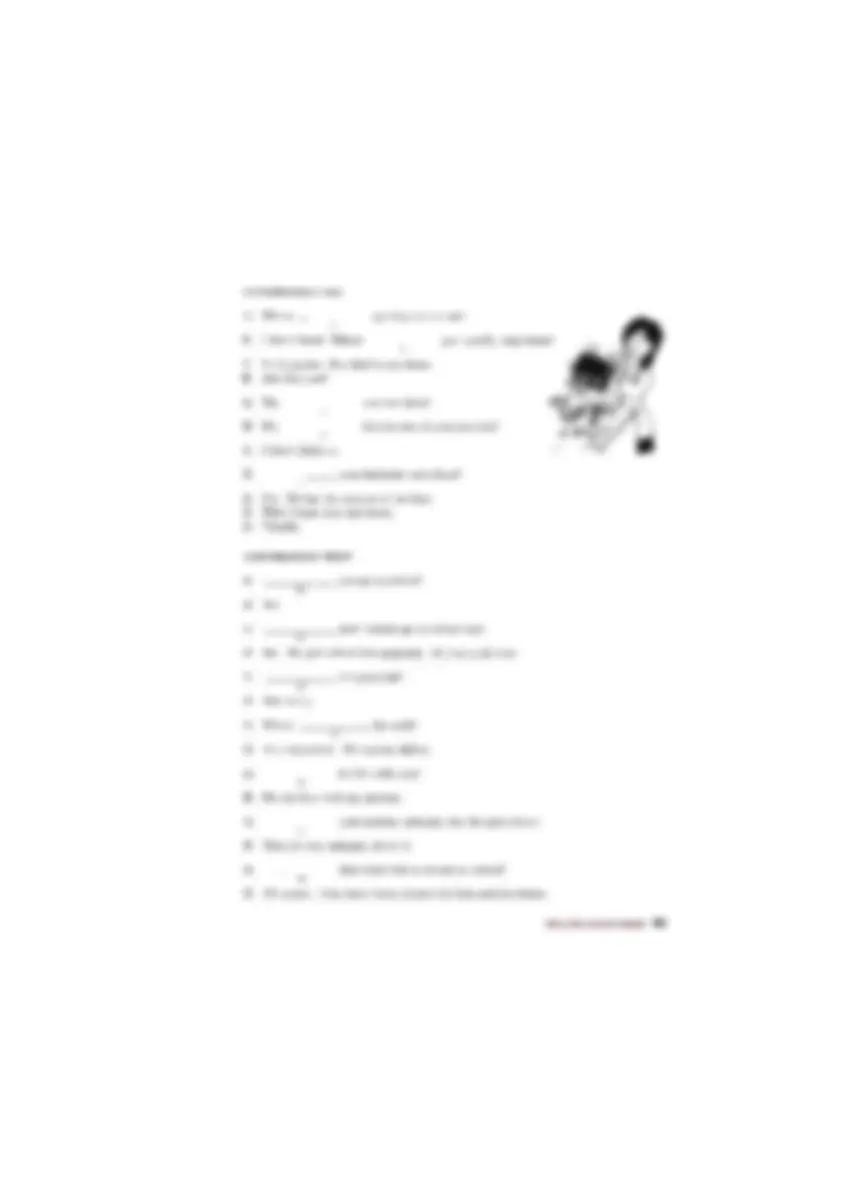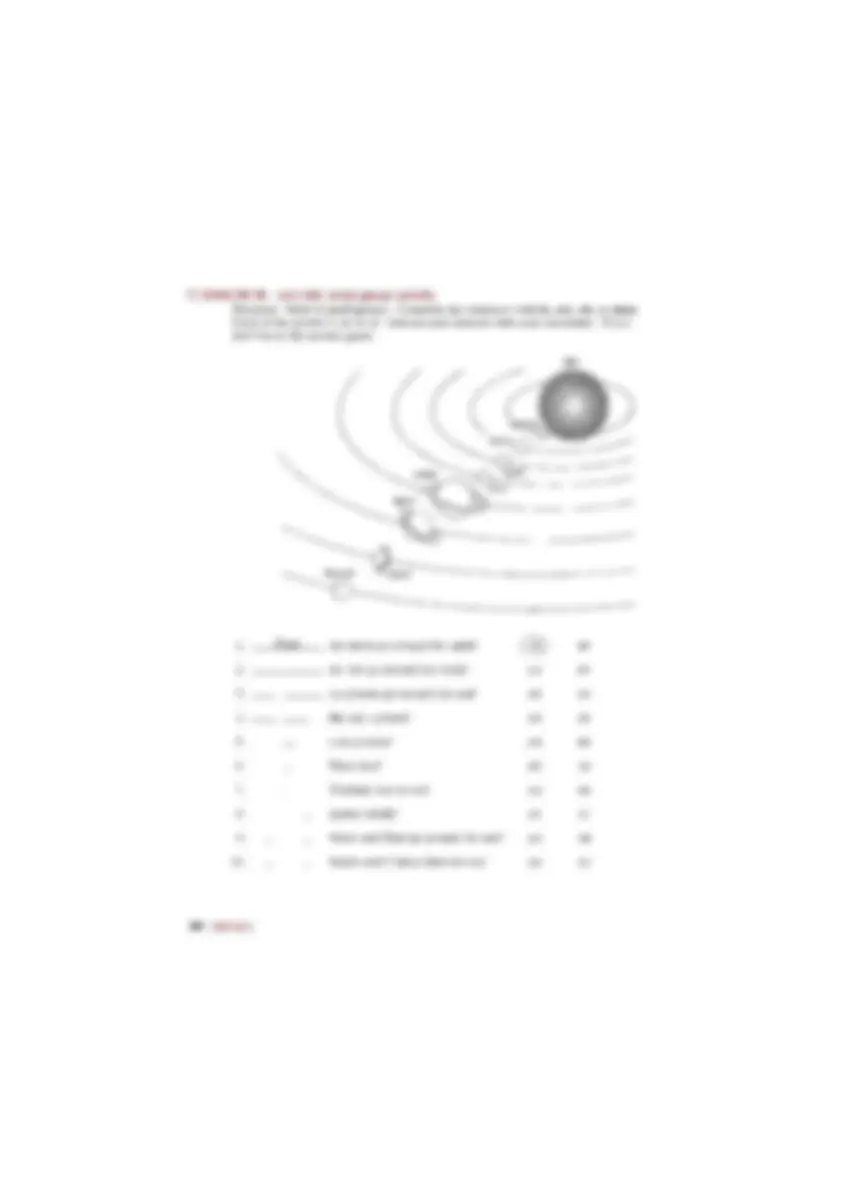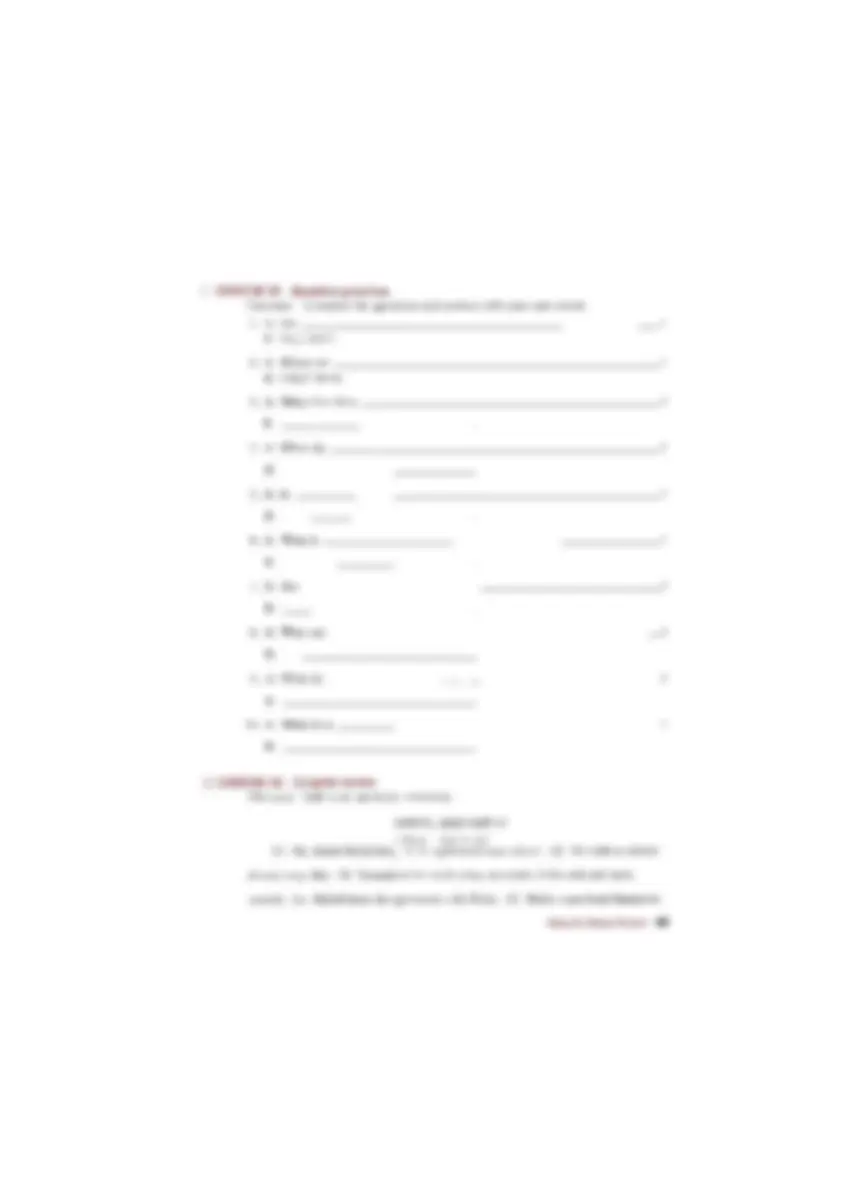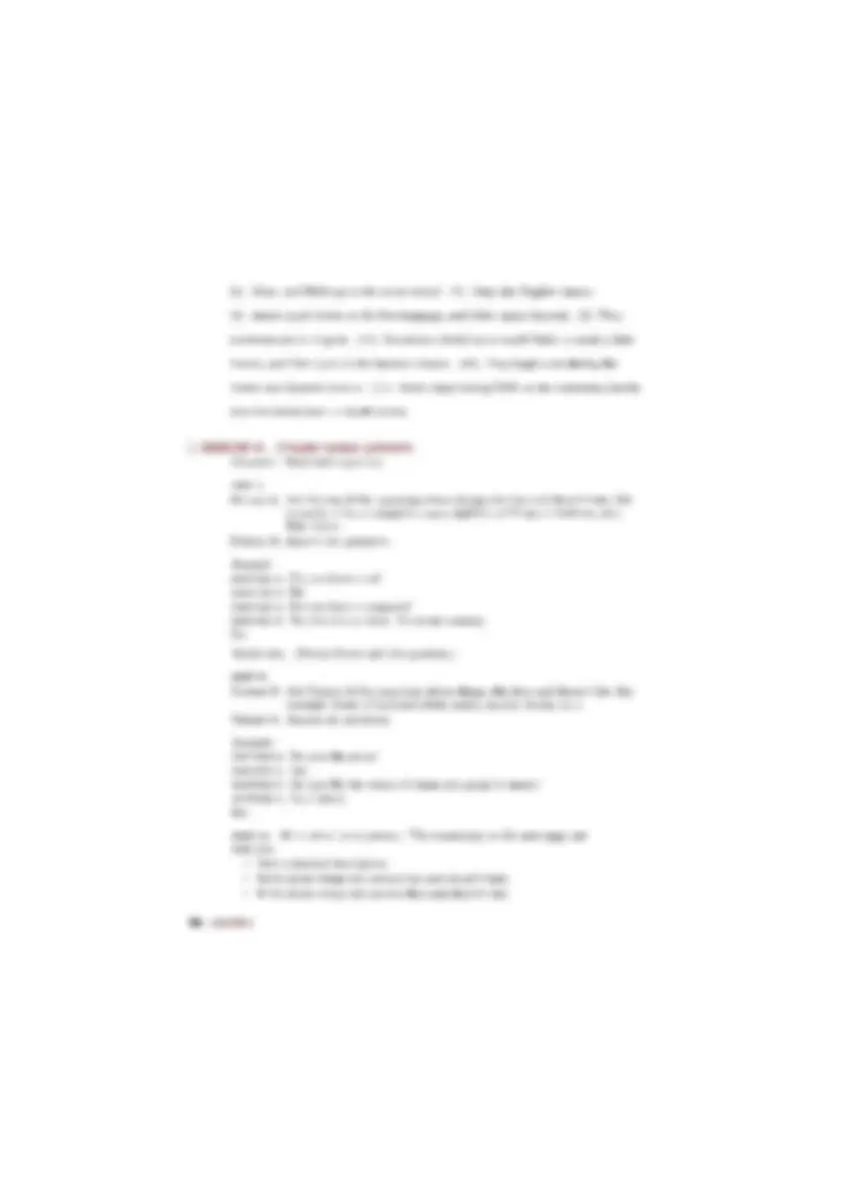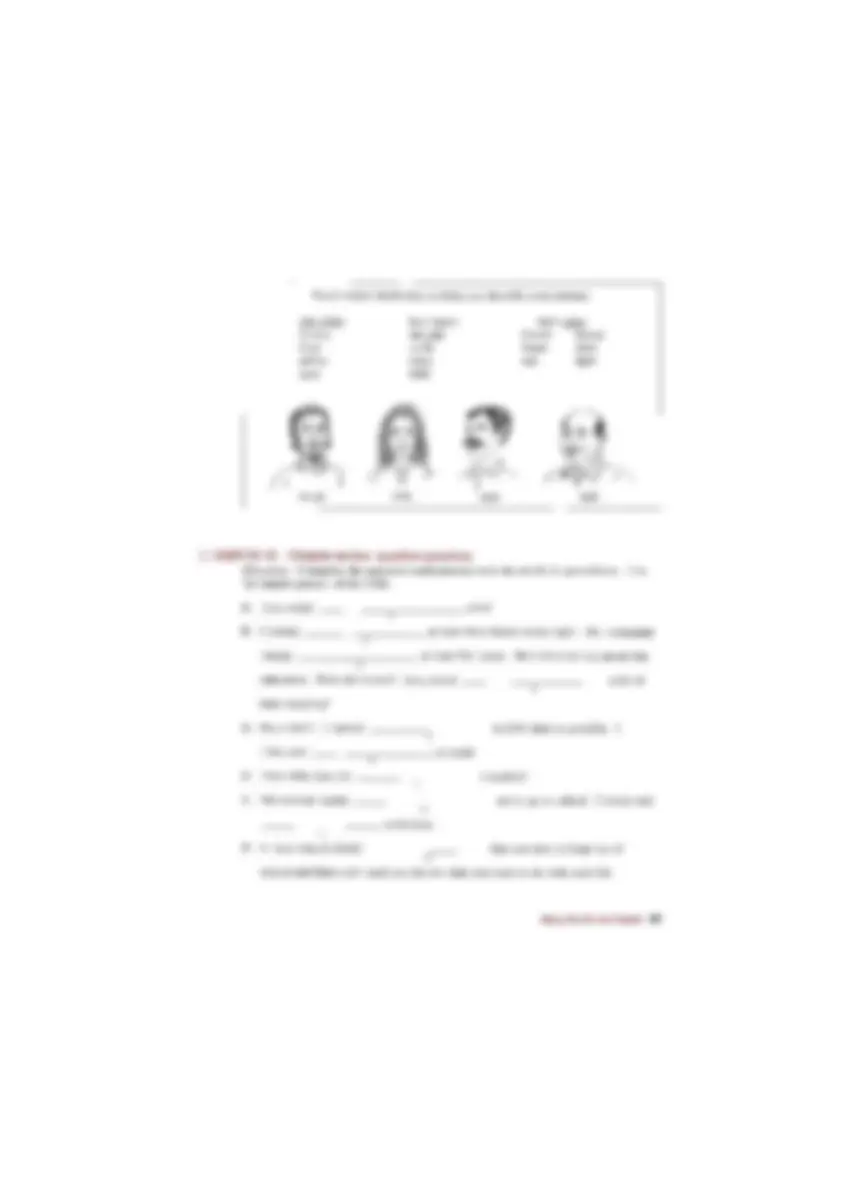Pré-visualização parcial do texto
Baixe Basic English Grammar 3rd Ed e outras Notas de estudo em PDF para Pedagogia, somente na Docsity!
INTERNATIONAL EDITION BASIC e NGLISH GRAMMAR Third Edition ith Answer Key Betty Schrampfer Azar Stacy A. Hagen Phecogragh By Cela Baram Dear ESL/EFL colleagues, Tonce met a teacher who had recently used one of my texts in her cla; students said to her, “Thank you for teaching me the secrets of English” . Atthe end of the term, one of her I still smile when 1 think of that comment. Of course, we know there are no “secrets” but T think T understand what the student meant—that it's sometimes helpful to understand what's going on undemeath the surface of a language. A second language can scem so dizzving and random. A litile information about its patterns can help students make sense of it and give them a foundation for language growth. The first book in the Azar series was published in 1981. Tt was the blue book, Understanding and Using English Granunas, which grew out of many years of creating my own materials for my own classes. I then wrote two nther texts, the red and the black, creating The Azar Grammar Series. AJ of the texts have undergone revisions over the years with many evolutionary changes, especially in the use of more interactive and communicative activities. But throughout this time, the original vision remains as stated in the very first book: the goal is the development of ali usage skitls from a grammar base by giving clear grammar information and employing a variety of practice modes, from controlled response to open communicative interaction. When I published the first book, | haped maybe a few other teachers might find the textbook useful, too. In all honesty, I never imagined there were so many teachers like myself who found a gramimar-based skills approach to be effective and appropniate for their students. Tt turns out we are legion. During lhe naturalist approach heyday im the 80s and into the 90s, when advocates of zero grammar held sway, grammar instruction largely disappeared from school curricula for native speakers of English. But because of teacher support for grammar-based materials like mine, gtammar teaching did not disappear from cumicula for second language learners, Because of you, grammar is today a viable and vigorous component in the ESL/EFL classroom—much to our students” benefit. A great deal of current research shows that many if not most of our students benefit greatly from a grammar component blended with other approaches in a well-balanced program of second language instuction. Together wc have served our students well. My hat is off to you. Betty Azar Whidbey Island, Washington 2006 Basic English Grammar, Third Edition with Answer Key Copyright & 2006, 1996, 1984 by Berty Schrampfer Azar All rights reserved No part of this publication may be reproduced, stored in a rerrieval system, ar transmitted io any form or by any means, electronic, mechanical, phoracopying, recording, or otherwise, without the prior permission of the publisher Azar Associates Sheltey Hartle, Editor Susan Van Etten, Manager Pearson Education, 10 Bank Street, White Plains, NY 10606 Editorial manager: Pam Fishman Project manager: Margo Grant Development editor: Janet Johnston Production supervisor: Melissa Leyva Senior production editor: Robert Ruvo Director of manufacruring: Patrice Fraccio Senior manufacruring buyer: Nancy Flaggman Cover design: Pat Wosezyk “Text composition: Carlisle Communications, Ltd. Text fonv: 11/13 Plantin Hiustrations: Don Martineri Library of Congress Cataloging-in-Publication Data Azar, Bety Schrampfer, 1941- Basic English grammar / Betty Schrampfer Azar. 3rd ed. pem. ISBN 0-13-184937-9 (pbk.) — ISBN 0-13-184412-1 (pbk.) — ISBN 0-13-195734-1 (pbk.) — ISBN 0-13-195733-3 (pbk,) — ISBN 0-13-195436-9 Cpbk.) — ISBN 0-13-195350-8 (pbk.) -- ISBN 0-13-184939-5 (pbk.) — ISBN 0-13-184940-9 (obk) 1. English language-Textbooks for foreign speakers. 2. English language--Grammar--Problems, exercises, etc. L. Title. PE1128.496 2005 428,24--de22 2005014671 ISBN: 0-13-184937-9 789 10-CRK-09 08 ISBN: 0-13-195734-1 (International Edition with audio CDs) 789 10-CRK-09 08 ISBN; 0-13-195436-9 (International Edition) 345678910-CRK-09 08 07 06 CONTENTS Preface to the Third Edition Acknowledgment .. «xi Xv Chapter) USING BE 1-1 Noun + is + noun: singular 1-2 Noun + are + noun: plural 3 Pronoun + be + noua 4 — Contractians with be -5 Negative with be 6 7 8 at Be + adjective Be + a place Summary: basic sentence patterns with be Chapter2 USING BE AND HAVE 2-1 Yesino questions with be 2-2 Short answers to yes/no questions . 2-3 Questions with be: using where 2-4 Using have and has 25 Using my, your, his, her, our, their .,. 2-6 Using this and that 2-7 Using theseand those ........cccc. 2-8 —Asking questions with what and who + be .. Chapter3 USING THE SIMPLE PRESENT 3-1 Form and basic meaning of the simple present tense 3-2 Using frequency adverbs: always, usually, often, sometimes, seldom, rarely, never ...cciccccrcrtatacenentsacerrrecerrers 3-3 Other frequency expressions 3-4 Using frequency adverbs with be .. 3-5 Spelling and pronunciation of final -es 3-6 —Adding final -s/-es to words that end in -y.. 3-7 Irregular singular verbs: has, does, goes . 3-8 Spelling and pronunciation of final -s/-es . 3-9 The simple present: negative Chapter 8 Chapter 9 Chapter 10 Chapter 11 EXPRESSING PAST TIME, PART 1 si 8-2 8-3 8-4 8-5 8-6 8-7 8-8 89 8-10 8-1 Using be: past time Past of be: negative Past of be: questions “The simple past tense: using -ed Past time words: yesterday, last, and ago ... “The simple past: irregular verbs (Group 1) . The simple past: negative ......... The simple past: yes/no questions ... Irregular verbs (Group 2) Irtegular verbs (Group 3) Irregular verbs (Group 4) EXPRESSING PAST TIME, PART 2 9-1 9-2 9-3 9.4 9-5 9-6 9-7 9-8 9-9 S-10 911 92-12 The simple past: using where, when, what time, and qwhy 252 Questions with what 004. 257 Questions with who ....... cerca crer 260 Irregular verbs (Group 5) ... . 264 Irregular verbs (Group 6) 266 Irregular verbs (Group 7) 269 Before and after in time clauses 273 When in time clauses 276 The present progressive and the past progressive .. 278 Using while with the past progressive... .. 281 While vs. iwhen in past time clauses .... . 282 Simple past vs. past progressive 284 EXPRESSING FUTURE TIME, PART 1 10-1 to-2 10-3 10-4 10-5 10-6 10-7 10-8 10-9 294 299 301 Future time: using be going to Using the present progressive to express future time .. Words used for past time and future time Using « couple ofor a few with ago (past) and ir (future) .. Using today, tonight, and this + morning, afternoon, evening, week, month, year 307 Future time: using «vil. .. 310 Asking questions with will .. .312 Verb summary: present, past, and future 316 Verb summary: forms of be. .....cicicc ls isca rear rcrrrãs 318 EXPRESSING FUTURE TIME, PART 2 1-1 11-2 11-3 114 11-5 11-6 Mayv/Might vs. quêll ..ccrecrs cerne rasa rara crerra renan 325 Maybe (one word) vs. may be (two words) -. 327 Future time clauses with before, after, and when .,..... 334 Clauses with 27 336 Expressing habitual present with time clauses and ifclauses 339 Using what + a formofdo ... . 342 CONTENTS vii Chapter 12 MODALS, PART 1: EXPRESSING ABILITY Chapter 13 Chapter 14 Chapter 15 Chapter 16 viii CONTENTS 12-1 12-2 12-3 12-4 12-5 12-6 12-7 12-8 12-9 Using con Pronunciation of can and car't .. -. 356 Using can: questions .. 357 Using Rrow how to ....... RP 360 Using could: pastofcan ... 362 Using beableto ......... 365 Using very and toa + adjective . .. 368 Using two, too, and to... cc clic cics narrrrane raras 373 More about prepositions: et and ir for place ....cccicicirsiciticis 374 MODALS, PART 2: ADVICE, NECESSITY, REQUESTS, SUGGESTIONS 13-) 13-2 13-3 134 13-5 13-6 13-7 13-8 13-9 Using should Using have + infinitive (have to/has to) .. Using must ..cciisiccilcs scr Polite questions: may 1, could I, and can E .. 391 Polite questions: could you and tould you errrrra ro 393 Imperative sentences ,.........c.... Certa ... 305 379 Cerri rar 383 387 Modal auxiliaries 398 Summary chart: modal axillaries and similar expressions ......cicccos 399 Usinglet's ciliar arara rrenan 402 NOLINS AND MODIFIERS 14-1 Modifying nouns with adjecrives and nouns .. 405 14-2 Word order of adjecrives 410 14-3 Expressions of quantity: al of, most of, some of, abmostallof ....... 415 14-4 Expressions of quantity: subject-verb agreement .. .. 417 14-5 Expresstons of quantity: one of, none of ereta 419 14-6 Indefinite pronouns: nothing and no one ..ciciciiciicicccrtrriva 423 14-7 Indefinite pronouns: something, someone, anything, anyone ....... 424 14-8 Usingevery ........... 426 14-9 Linking verbs + adjectives . oc 428 14-10 Adjectives and adverbs ......ccccscrs. 431 POSSESSIVES 15-1 Possessive nouns 436 15-2 Poessessive: irregular piural nouns ......... cc, 439 15-3 Possessive pronouns: mine, yours, his, hers, ours, theirs . 442 15-4 Questions with whose 446 MAKING COMPARISONS 16-1 Comparisons: using the same (as), similar (to), and (different from) 449 l6-2 Comparisons: using like and ahike ... 16-3 The comparative: using -er and more 16-4 The supertative: using -est and most Preface to the Third Edition Basic English Grammar is a beginning level ESI/EFL developmental skills text in which grammar serves as the springboard for expanding learners” abilities in speaking, writing, listening, and reading. It uses a grammar-based approach integrated with communicative methodologies. Starting from a foundation of understanding form and meaning, students engage in meaningful communication about rea! actions, real things, and their own real lives in the classtoom context. “Teaching grammar is the art of helping students look at how the language works and engaging them in activities that enhance language acquisition in all skill areas. “The direct teaching of gramínar to academically oriented adults and young adults is one component of a well-balanced program of second language instruction and can, much to students” benefit, be integrated into curricula that are otherwise content /context-based or task-based. “This third edition has the same basic approach as earlier editions, with new material throughout, It has * student-friendly grammar charts with clear information that is easily understood by beginning students. * numerous exercises to give students lots of practice. * more illustrations to help students learn vocabulary, understand contexts, and engage in communicative language tasks. “ reorganized chapters with expanded practice for high-frequency structures. * the option of a student text with or without an answer key in the back. In addition, the new edition has a greater variety of practice modes, including * greatly increased speaking practice through extensive use of interactive pair and group work, * the addition of numerous listening exercises, accompanied by audio CDs, with listening scripts included in the back of the book. * more activities that provide real communication opportunities. A new Workbook accompanies the student text to provide additional self-study practice. À Pest Bank is also available. HOW TO USE THIS TEXT GRAMMAR CHARTS “The grammar charts present the targer structure by way of example and explanation. “Teachers can introduce this material in a variety of ways: a. Present the examples in the chart, perhaps highlighting them on the board. Add additional examples, relating them to students” experience as much as possible. For example, when presenting simple present tense, talk about what students do every day: come to school, study English, etc. b. Elicir target structures from students by asking questions. (For example, for simple past tense, ask: What did you do last night?) Proceed to selected examples in the chart. c. Instead of beginning with a chart, begin with the first exercise after the chart, and as you work through it with students, present the information in the chart or refer to examples in the chart. d, Assign a chart for homework; students bring questions to class. This works best with a more advanced class. e. Some charts have a preview exercise or pretest. Begin with these, and use them as a guide to decide what areas to focus on. When working through the chart, you can refer to the examples in these exercises. With all of the above, the explanations on the right side of the chart are most effective when tecast by the teacher, not read word for word. Keep the discussion focus on the examples. Students by and large learn from examples and lots of practice, not from explanations. In the charts, the explanations focus attention on what students should be noticing in the examples and the exercises. FIRST EXERCISE AFTER A CHART In most cases, this exercise includes an example of each item shown in the chart. Students can do the exercise together as a class, and the teacher can refer to chart examples where necessary. More advanced classes can complete it as homework, The teacher can use this exercise as a guide to see how well students understand the basics of the target structure(s). SENTENCE PRACTICE These exercises can be assigned as either oral or written practice, depending on the ability and needs of the class. Many of them can also be done as homework or seatwork. LET*S TALK Each “Let's Talk? activity is designated as one of the following: pairwork, small group, class activity, Or interview. These exercises encourage students to talk about their ideas, their everyday lives, and the world around them, Examples for each are given so that students can easily transition into the activity, whether it be student- or teacher-led. xii PREFACE Janet Johnston was the finest editor an author could ever hope to work with. Wielding pencils of many colors (with purple seeming to be her personal favorite), she cheerfully held her authors to account for every single word they wrote. She saw the Azar Series through thousands of pages of manuscript and proof for more than fifteen years. Each published page bears the seal of her high standards and keen eye. Her delight in the process of shaping text was contagious and her technical expertise extraordinary, making all of us who worked with her enthusiastically reach for our highest level of professionalism. They simply don't make editors like Janet anymore. Working with her has been a privilege and a joy. As we grieve her untimely death from breast cancer, we will deeply miss her good, sweet friendship as well as her editorial wizardry. Simply stared, Janer Johnston was, and will always remain, the best of the best. Berry Azar Stacy Hagen Shelley Hartle Sue Van Etten Xv CHAPTER | Using Be Whatis My name Where are I'm from vour name? is Yoko. you from? Japan. m < ( q [] EXERCISE 1. Let's talk: class activity. Directions: Ask your classmates their names. Write their first names in the spaces below. You can also ask them what city or country they are from. FIRST NAME Crry OR COUNTRY 5. Redis color. 6. dictionary is book. 7 horelis building. 8. bearis animal, 9. bee is insect. 10. ant is insect. atree do tes dd a RE E [] EXERCISE 4. Sentence practice. Directions: Complete the sentences. Use a or an and the words in the list. animal country language city insect sport 1. Arabic is a language 2. Rome is a city 3, Acatis an animal 4. Tennis is 5, Chicago is 6. Spanish is 7, Mexico is . afiy 8. A cowis 9. Afiyis 10. Baseball is 11. China is 12. Russianis Using Be 3 O EXERCISE 5. Let's talk: small groups. Directions: Work in small groups. Choose a leader. Only the leader's book is open. Example: a language LEADER: Name a language. SPEAKER A: English is a language. SPEAKER B: French is a language. SPEAKER C: Arabic is a language, LEADER: SPEAKER SPEAKER B: Etc. Japanese is a language. : Spanish is a language. (Continue until no one can name another language.) !, an animal 4. a color 2. a sport 5. a country 3, an insect 6. acity NOUN + 4RE + NOUN (a) Cats are animals. Plural means “nwo, three, or more” Cats = à plural noun are = a plural verb animais = a plural noun (b) SINGULAR: PLURAL: a cat, an animal cats, animals Plural nouns end in -s. A and an are used only with singular nouns. (c) SINGULAR: PLURAL; a city, a country cities, countries Some singular nouns that end in -y have a special plural form: They omit the -y and add -ies.* NOUN and NOUN + ARE + NOUN (d) Canada and China are countries. (e) Dogs and cats are animals. “Two nouns connected by and are followed by are. Tn (dy: Canada is a singular noun. China is a singular noun. They are connected by and. Together they ate plural, i.e., “more than one” *See Chart 3-6, p. 63, for more information about adding -s/-es 10 words that end in «y. [1 EXERCISE 6. Sentence practice. Directions: Change the singular sentences to plural sentences. SINGULAR 1. An ant is an insect. + 2. A computer is a machine. — 4 CHAPTER 1 PLURAL Ants are insects. [] EXERCISE 8. Listening. (AR) Directions: Listen ta the sentences. Circle yes or no. Example: Cows are animals. (es) no Horses are insects. yes 1. ves no 4. yes no 7. yes no 2. yes no 5. yes no 8. yes no 3. yes no 6. yes no 9. ves no DO EXERCISE 9. Let's talk: pairwork Direcrions: Your partner will ask you to name something. Answer in a complete sentence. You can look at your book before you speak. When you speak, look at your partner. Example: Partner A Parner B 1. a country 1. two countries 2. an insect 2. a season PARTNER à: Name a country. PARTNER B: Brazil is a country. PARTNER A: Yes, Brazil is a country. Your turn now. PARTNER B: Name two countries. PARTNER a: Italy and China are countries. PARTNER B: Yes, Italy and China are countries. Your turn now. PARTNER A: Name an insect. PARTNER B: À bee is an insect. PARTNER A! Yes, à bee is an insect. Your turn now, PARTNER B: Name a season. PARTNER À: Etc, Remember: Sou can look at your book before you speak. When you speak, look at your partner. Partner À Partner B 1. a language 1. two cities 2. two languages 2. an island 3. a city 3. two countries in Ásia 4. an animal 4. a vegetable 5. wo seasons 5. a streer in this city 6 CHAPIER] SINGULAR PLURAL I eu PRONDUN + BE + NOUN PRONOUN + BE + NOUN he (a) T am a student. (£f) We are students. she = pronouns (b) You are a student. (g) You ore students. | É (e) She is astudent (h) They are students. | “E (d) He és astudent. they, (e) JH is a country. em is = forms of be are (1) Rita is in my class. She is a student. (GD) Tom is in my class. He is a student, (k) Rita and'Tom are in my class. They are students, Pronouns refer to nouns. In (i): she (feminine) = Rita. In (j): he (masculinç) = Tom. In (k): they = Rita and Tom. £1 EXERCISE 10. Sentence practice. Directions: Complete the sentences. Use a verb (am, is, or are). Use a noun (a student or students). 1. We 2.1 3. Rita are students 4. Rita and Tom 5. You (one person) 6. You (two persons) [1 EXERCISE 11. Let's talk: class activity. Diveceions: Close your books. Complete the sentences with a form of be + a studentistudents. Point to the student or students as you name them. Example: TEACHER: (name of a student tn the class) Yoko .... STUDENT: (The student poinis to Yoko.) Yoko is a student. I We . They You OG a batom m o . (name of a student) « (name of a student) and (name of a student) . (name of a student) and I . (name of a student) - (name af à student) and (name of a student) . (name of a student) and (name of a studeni) and (name of a student) Using Be 7 
